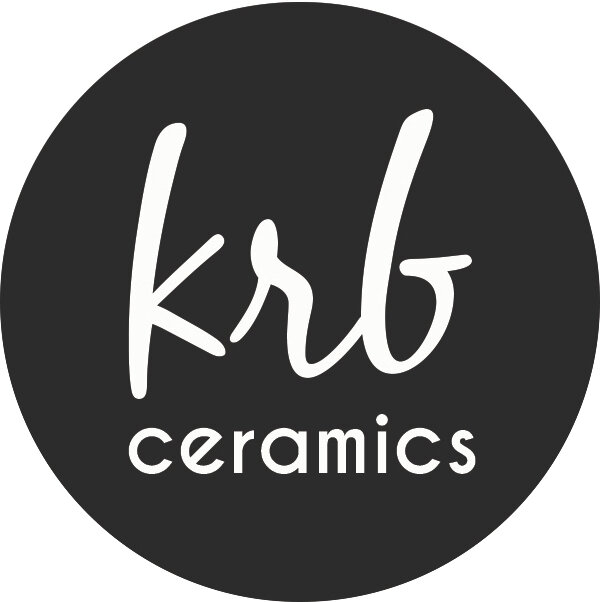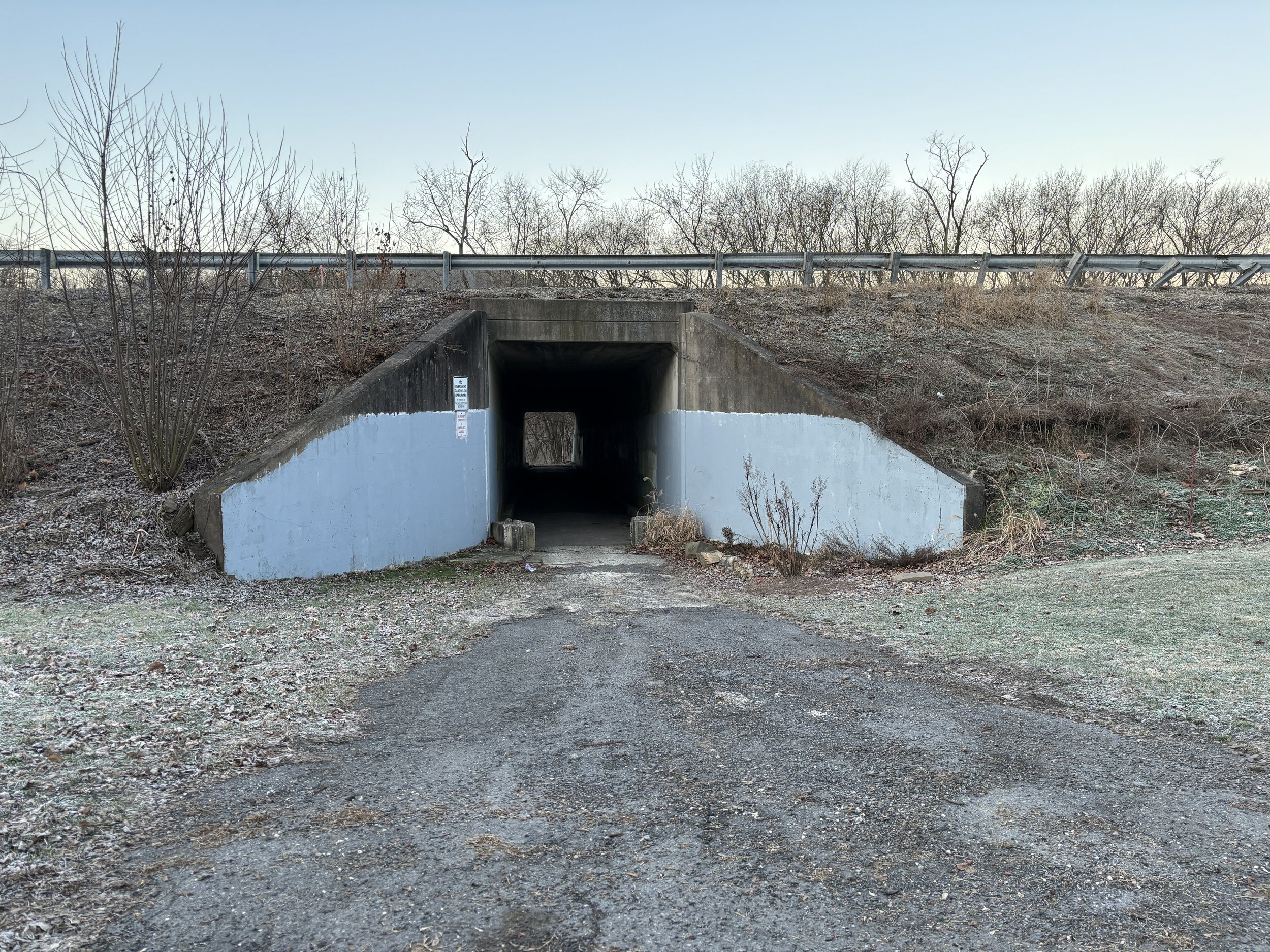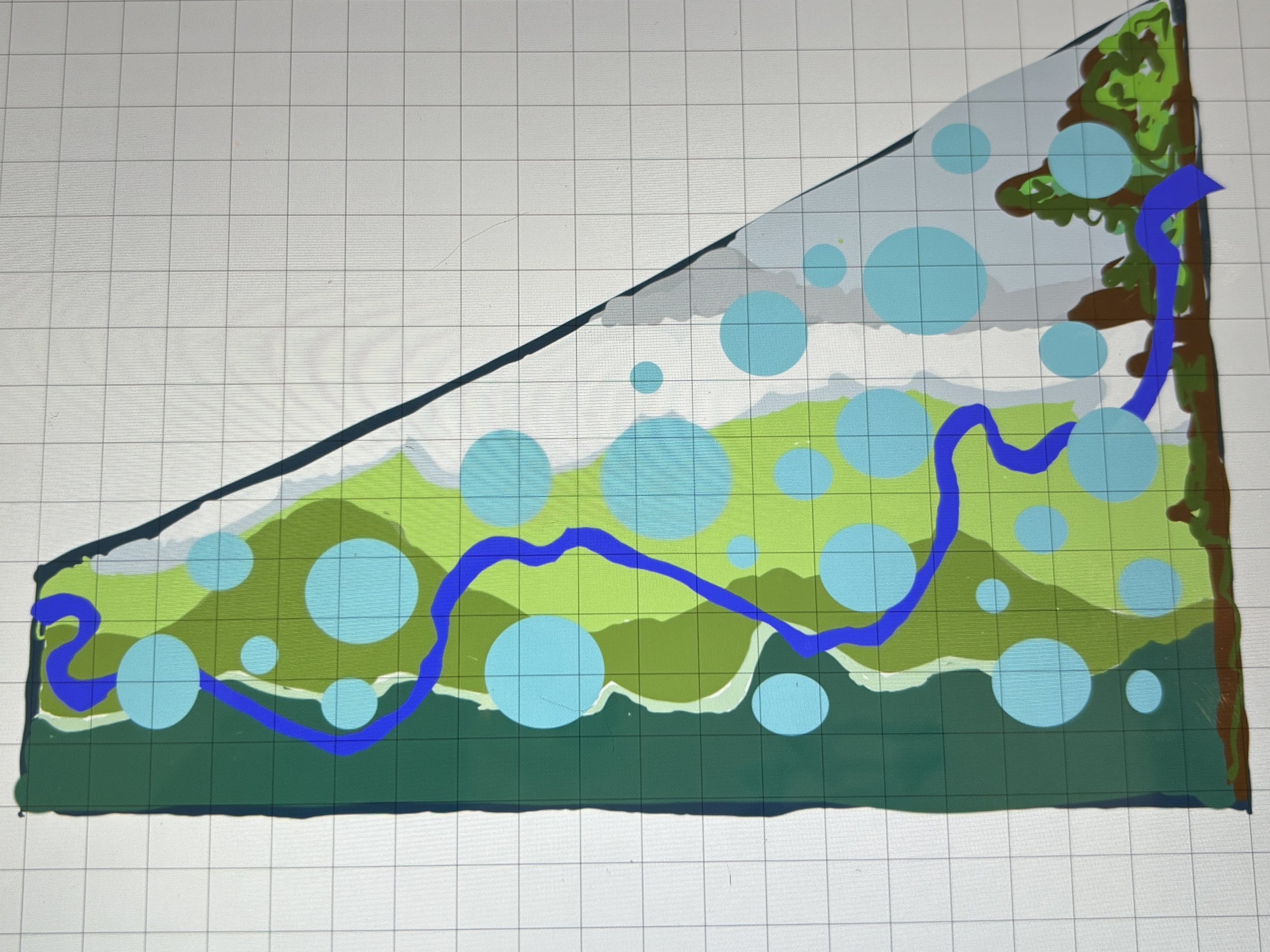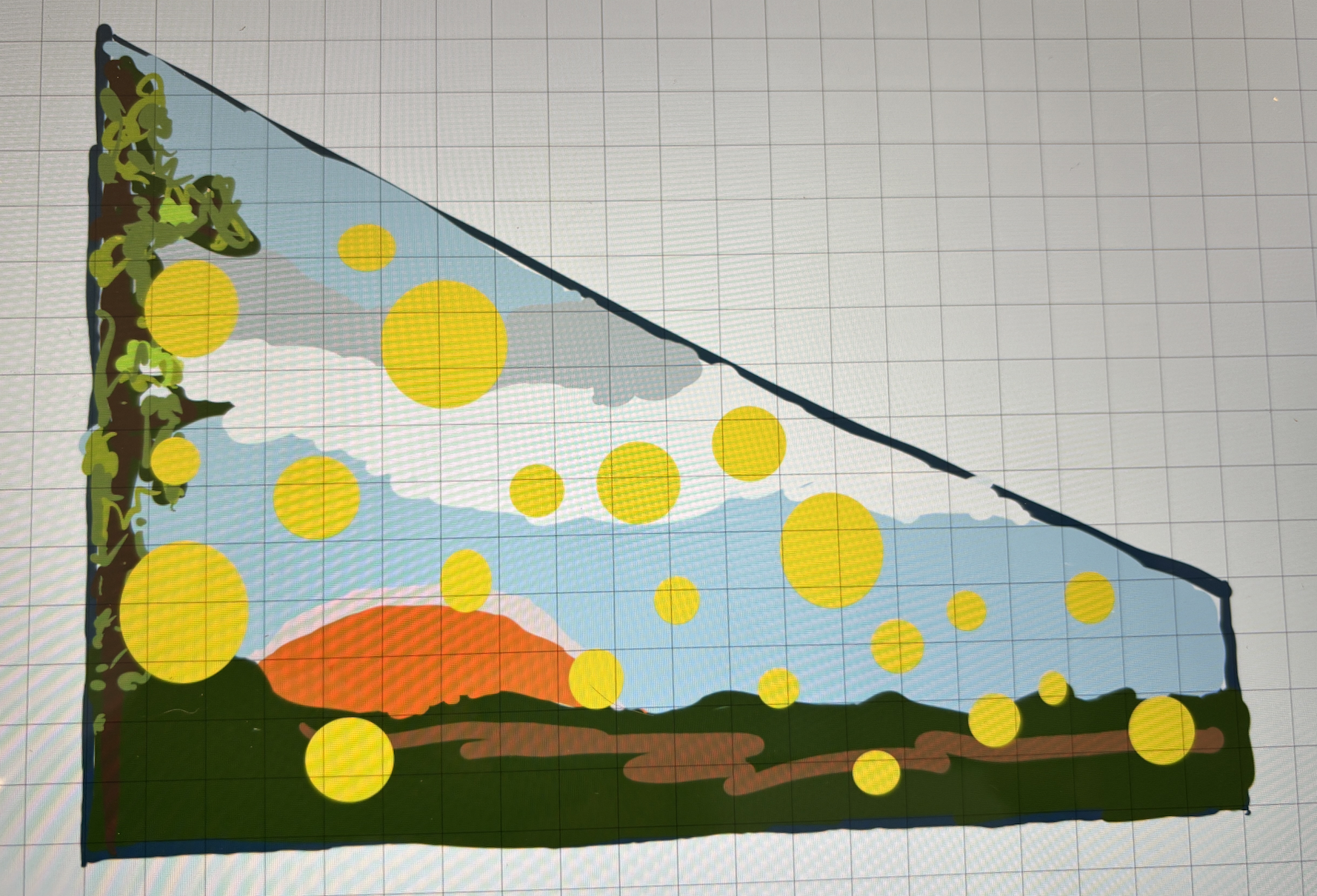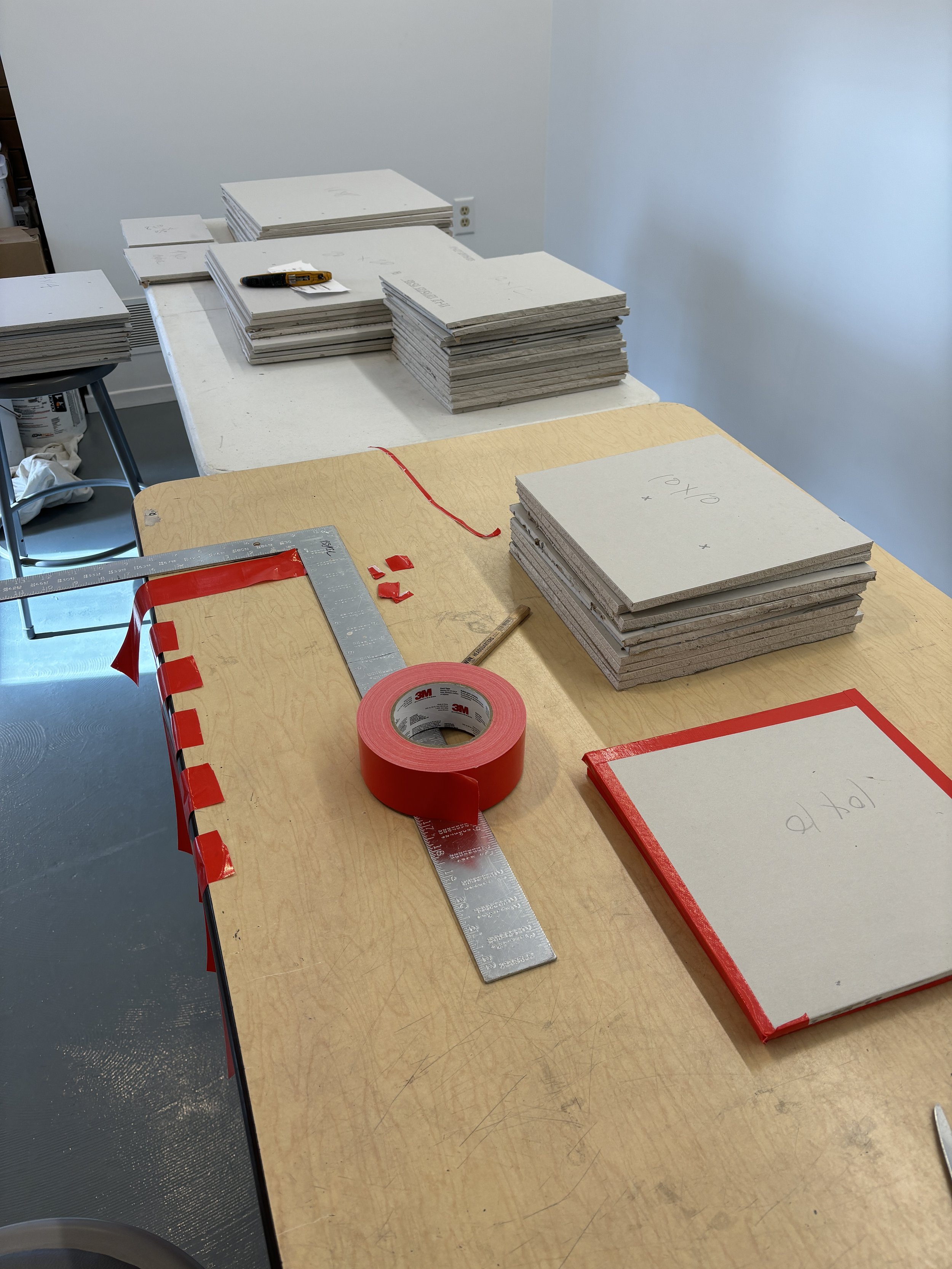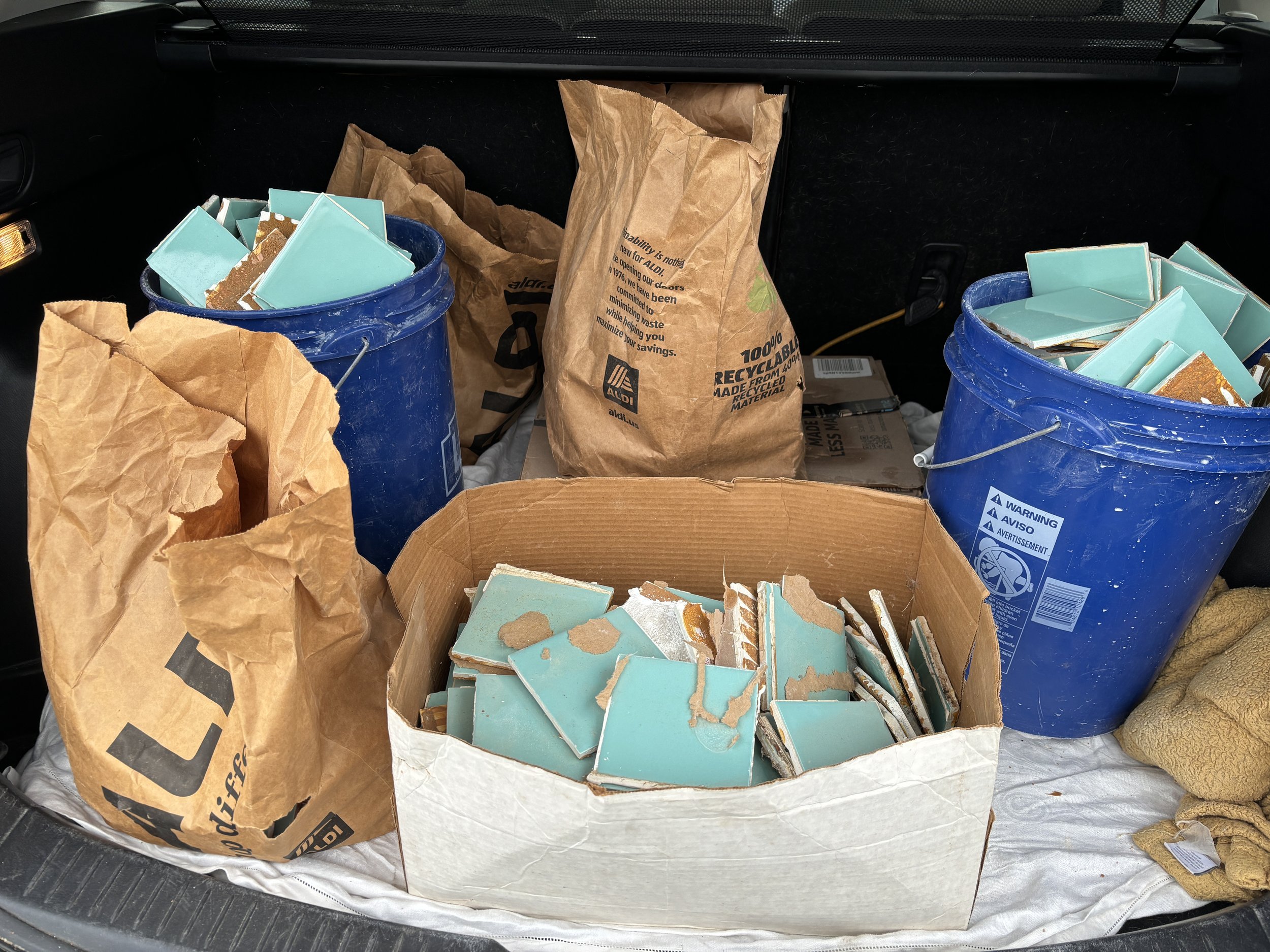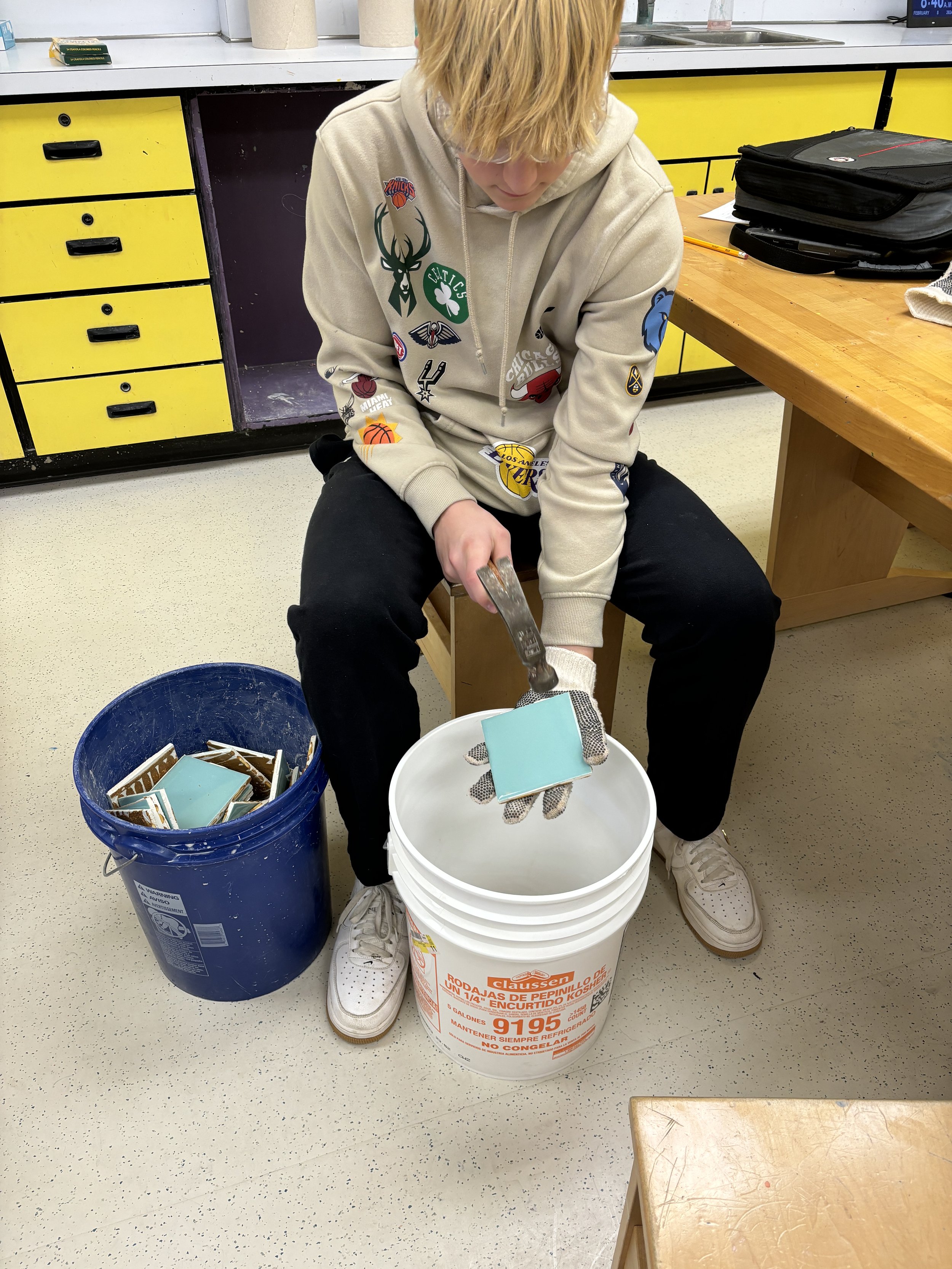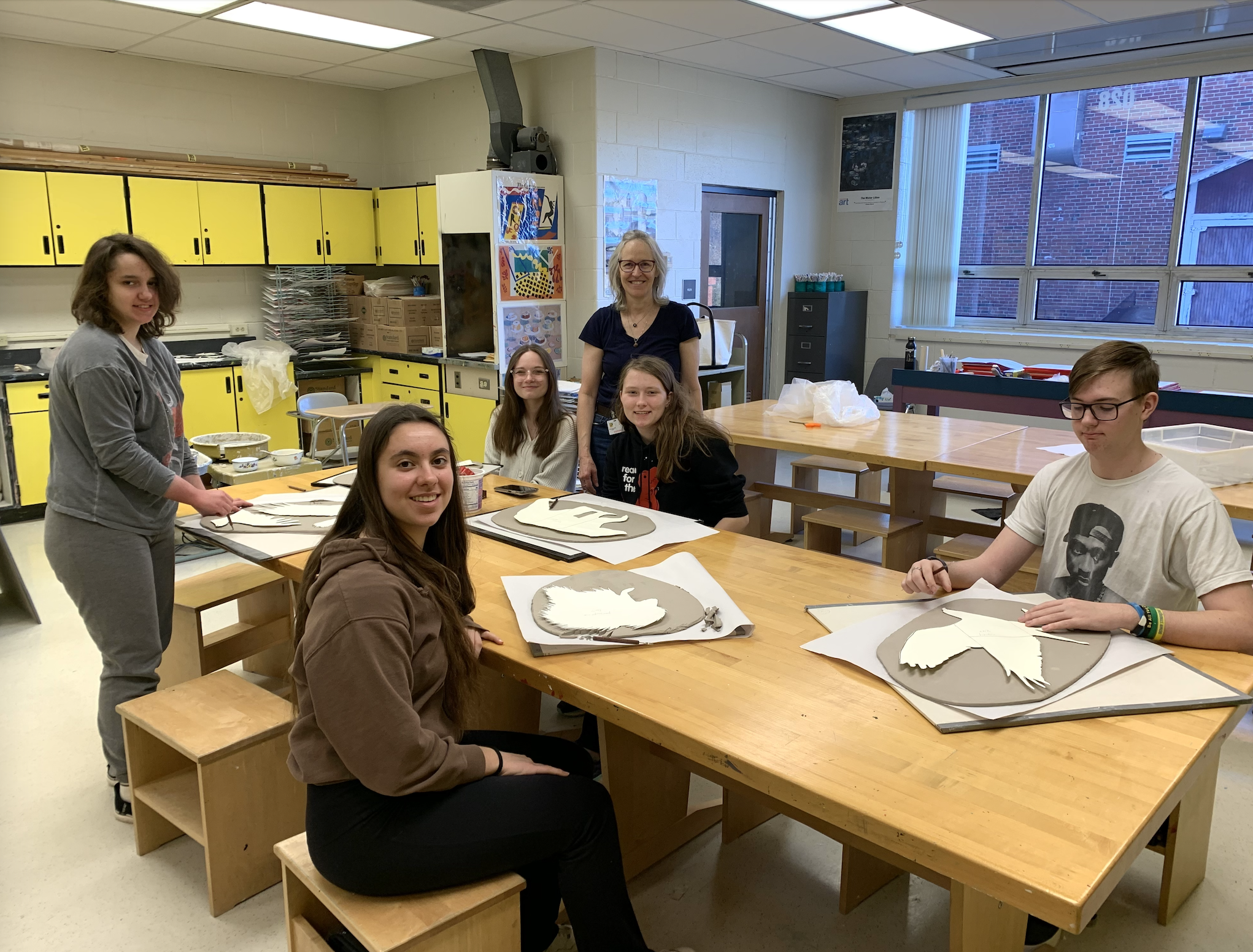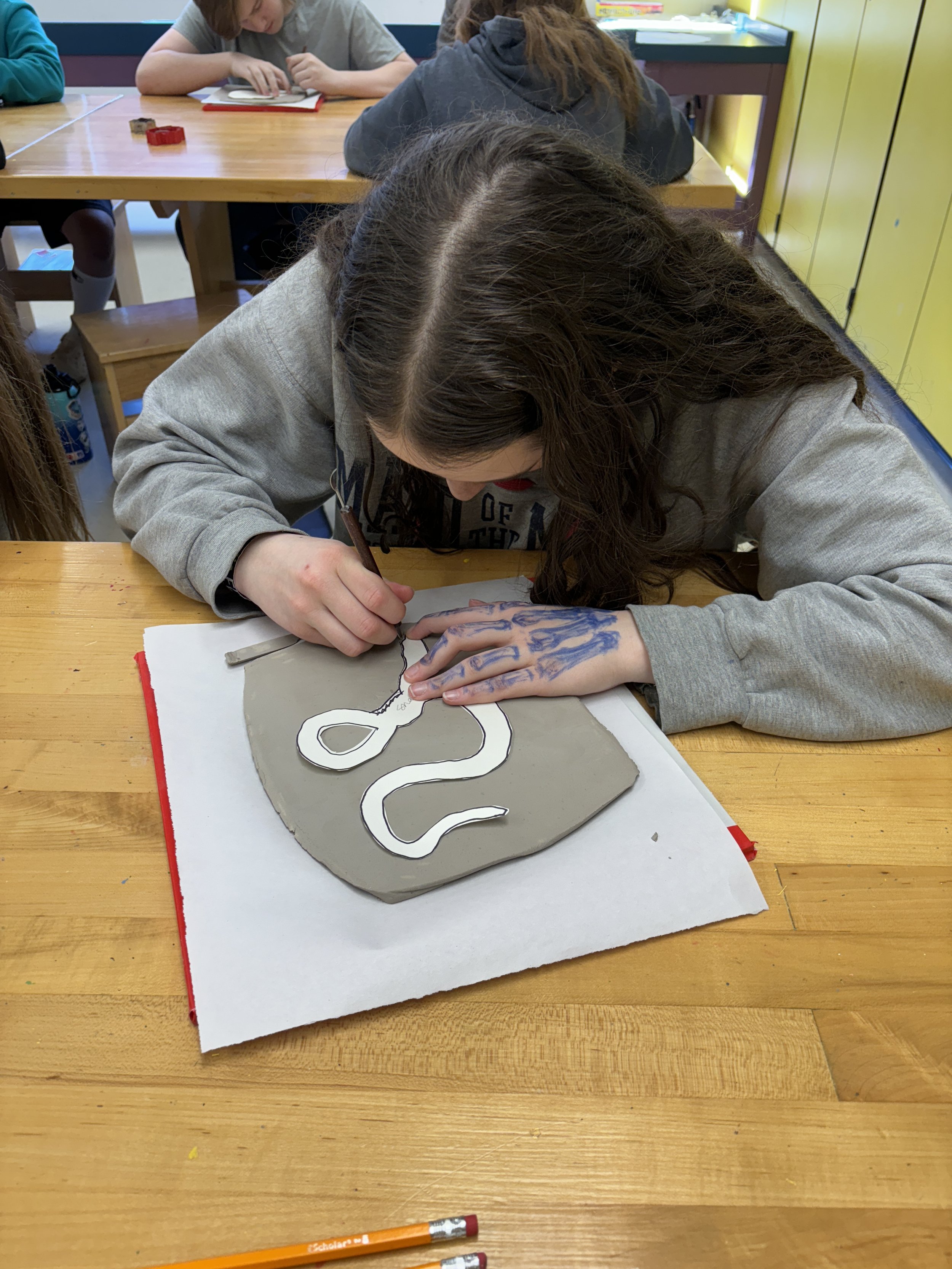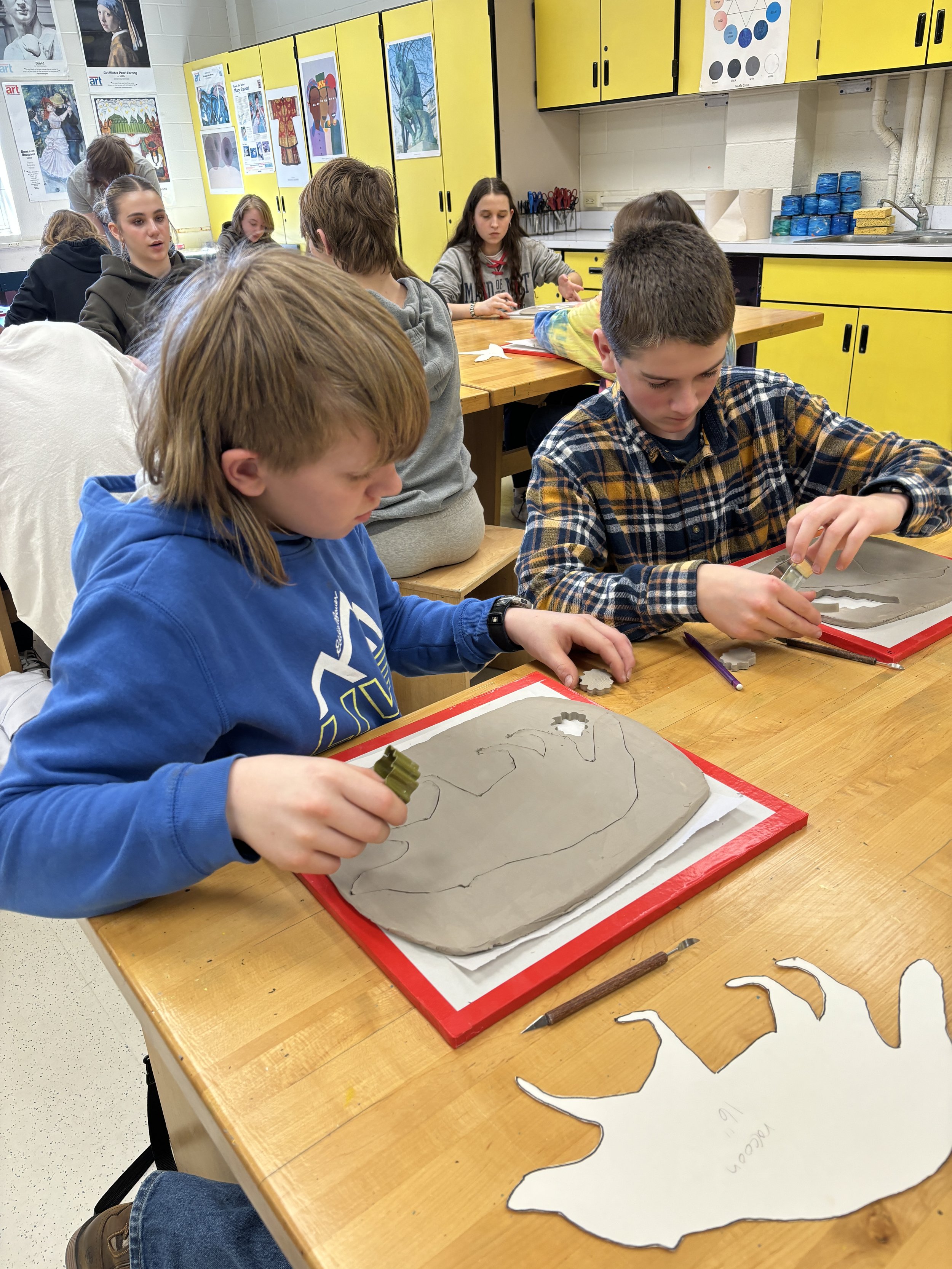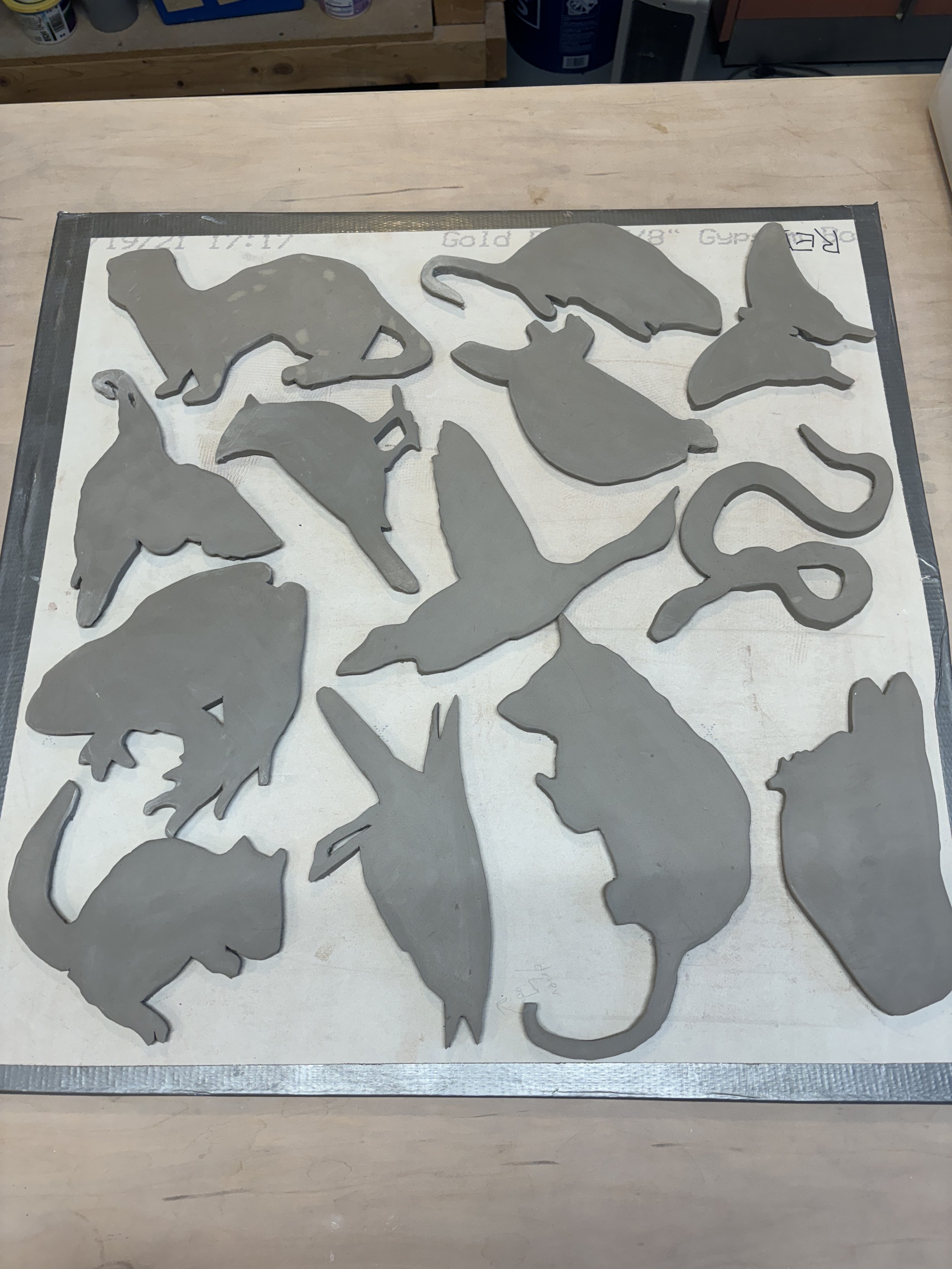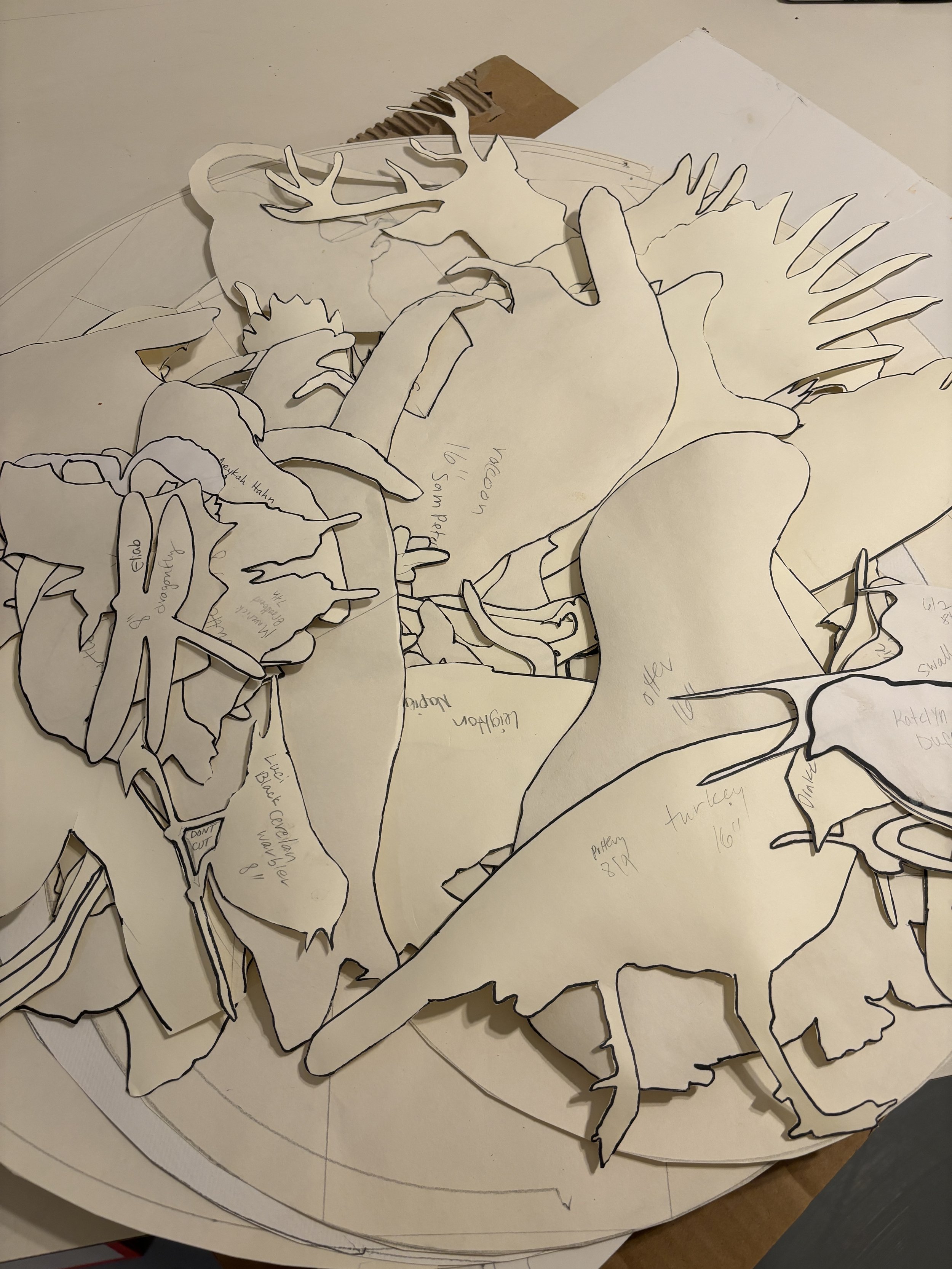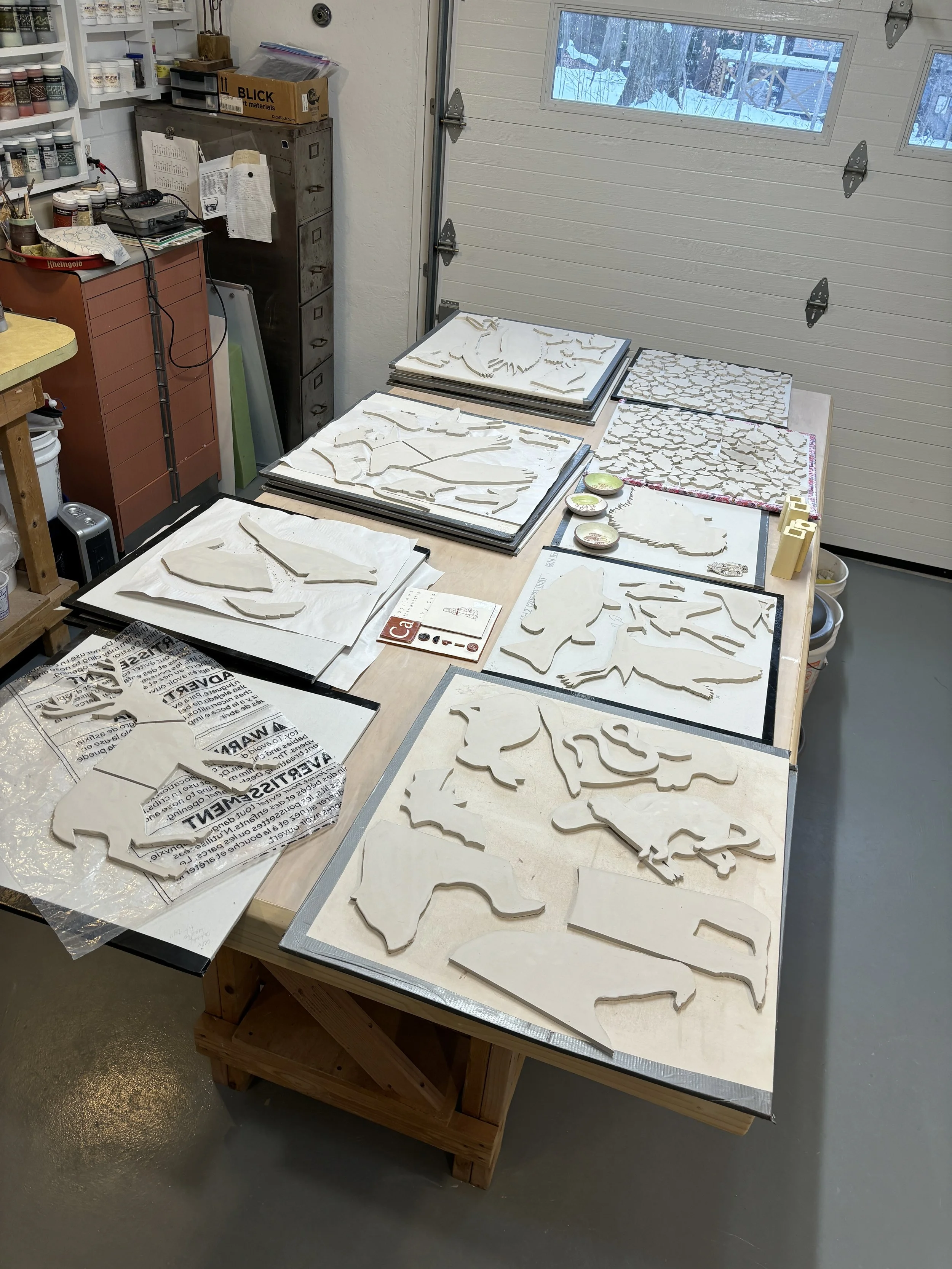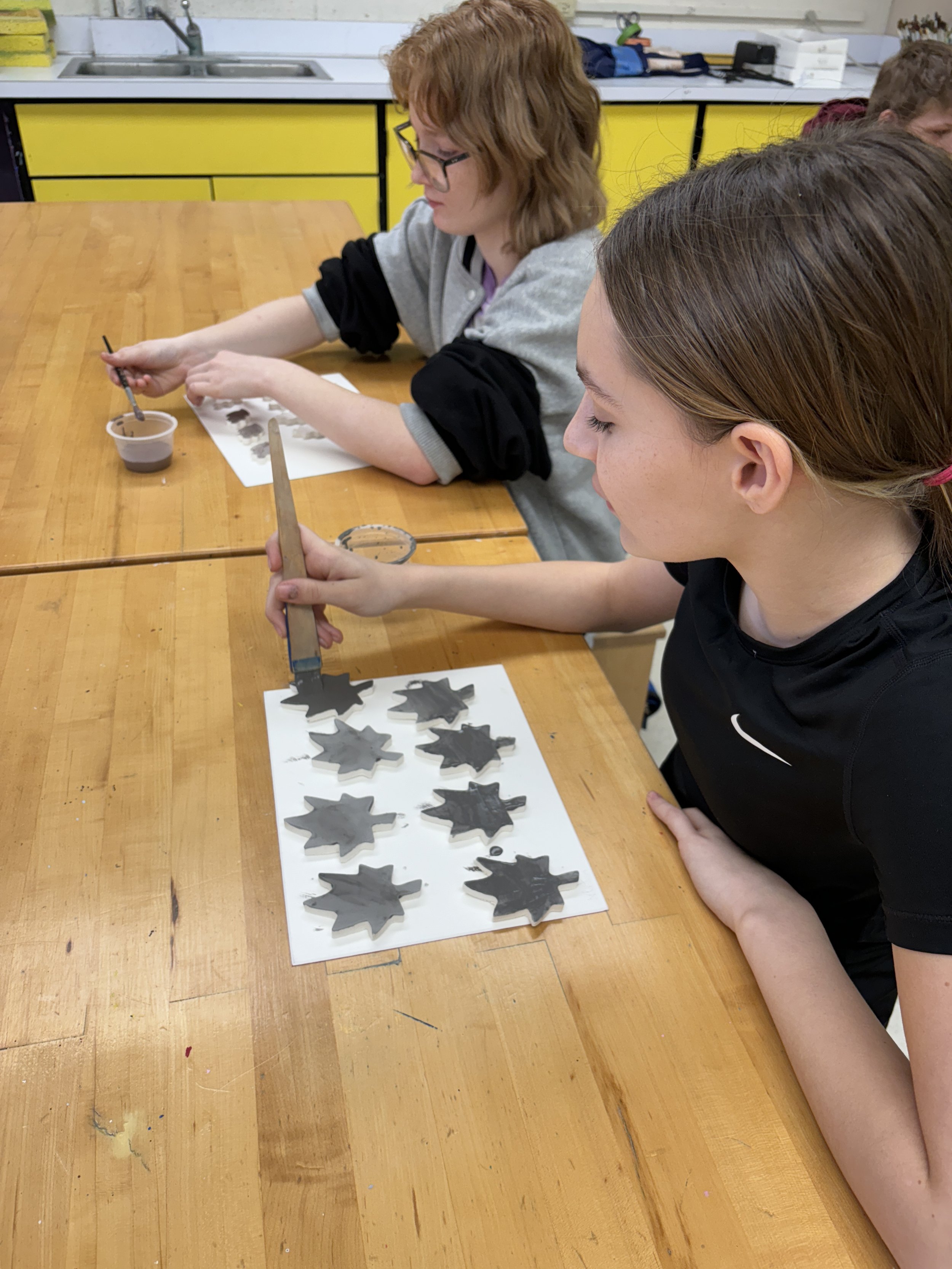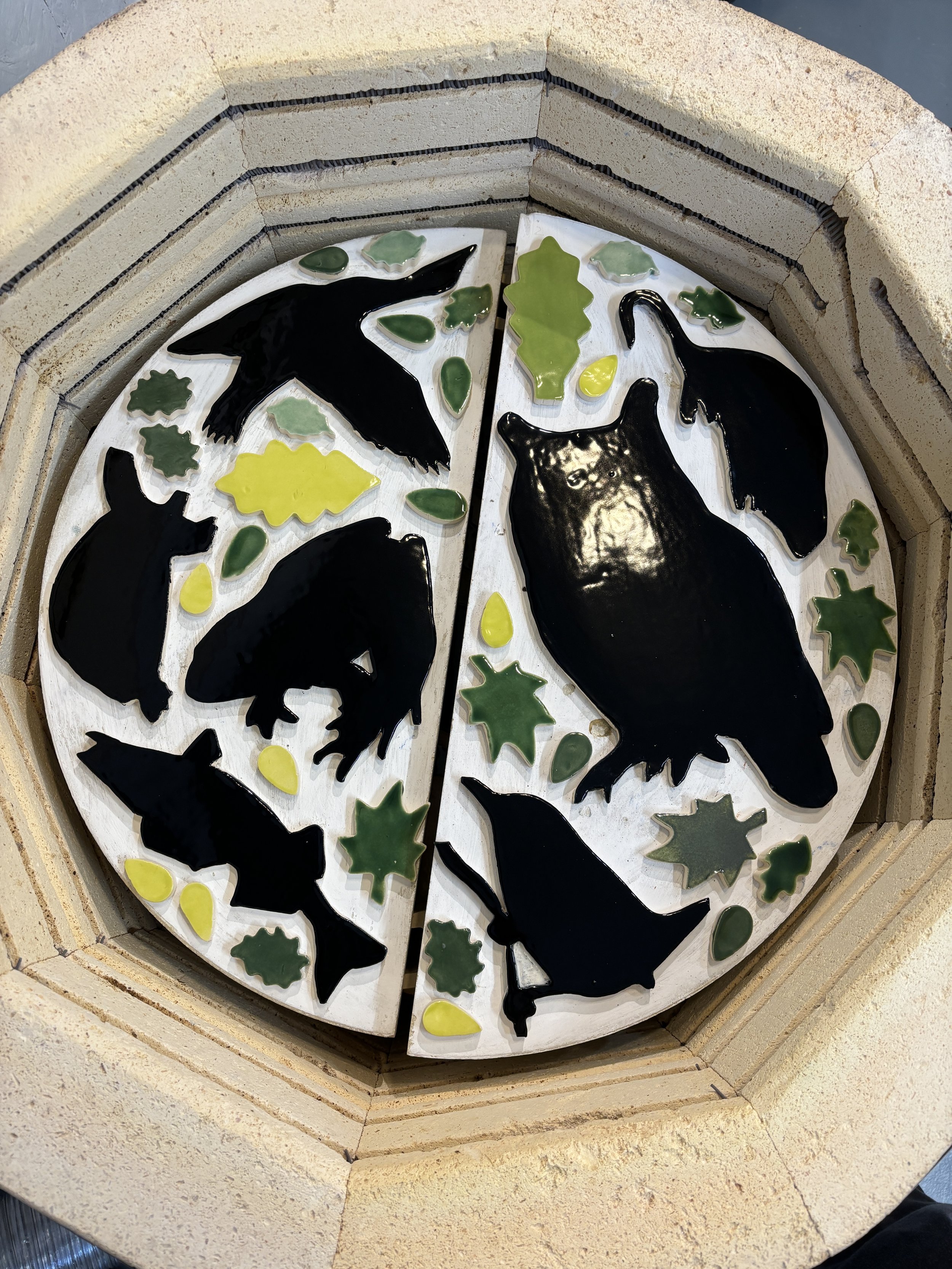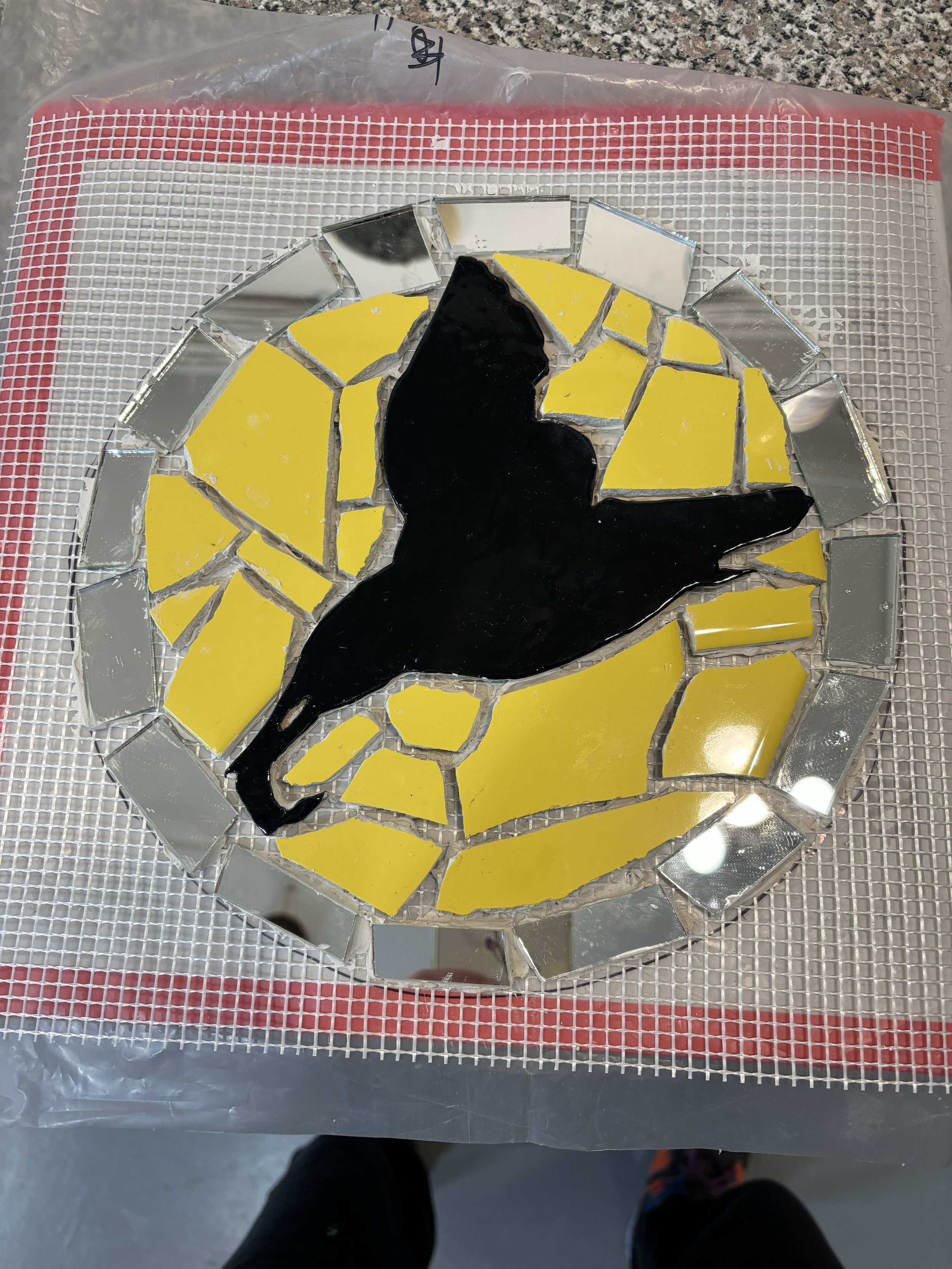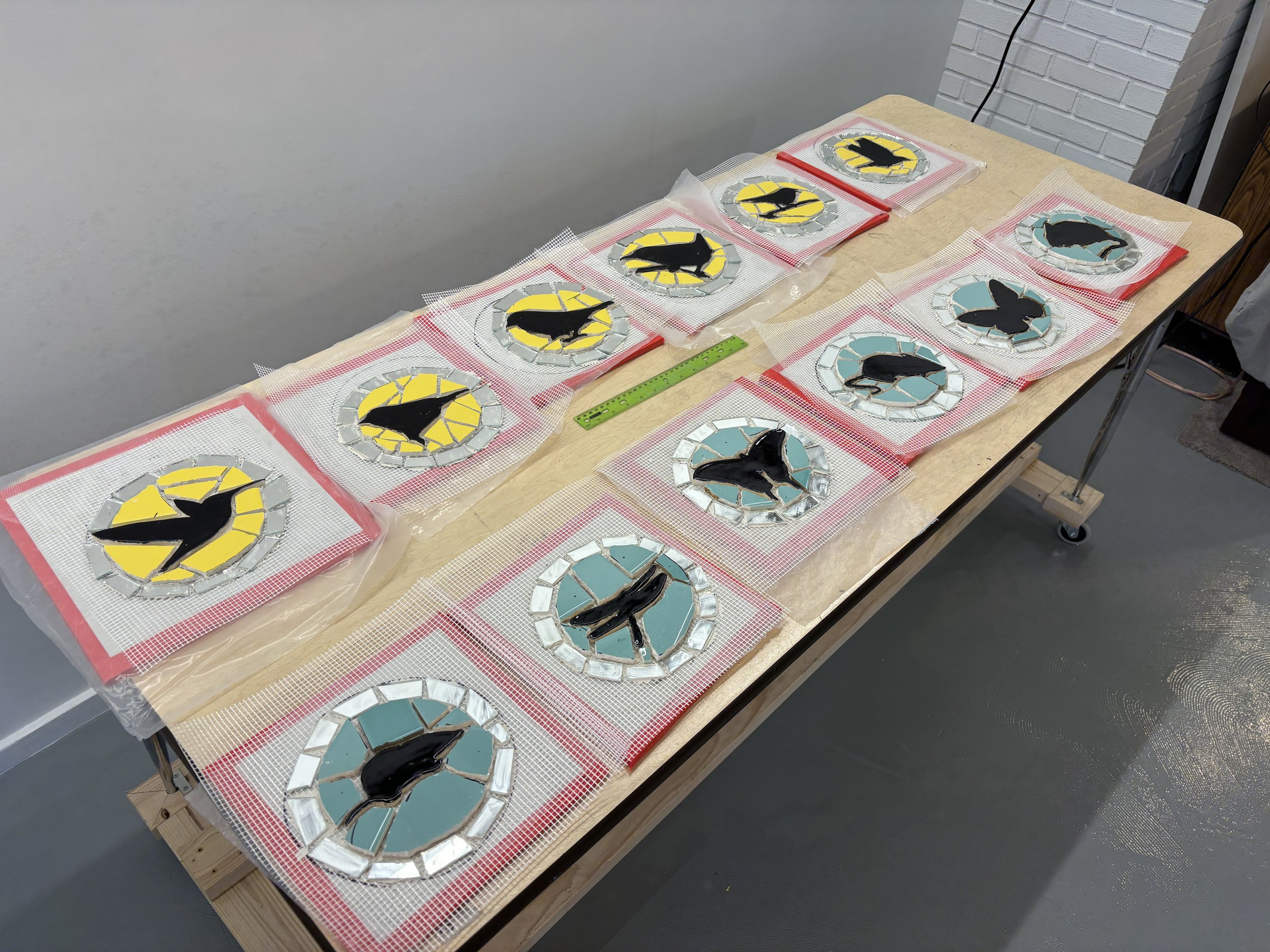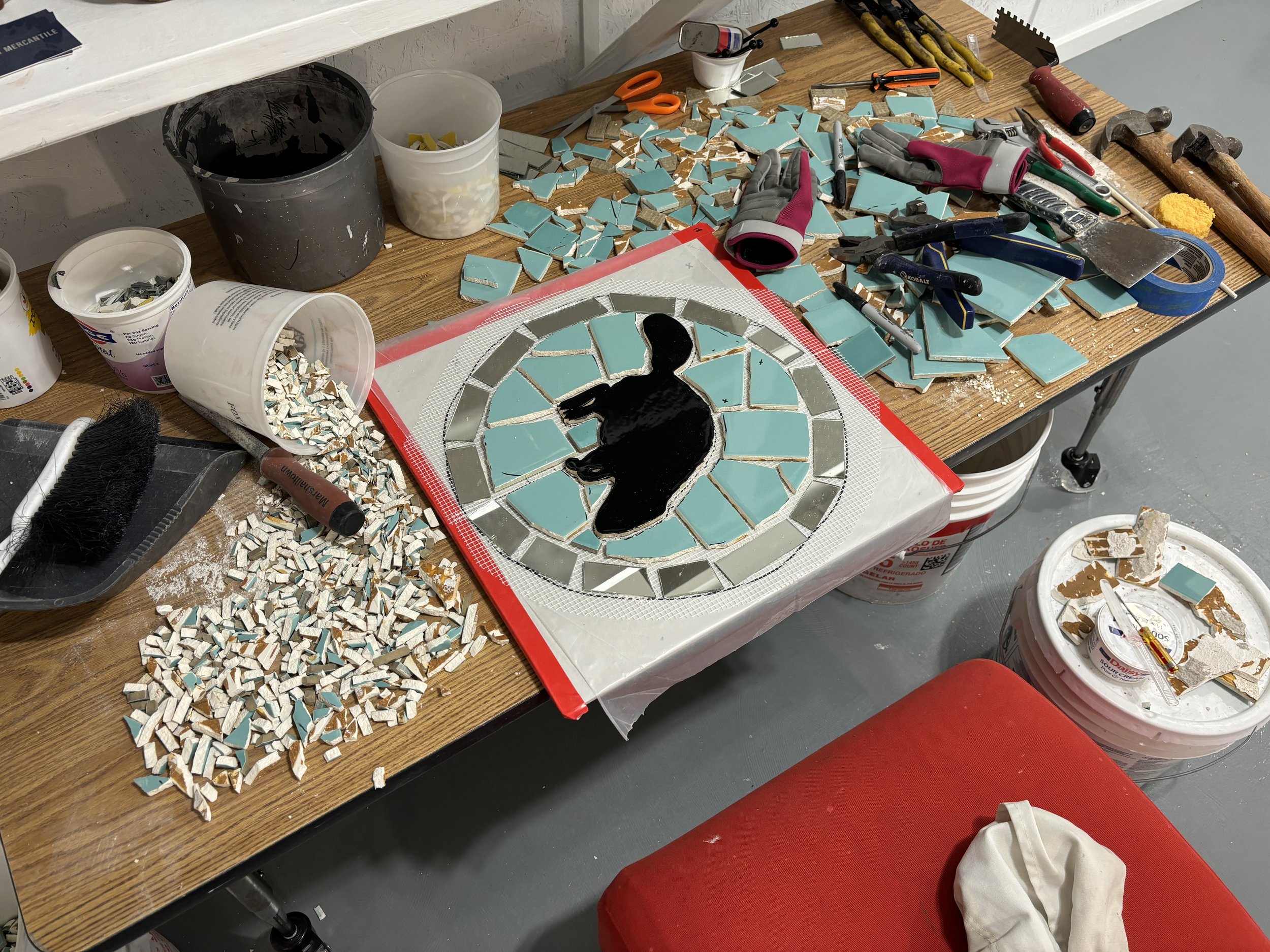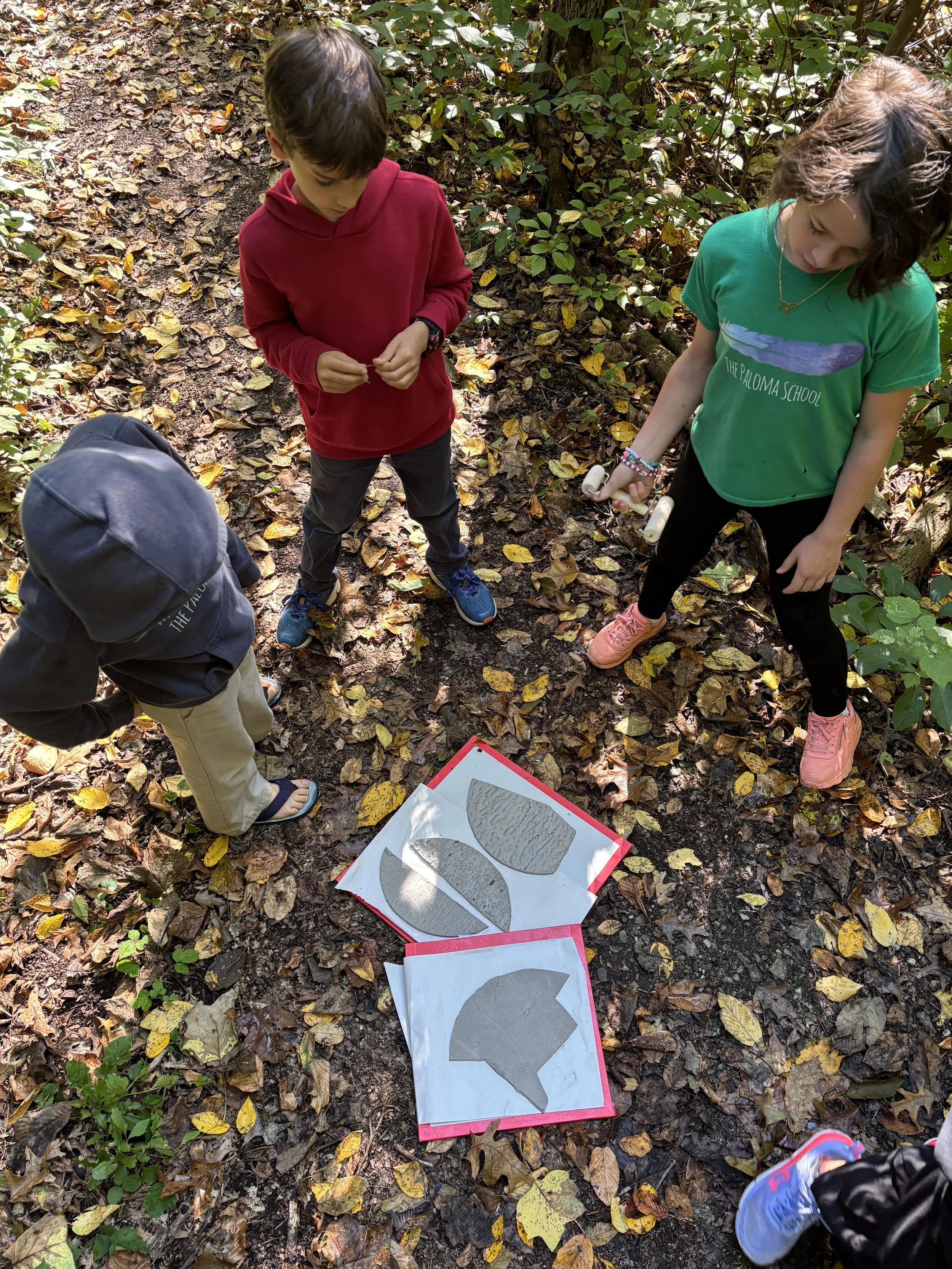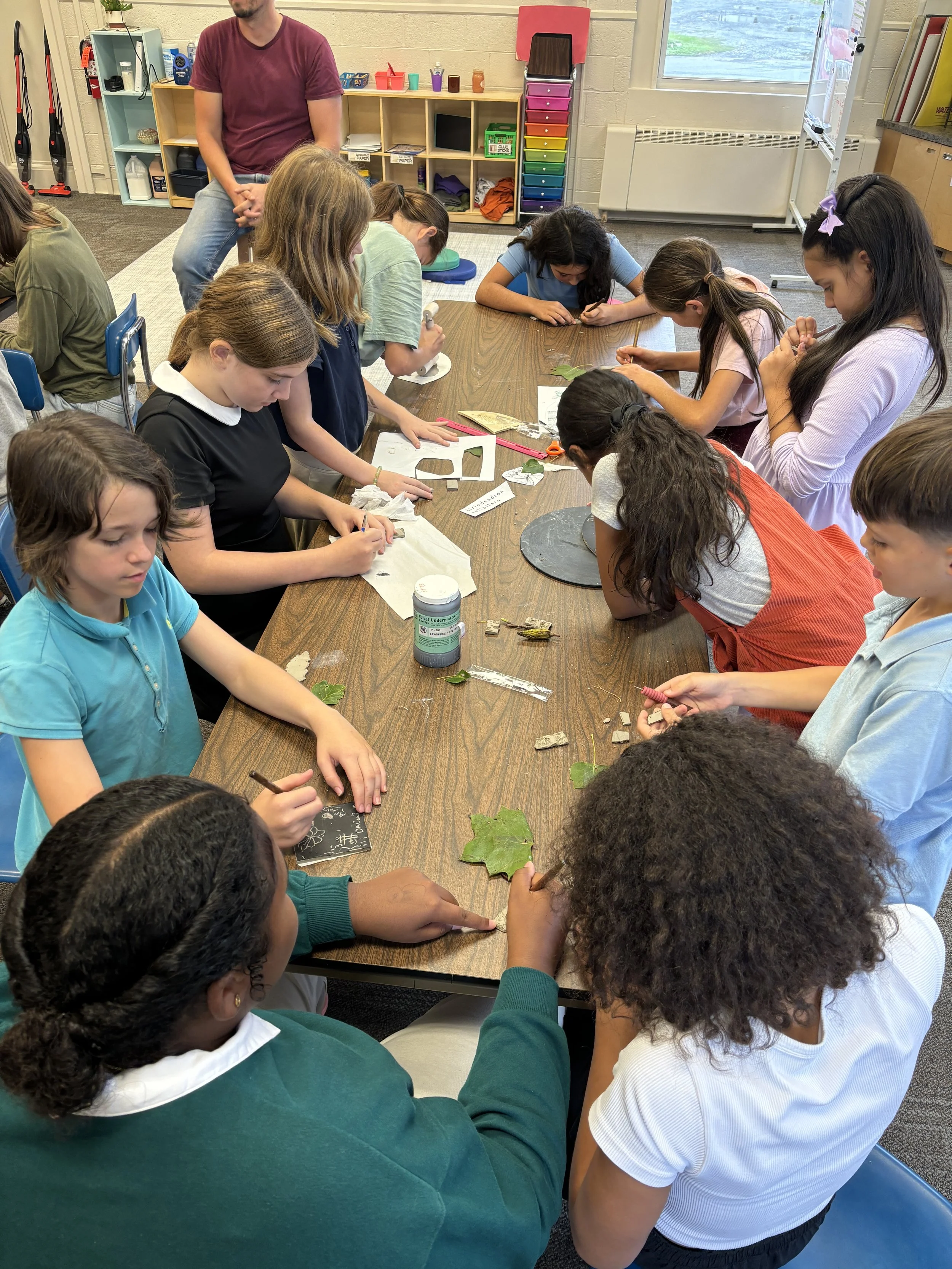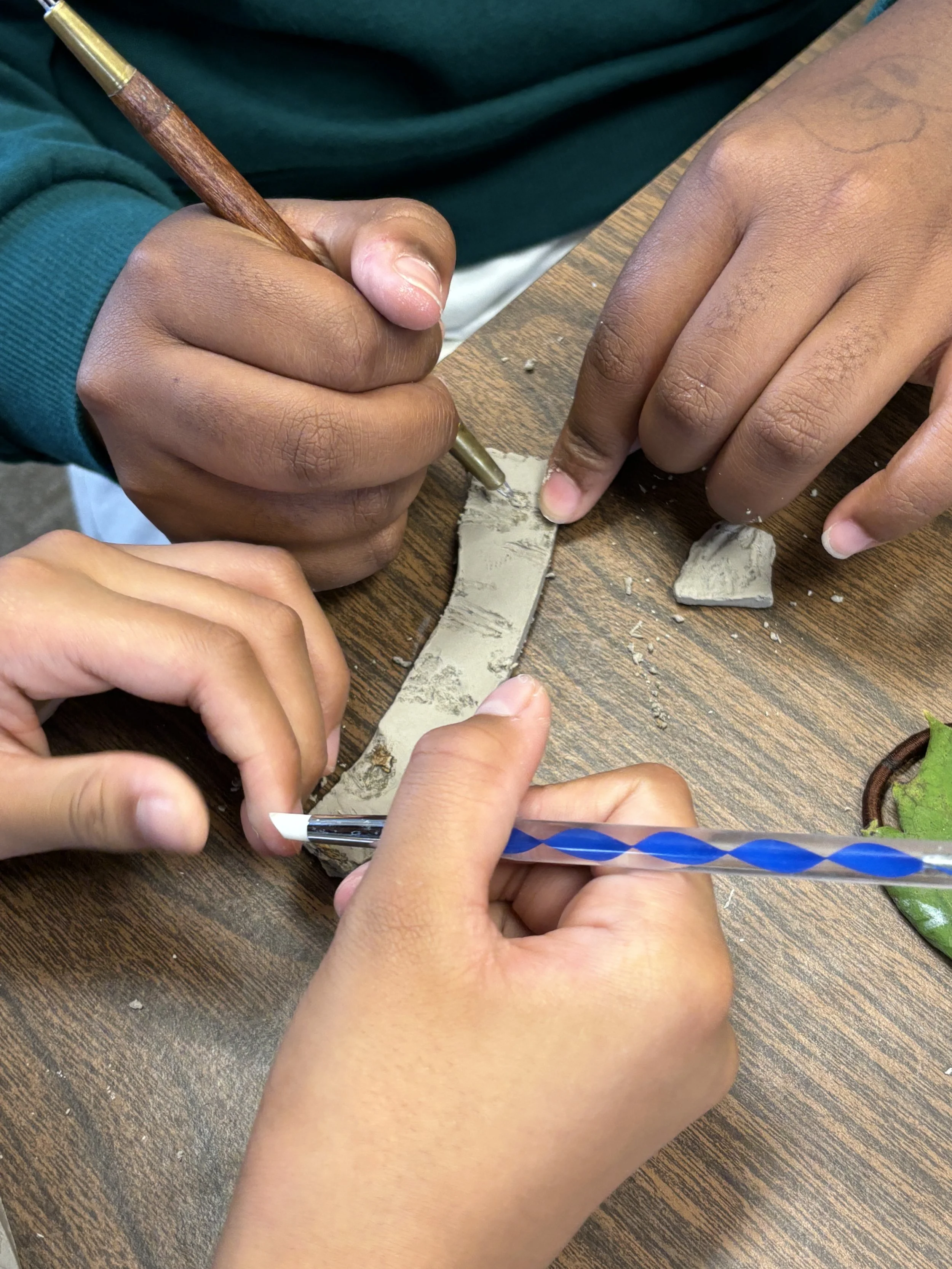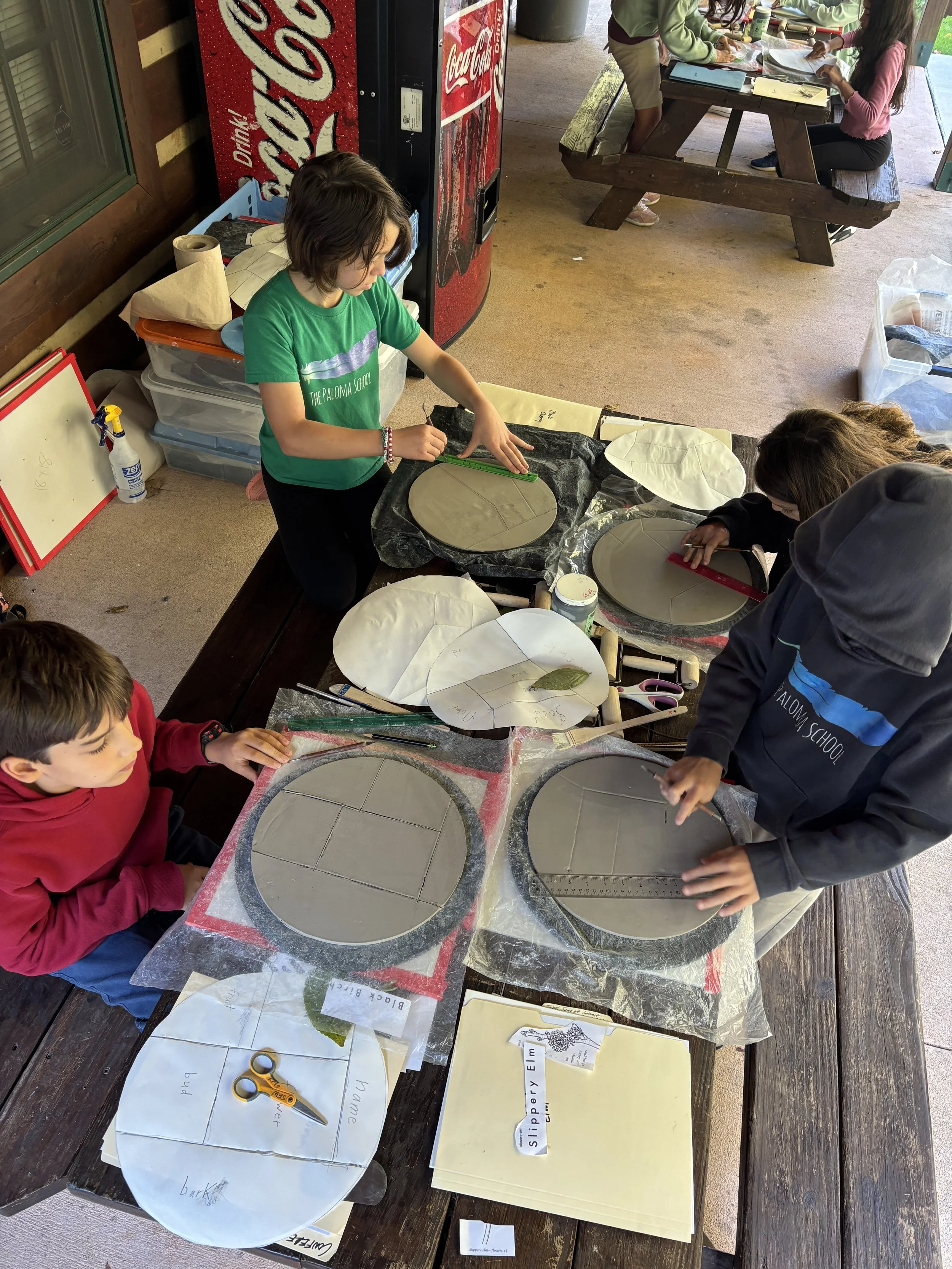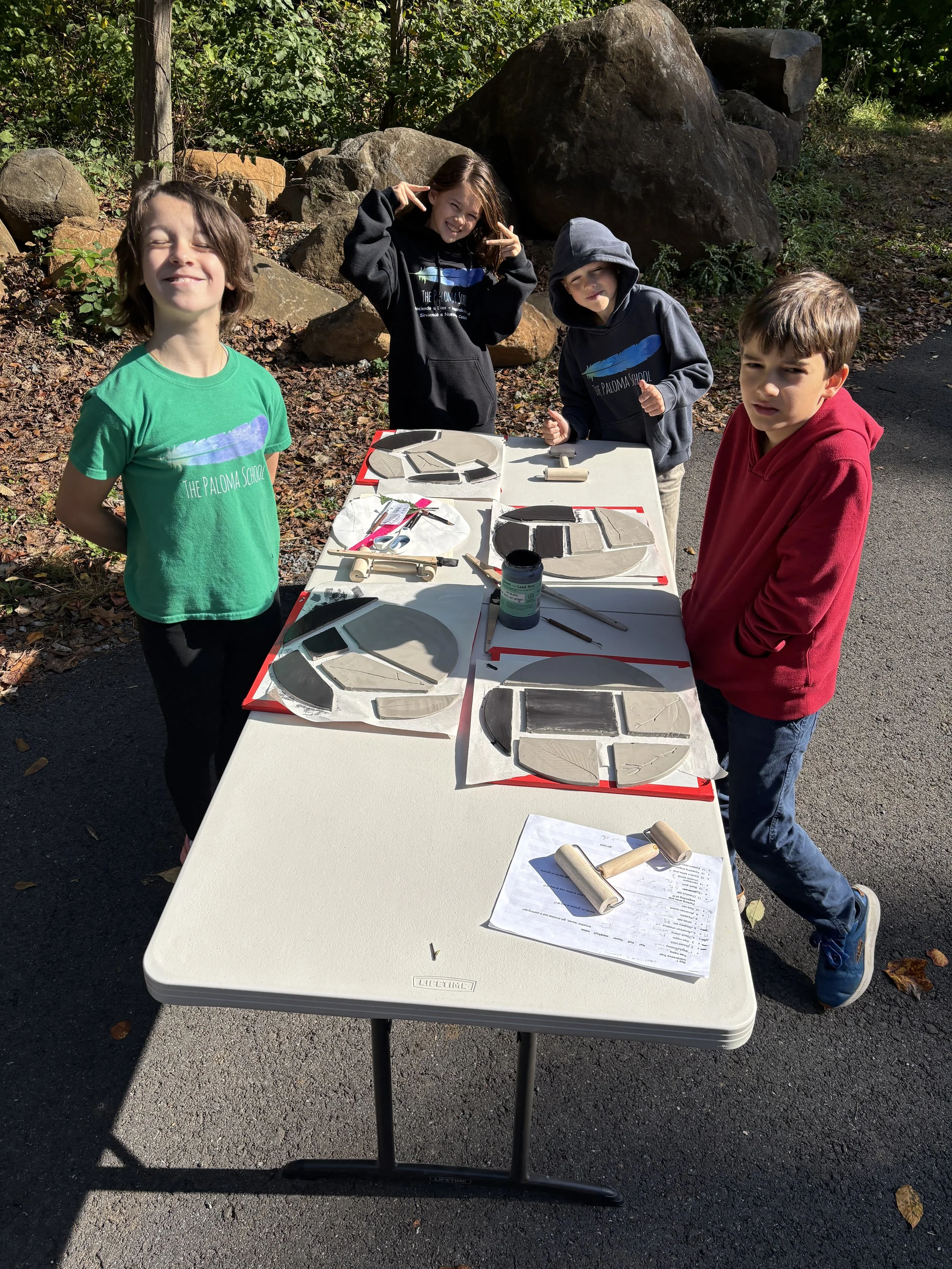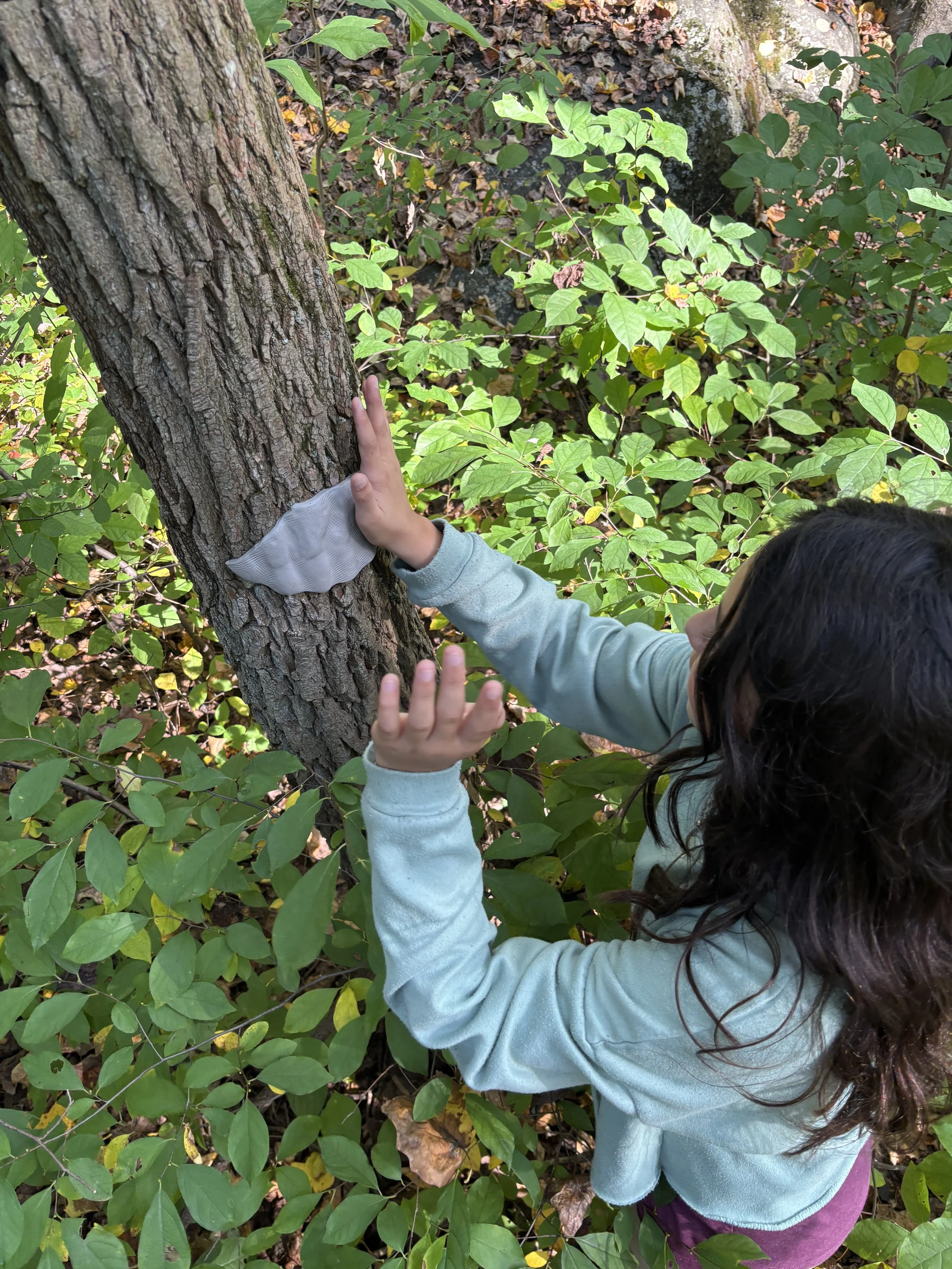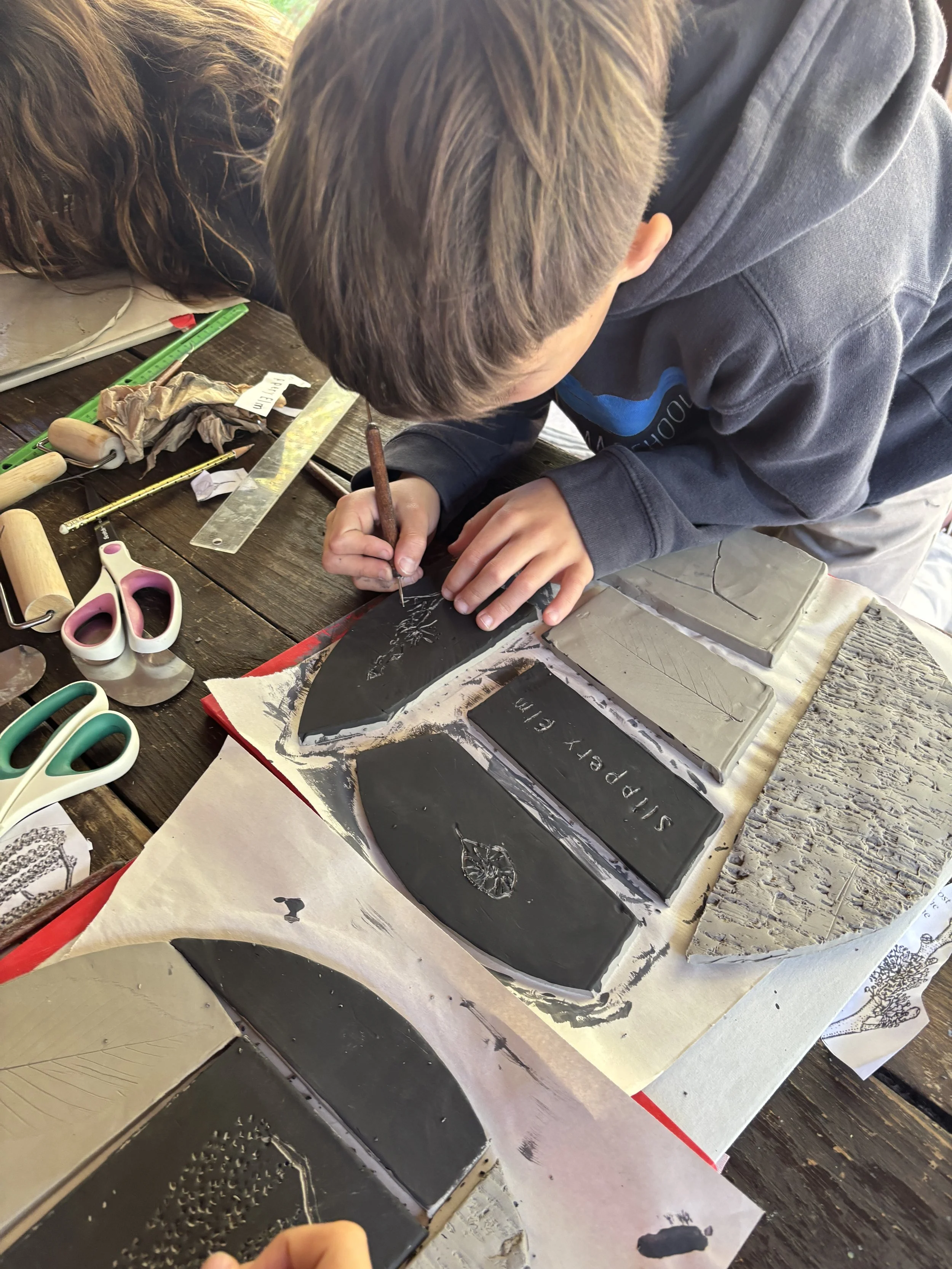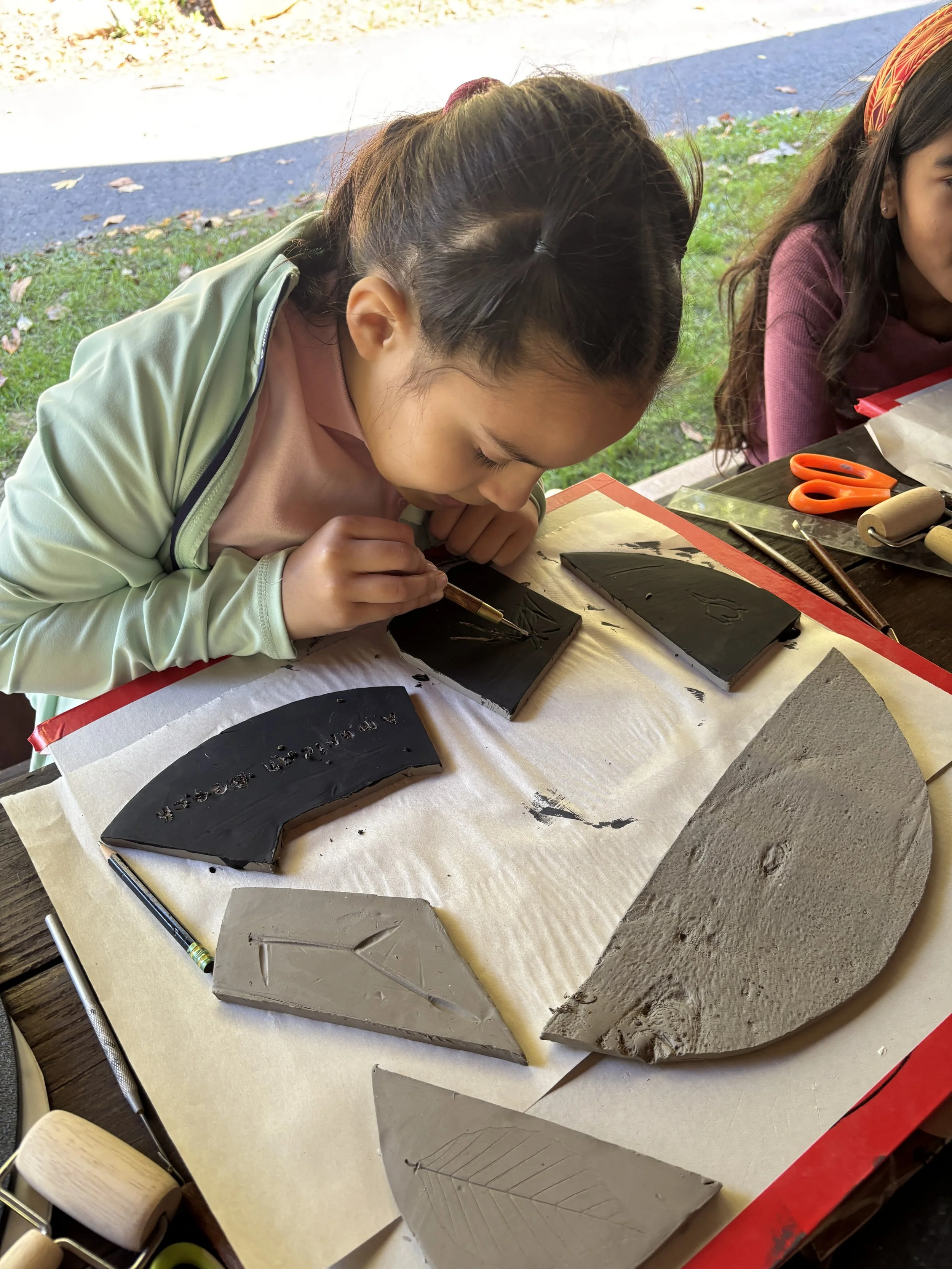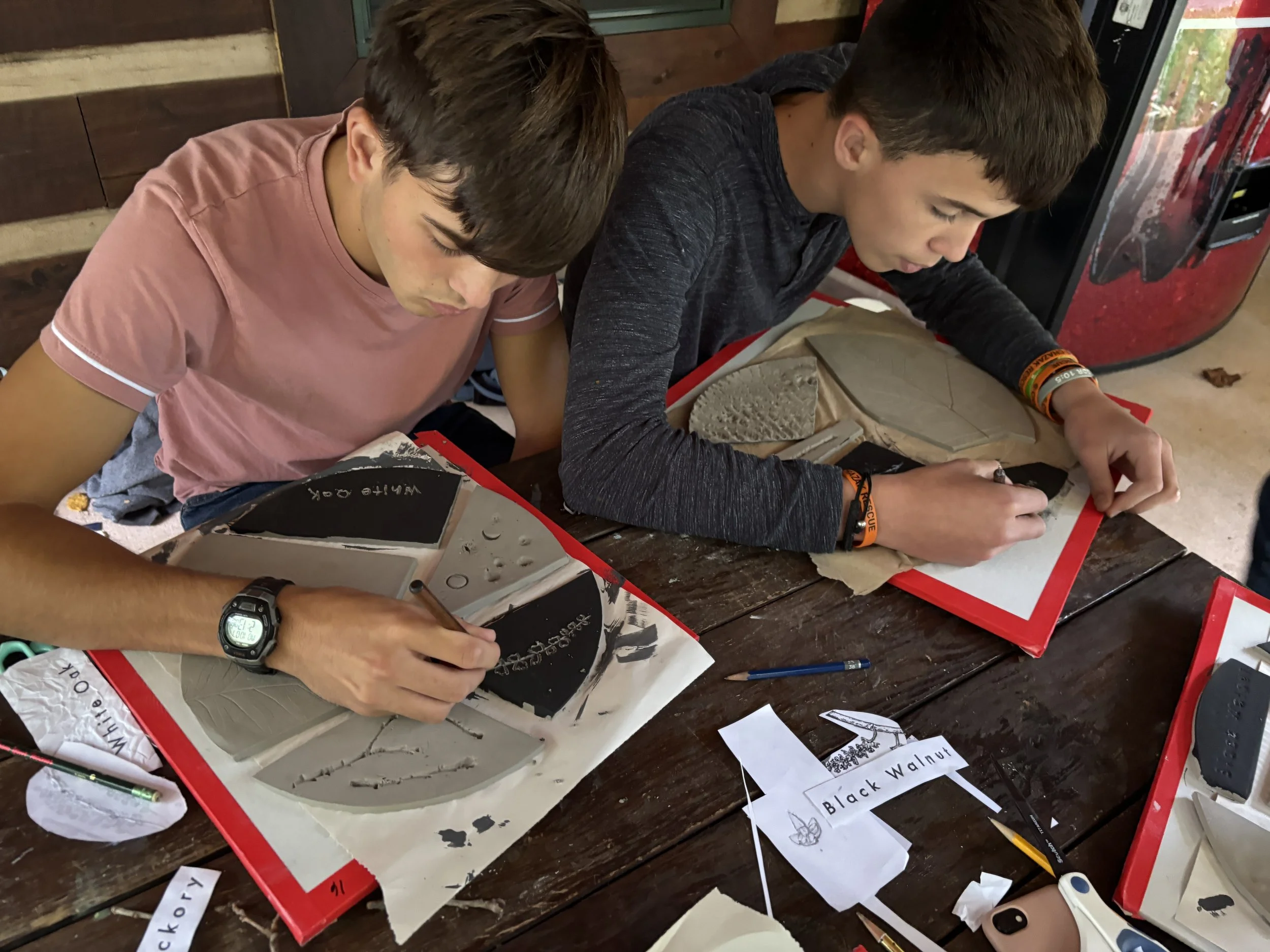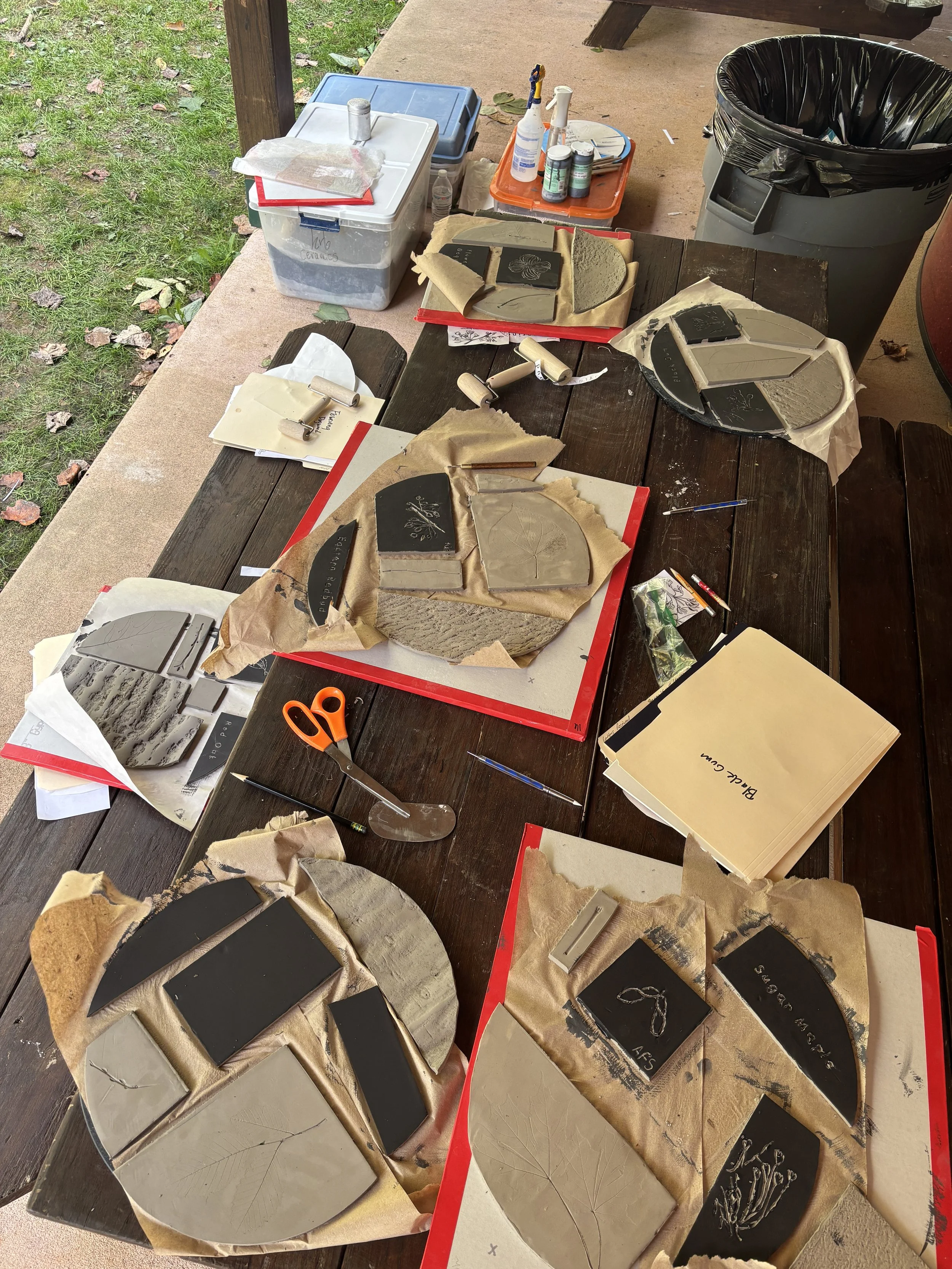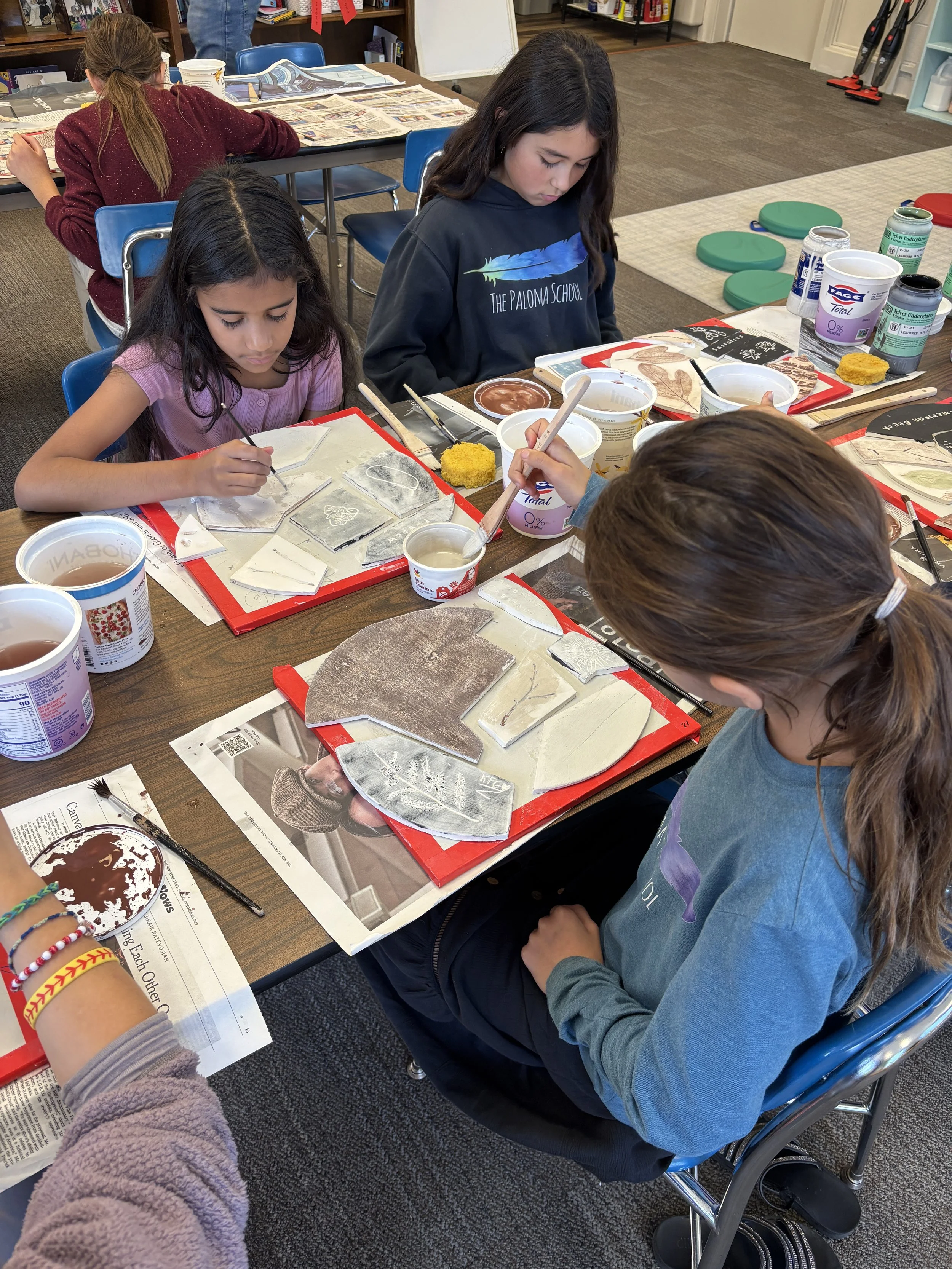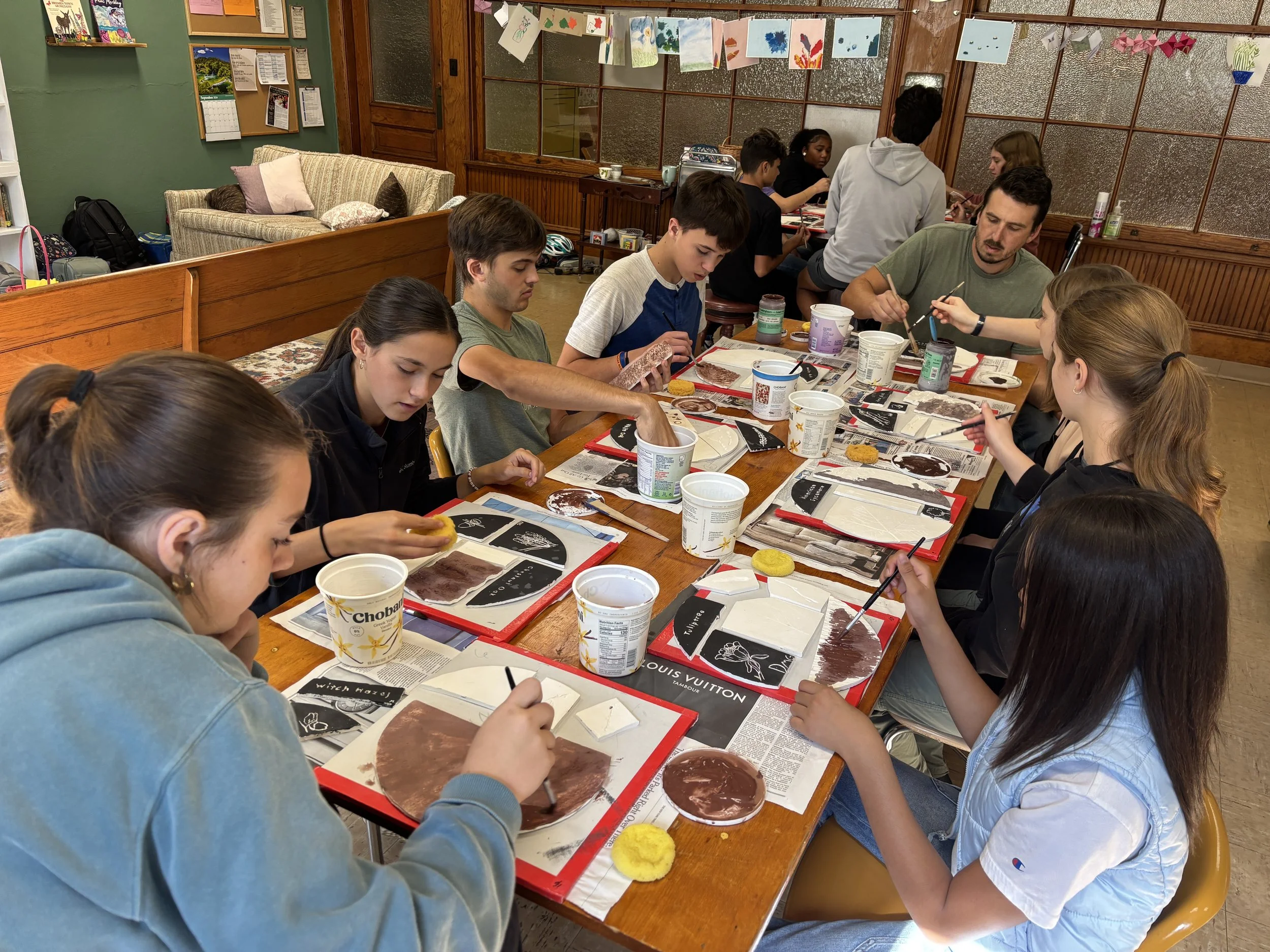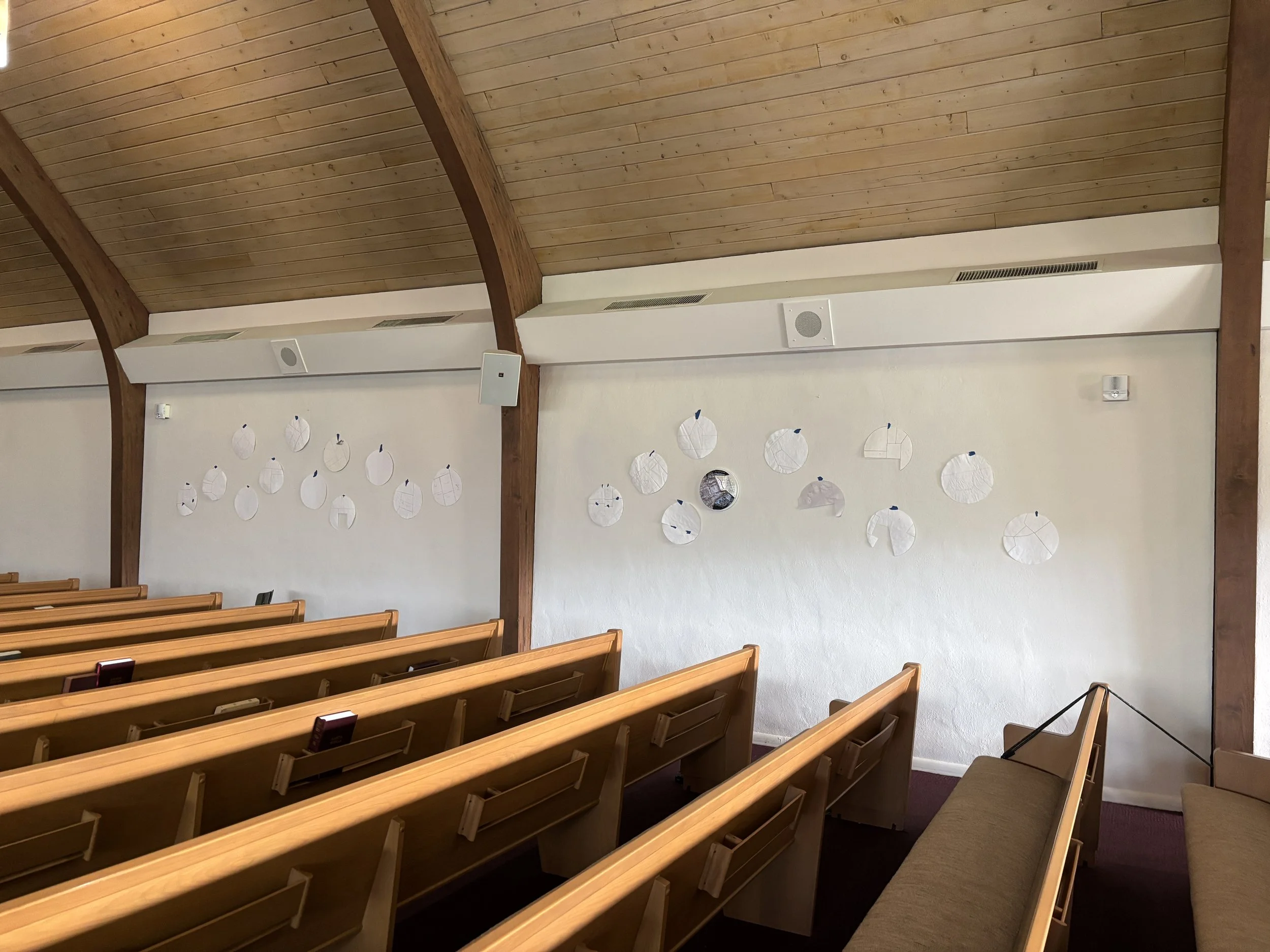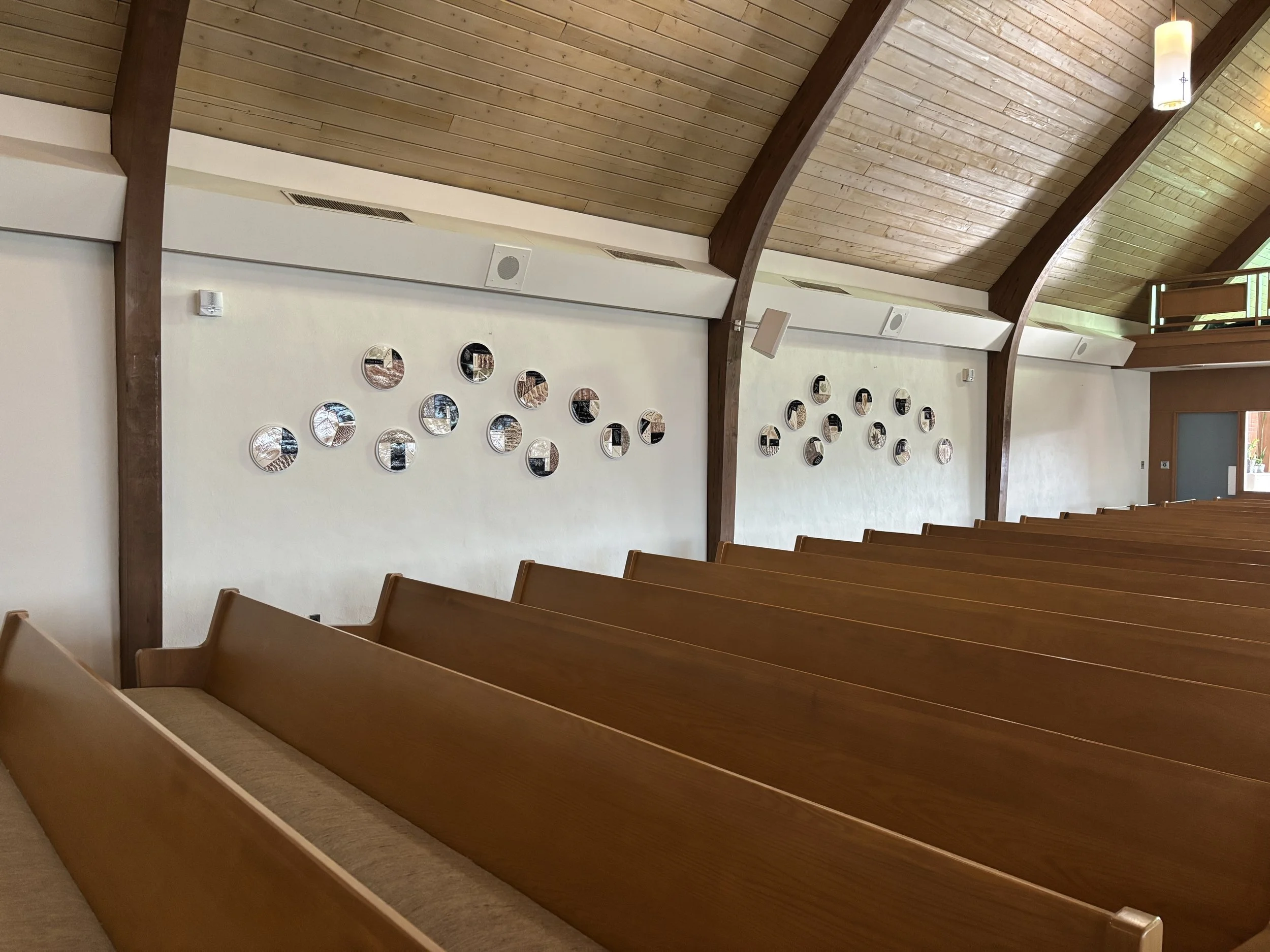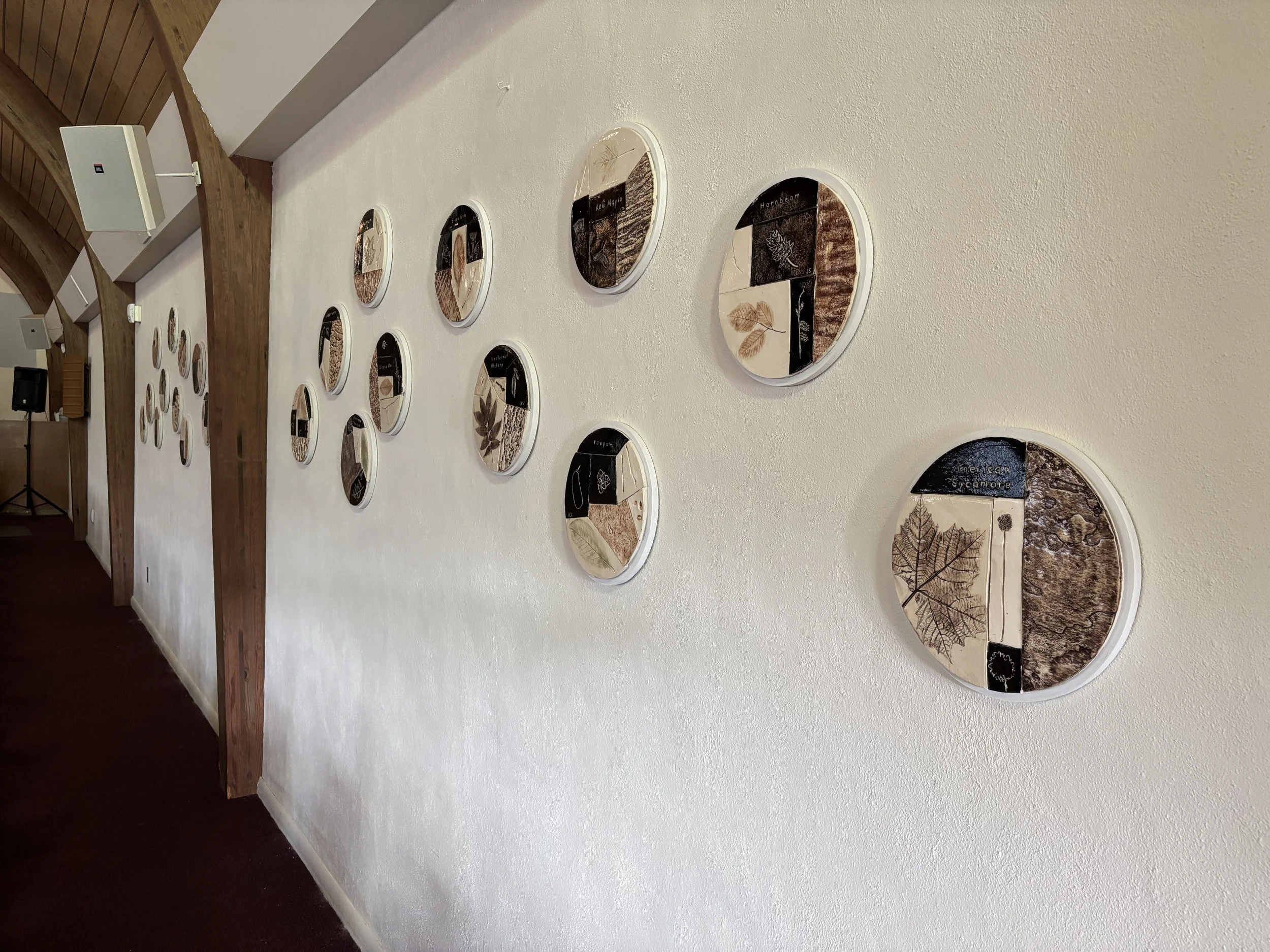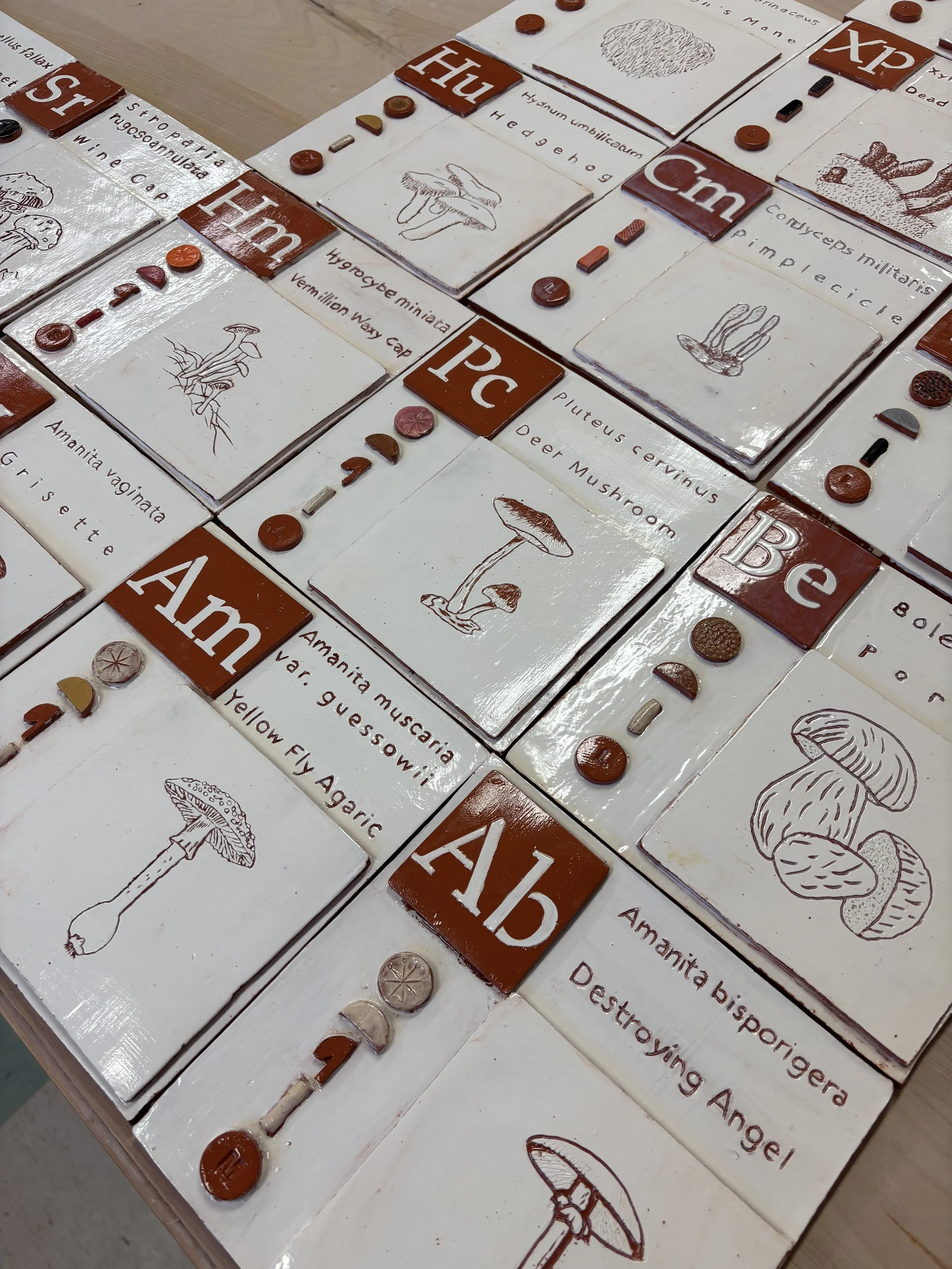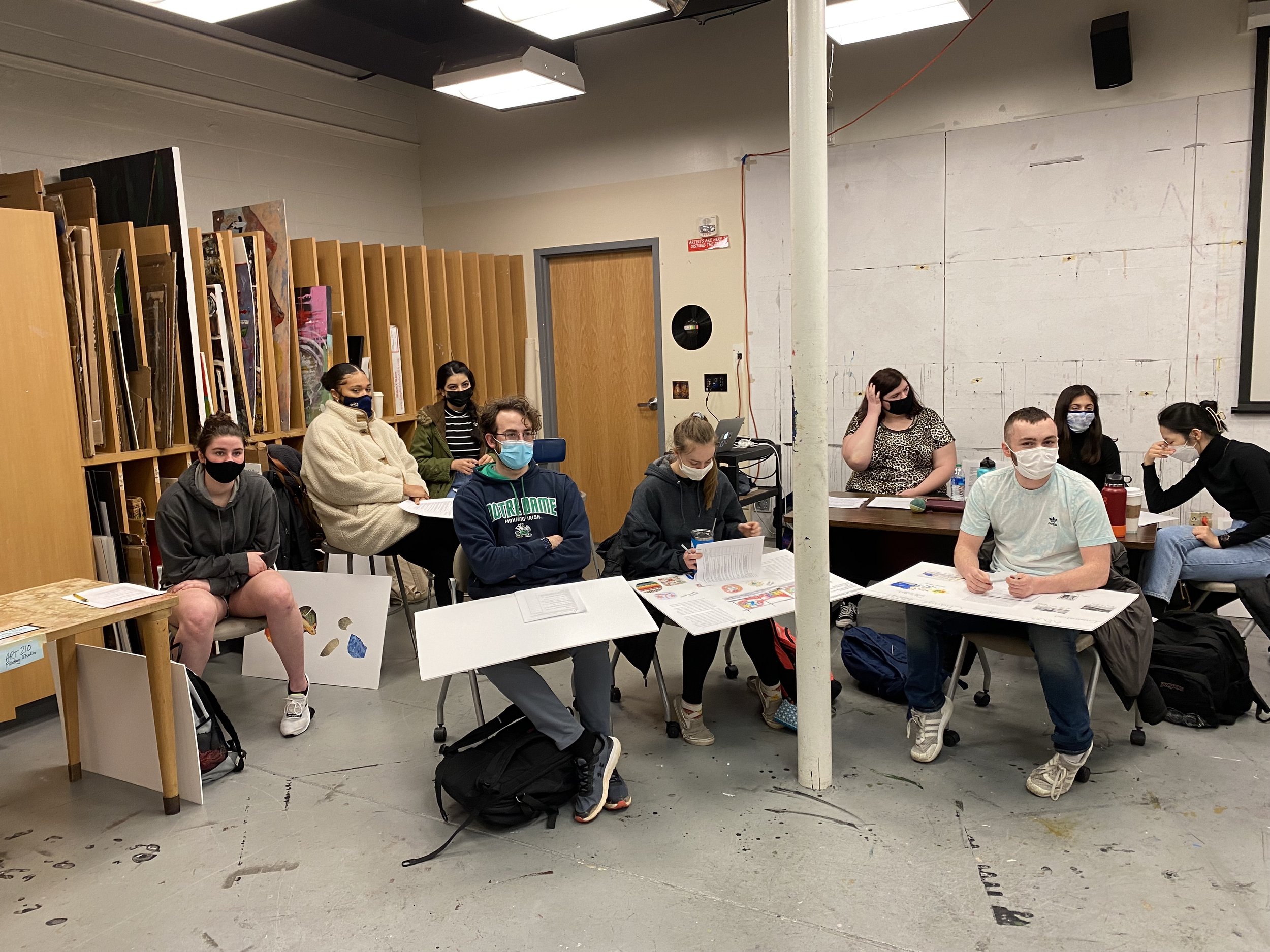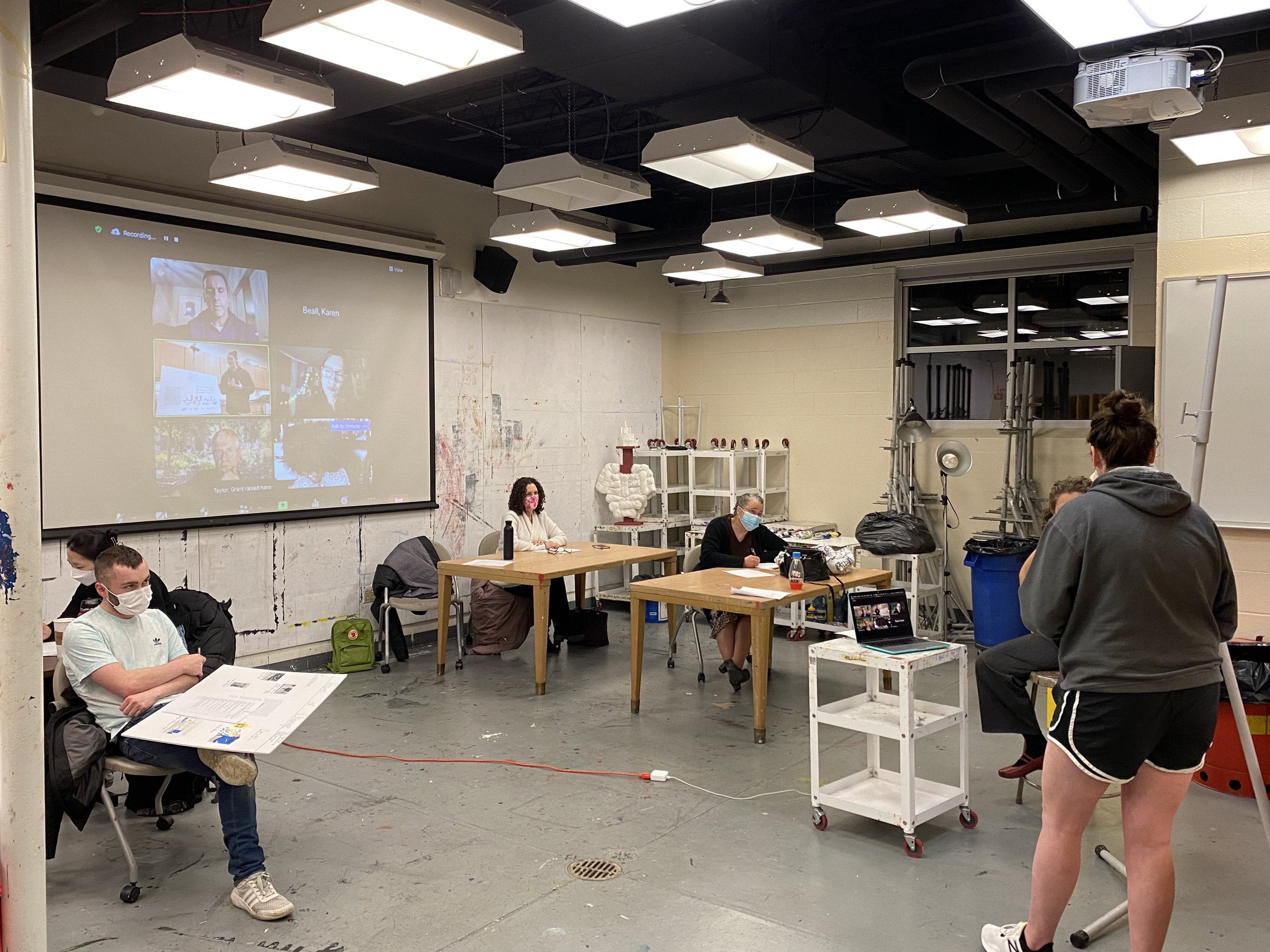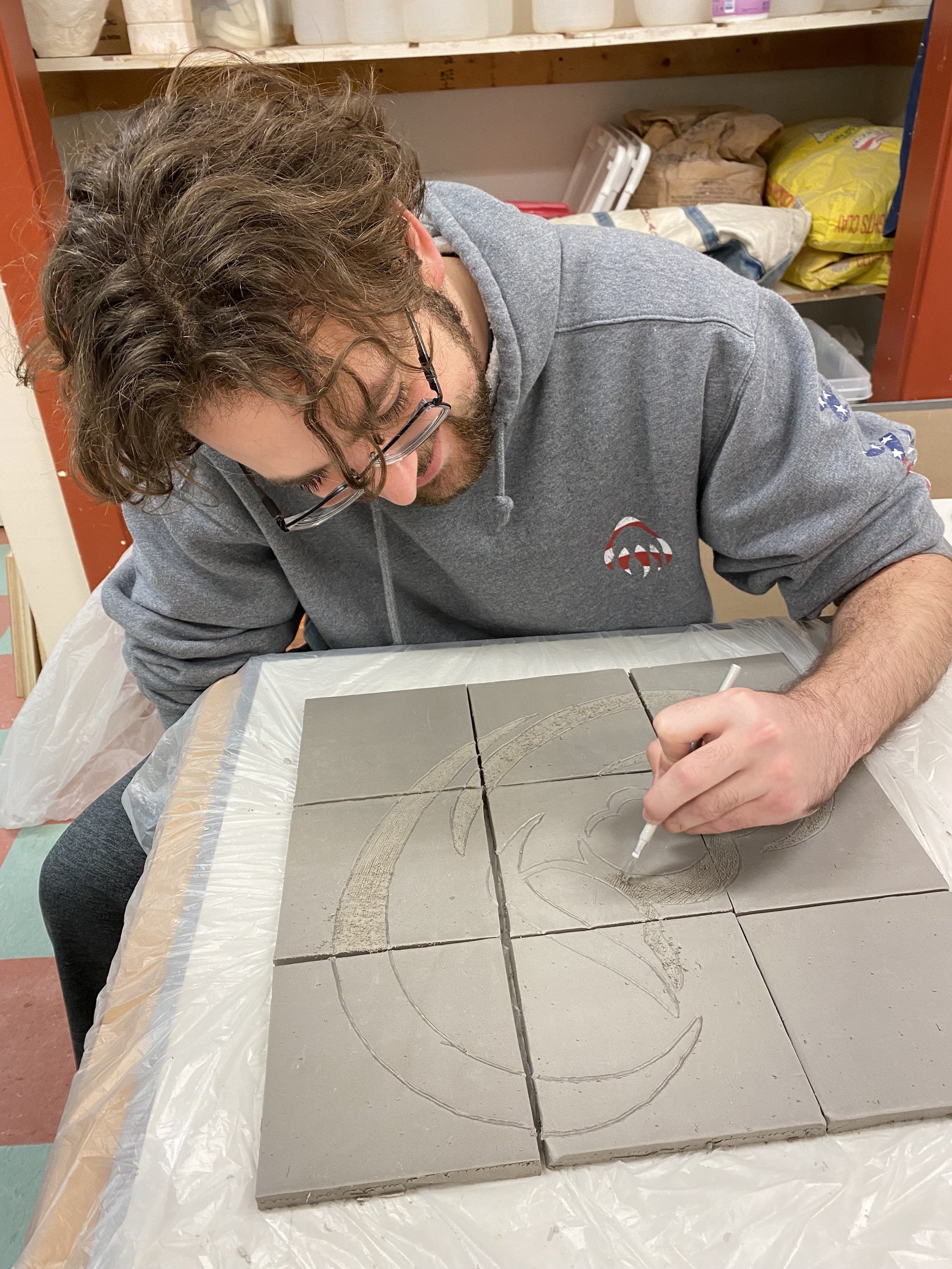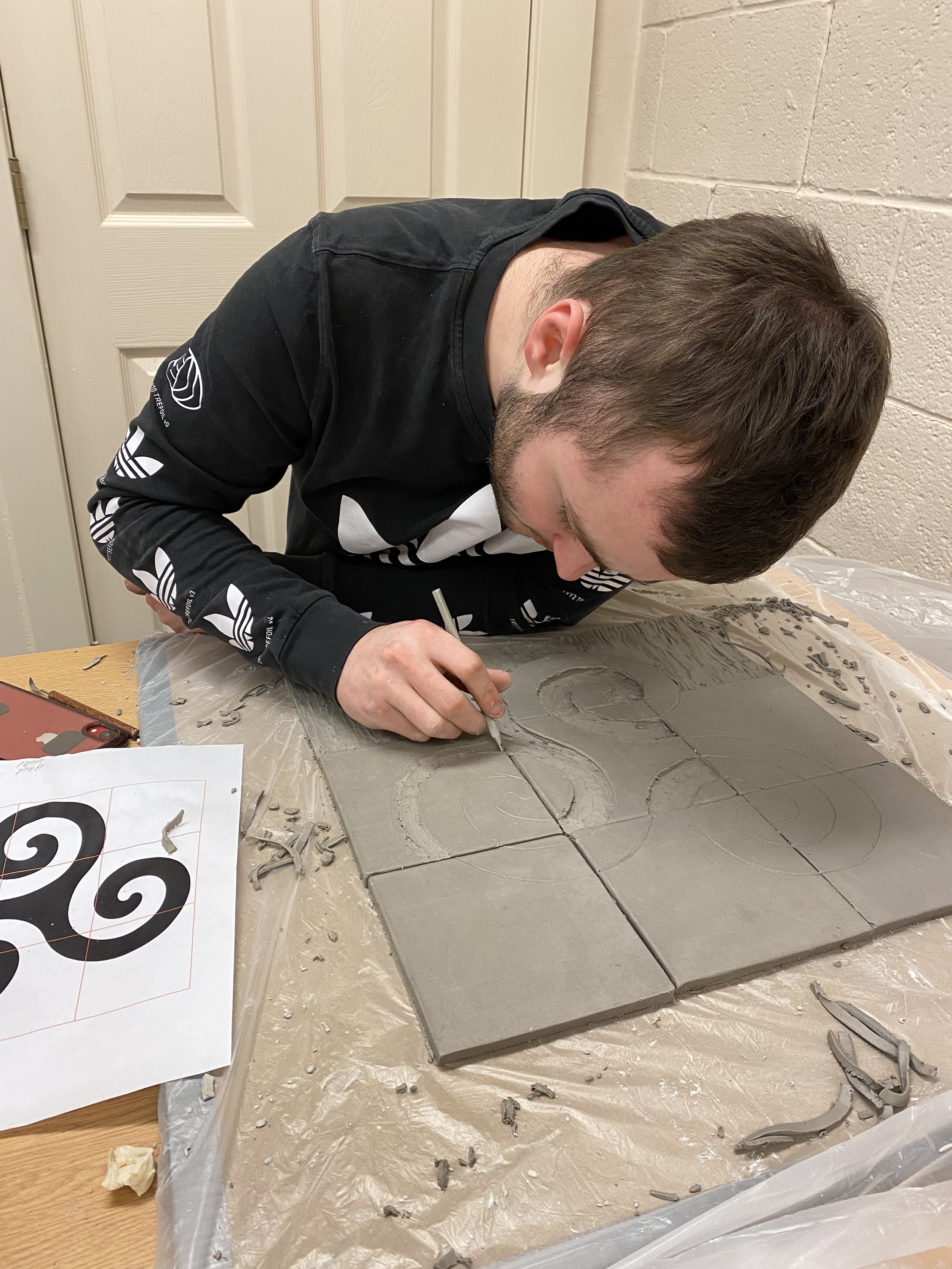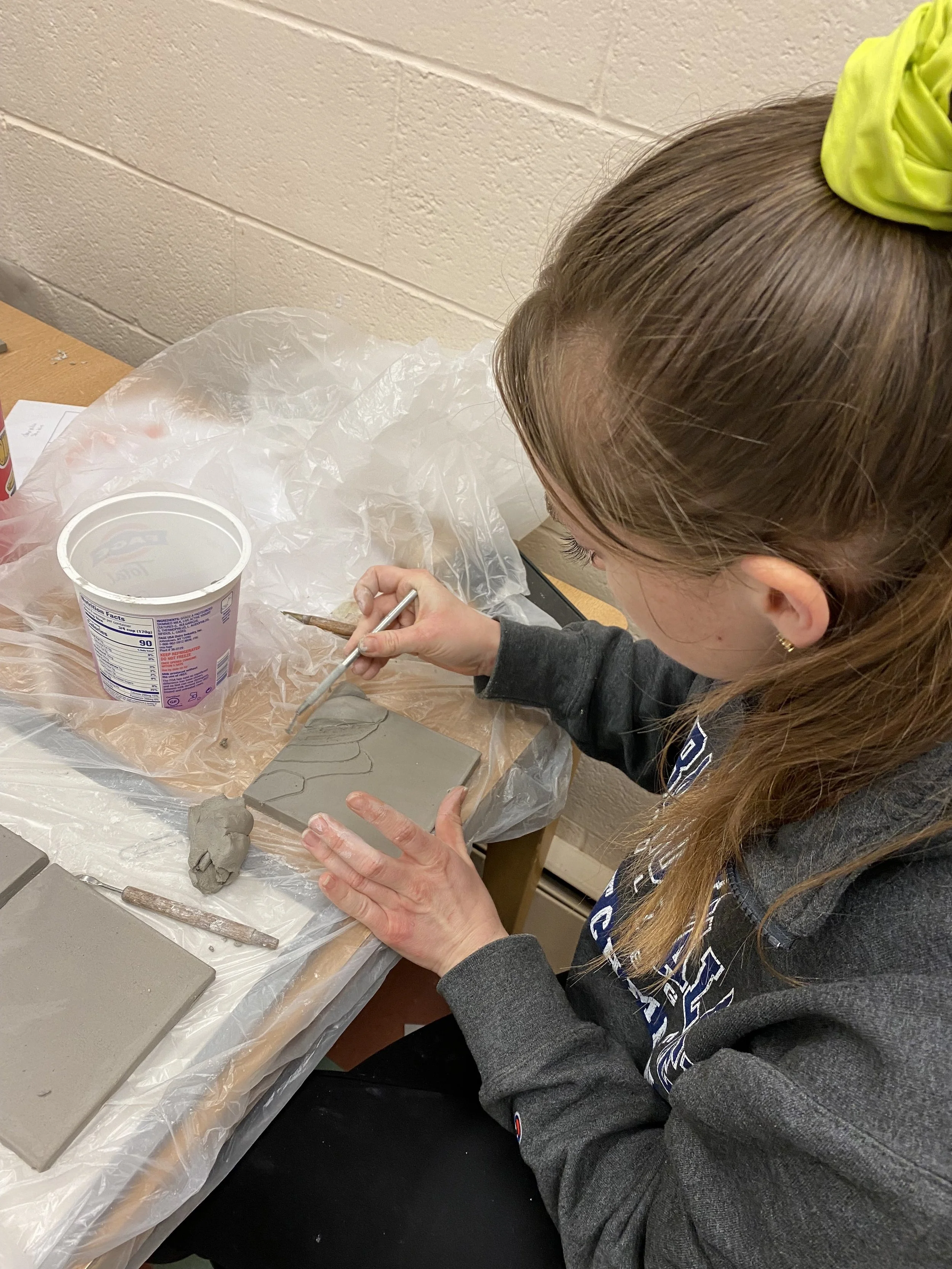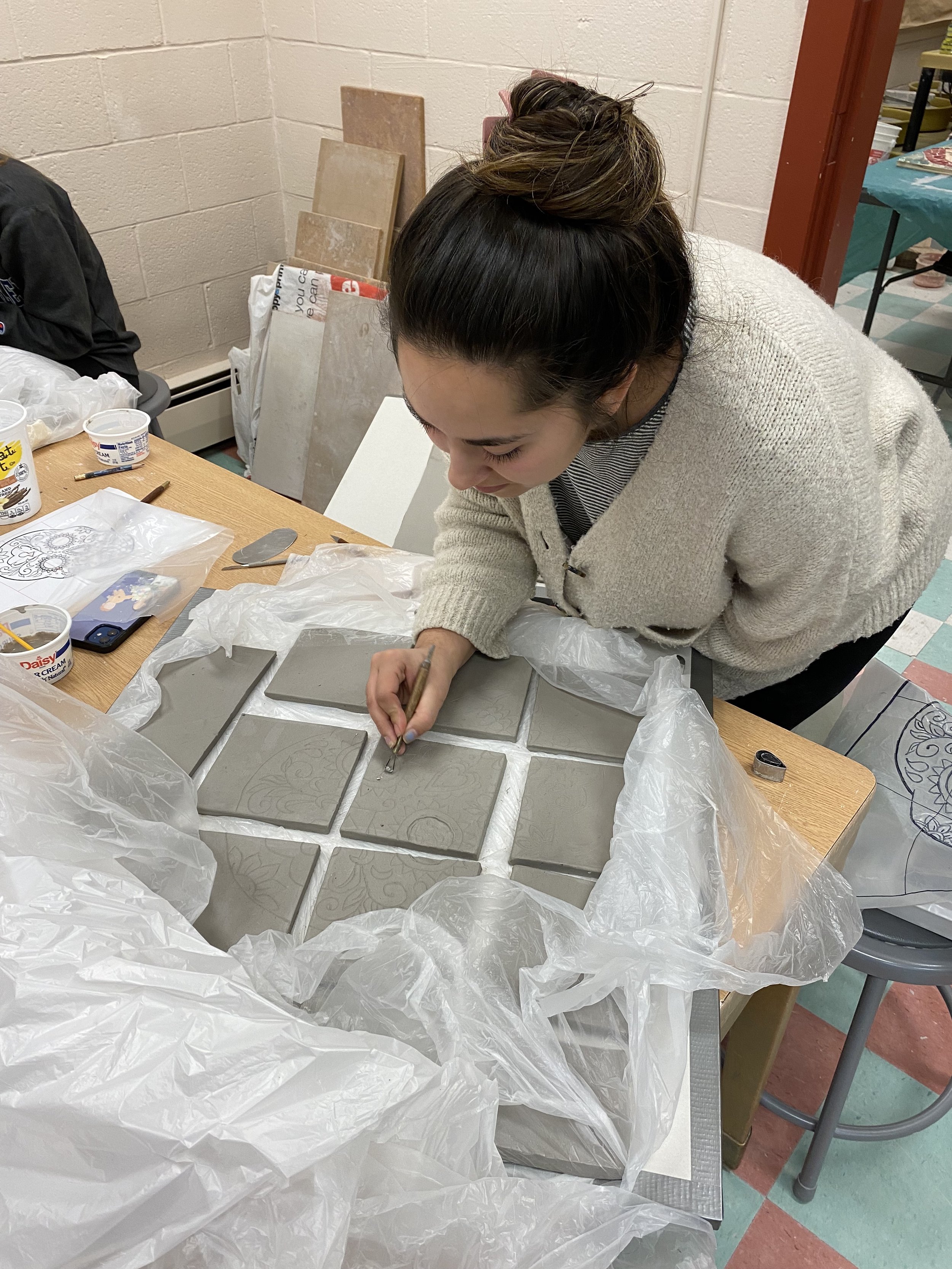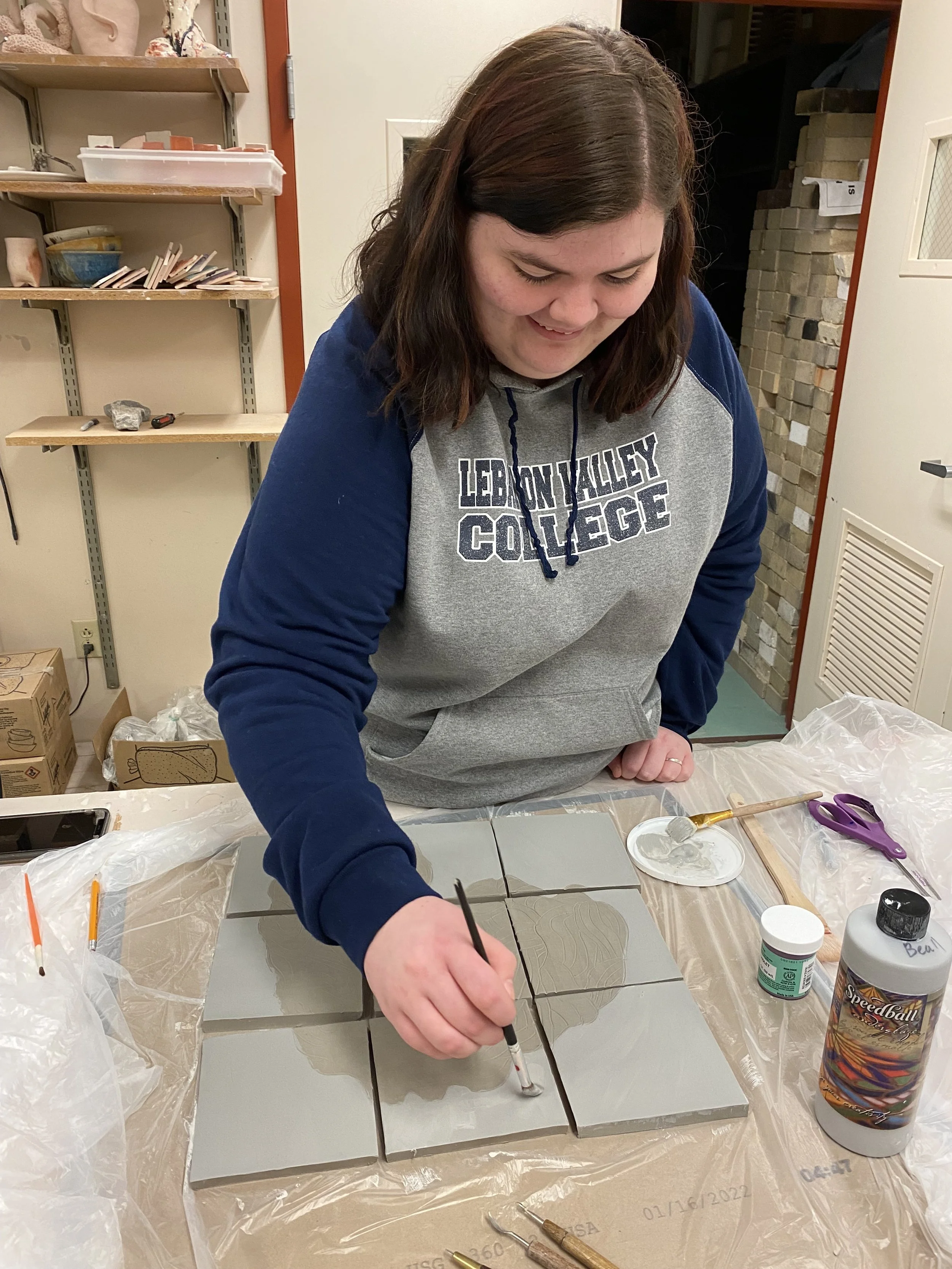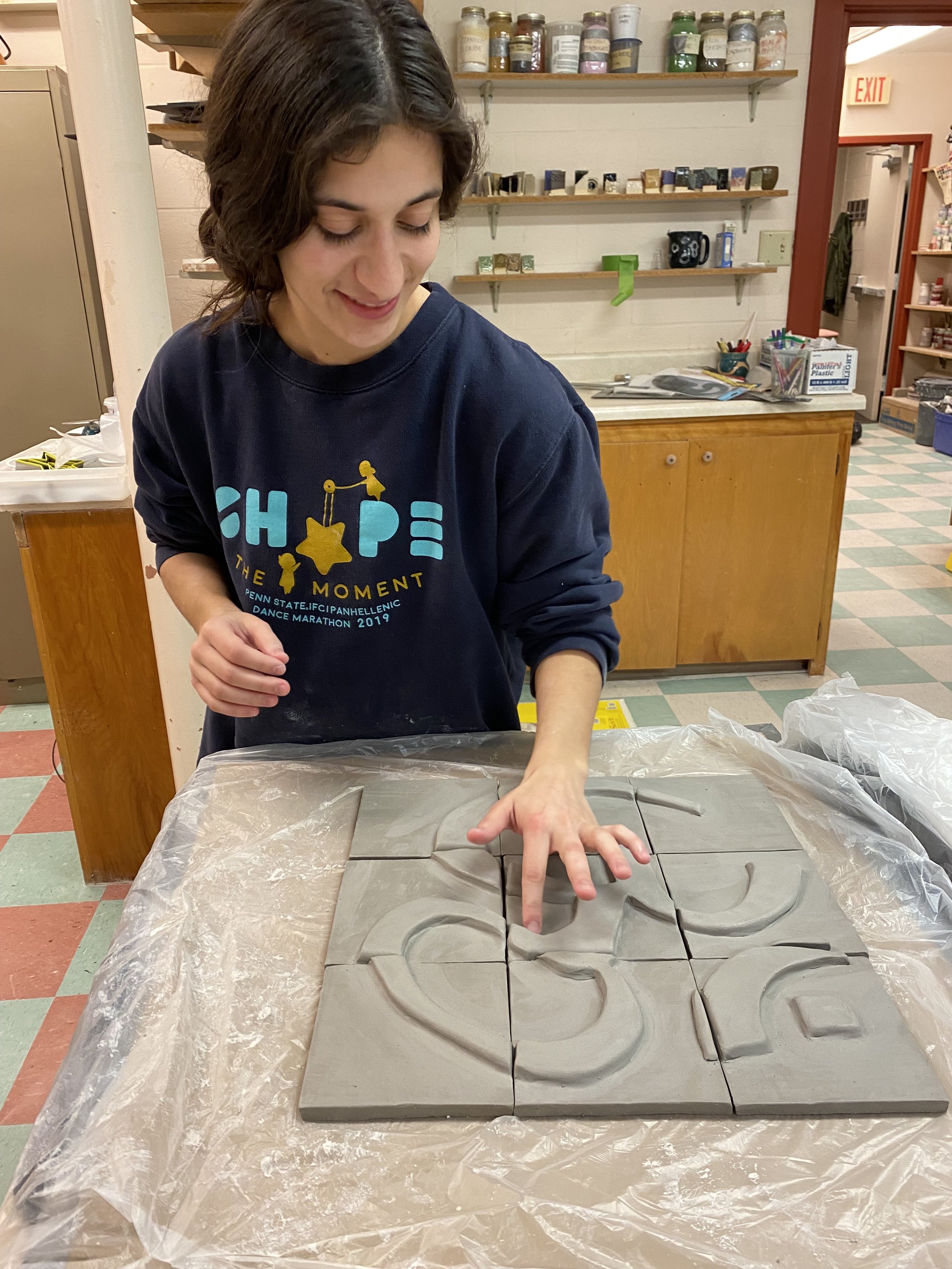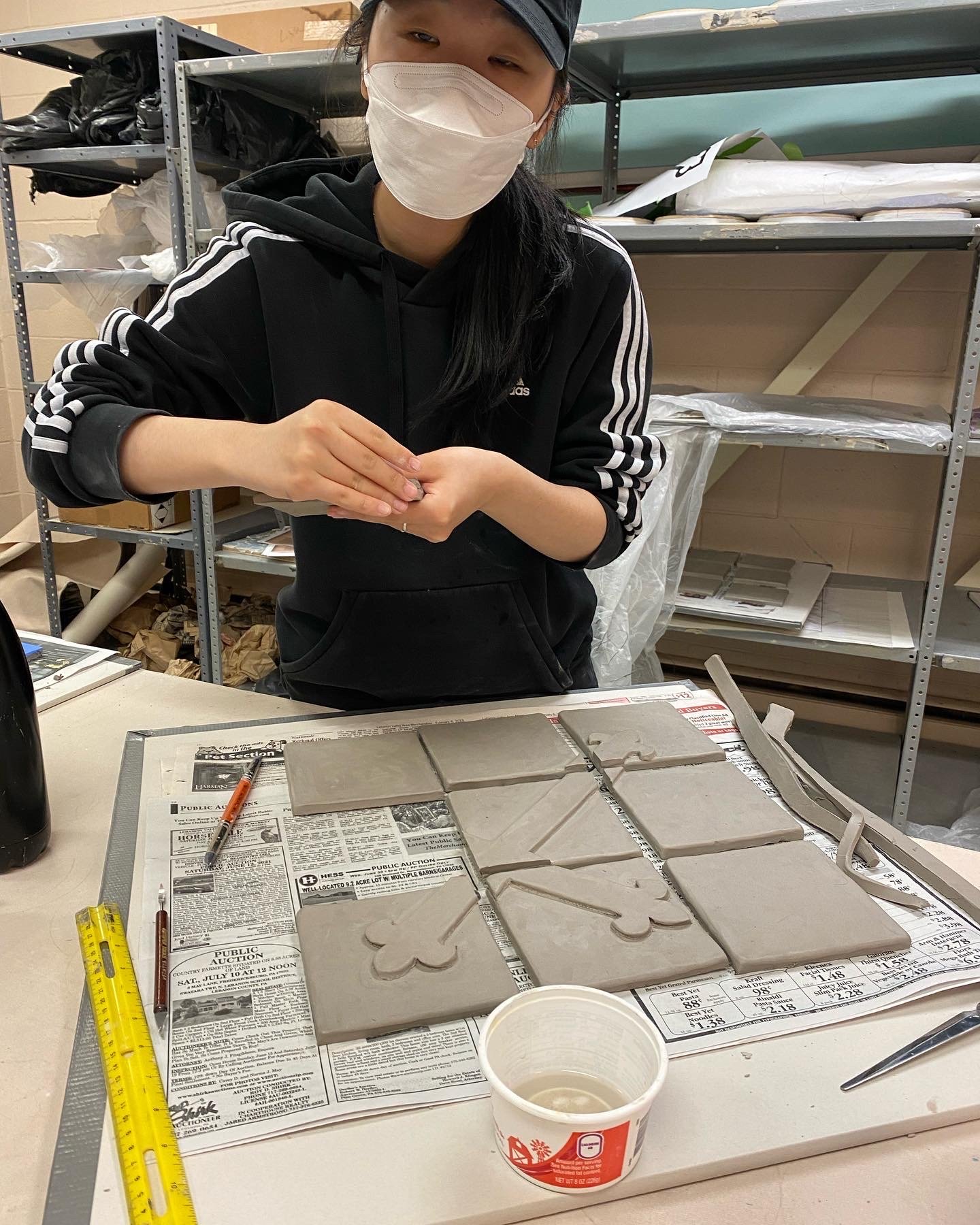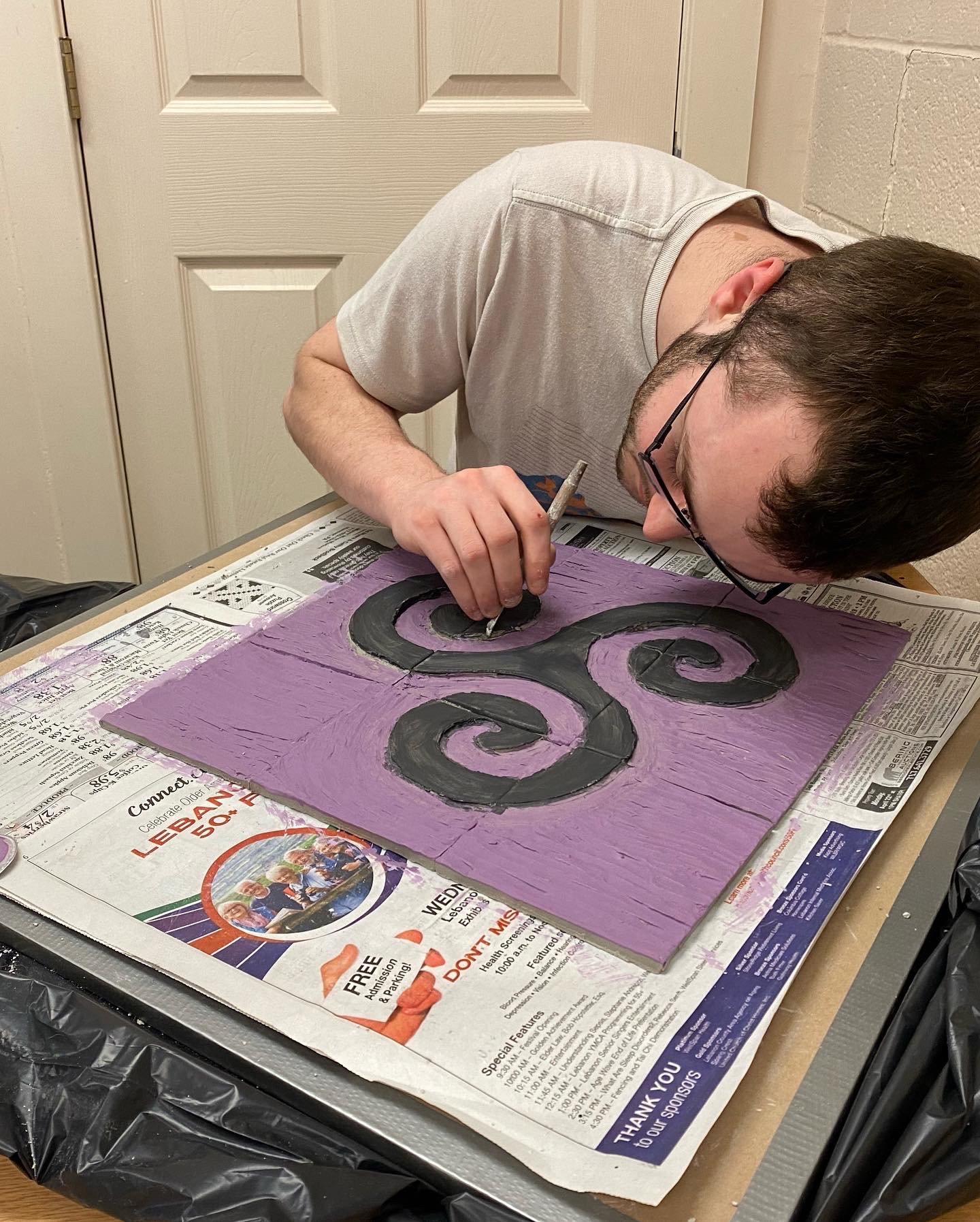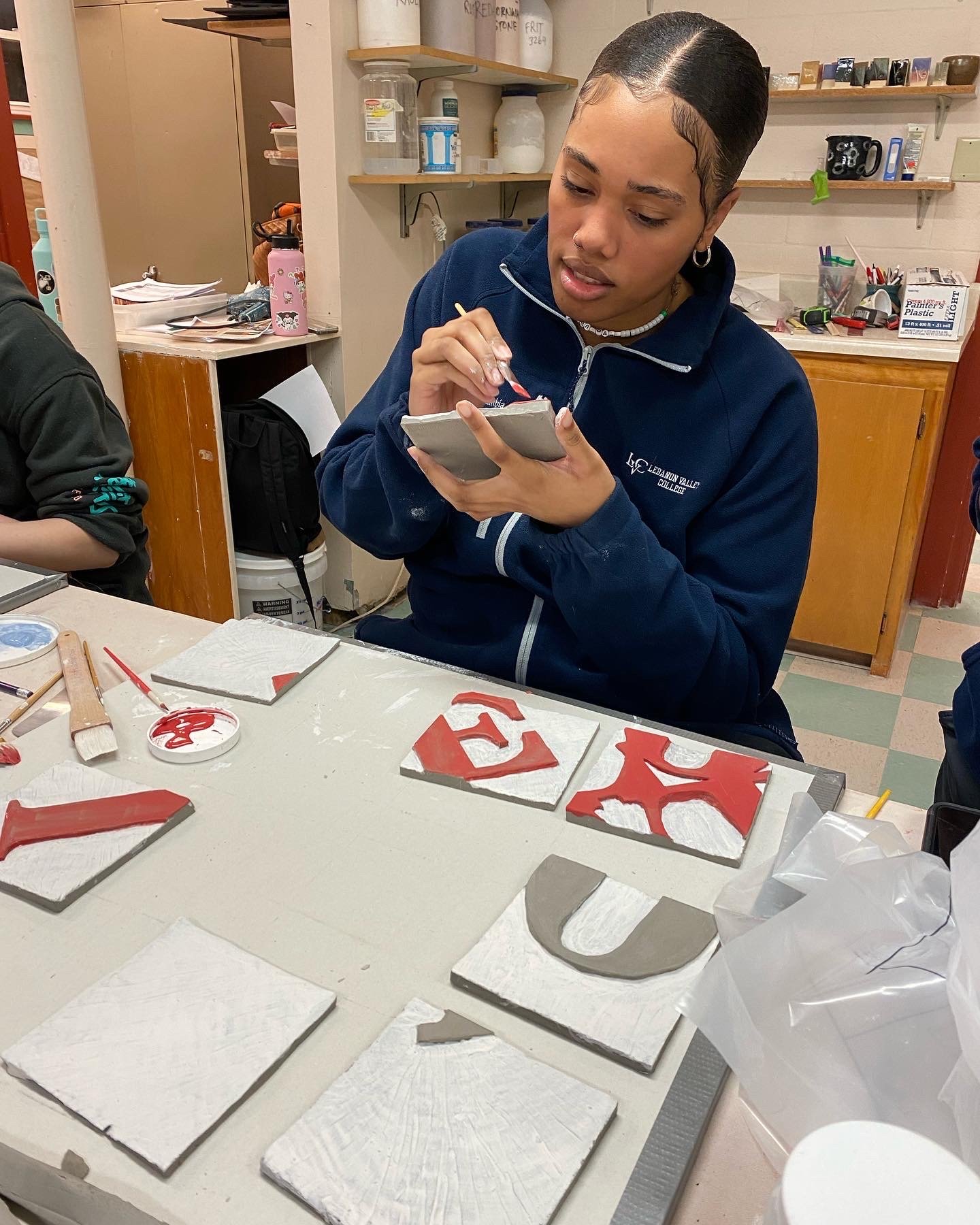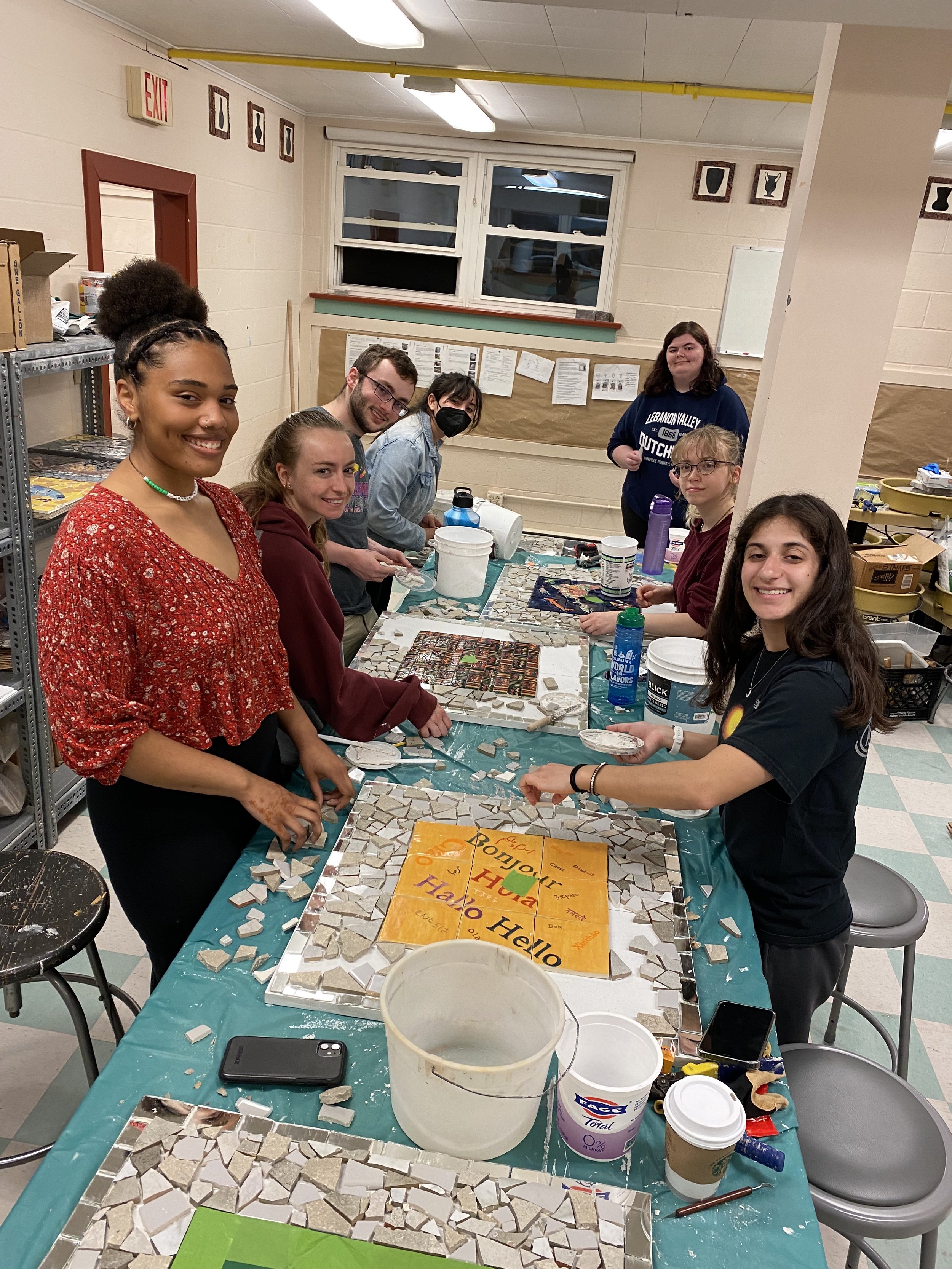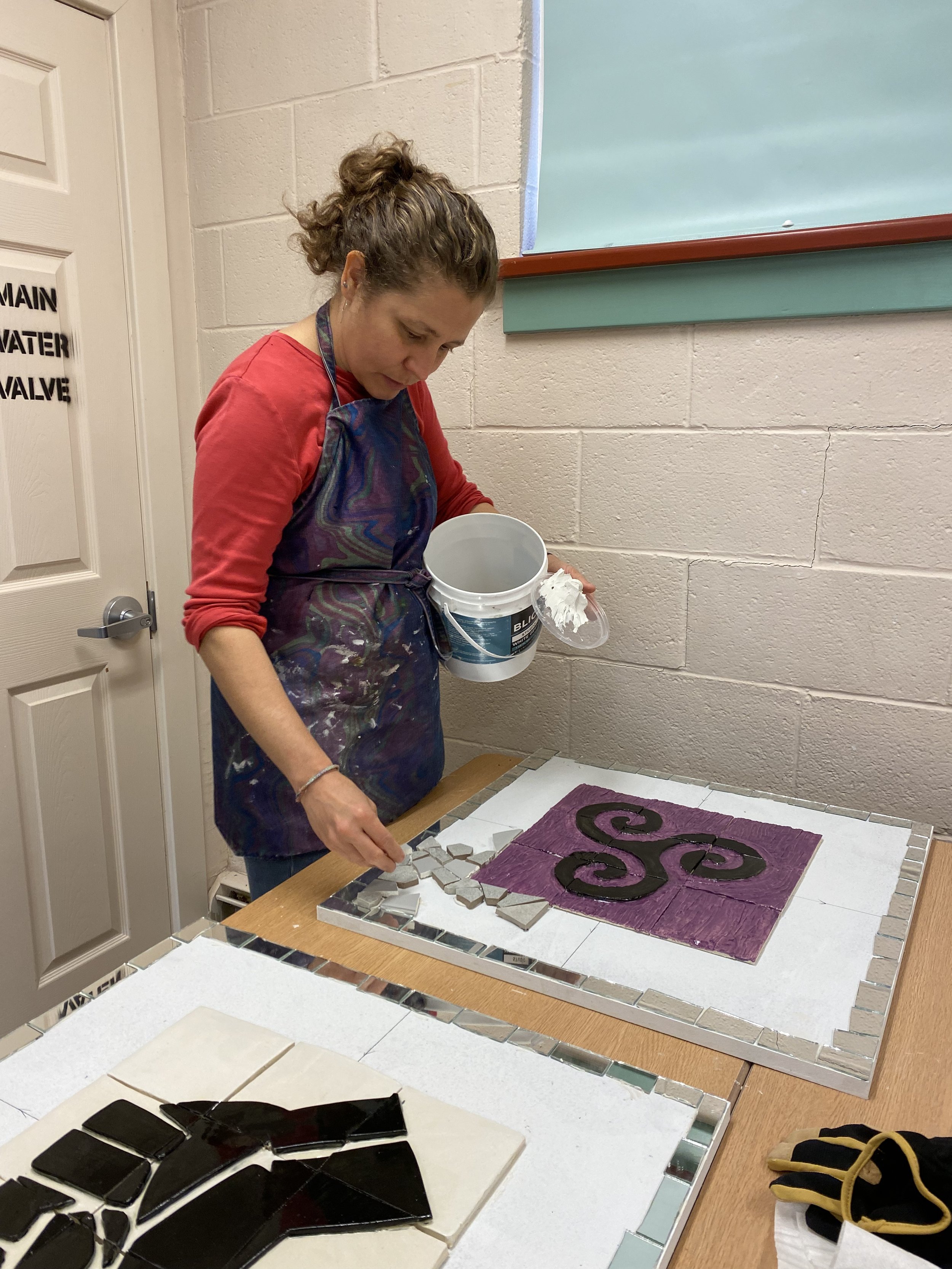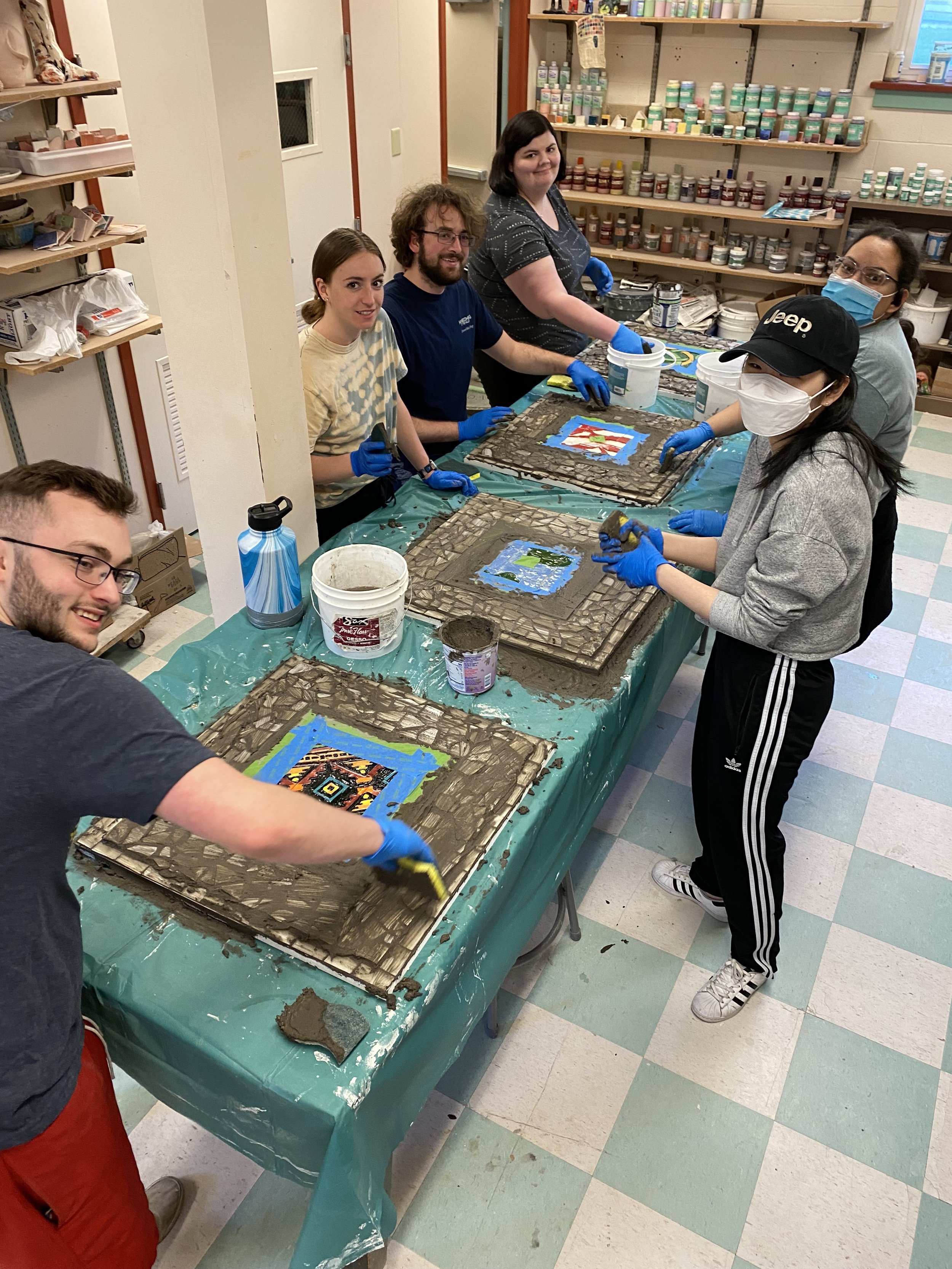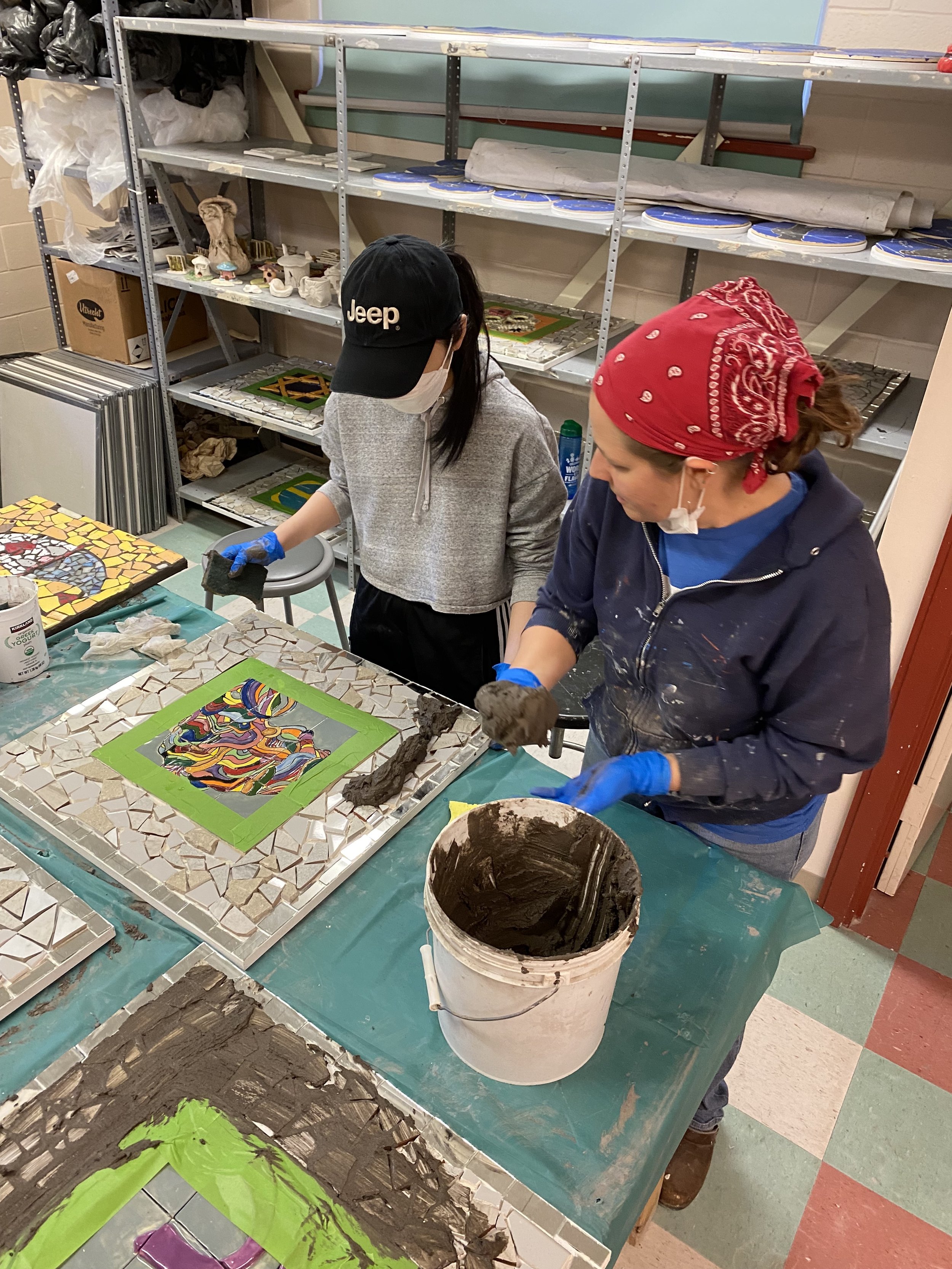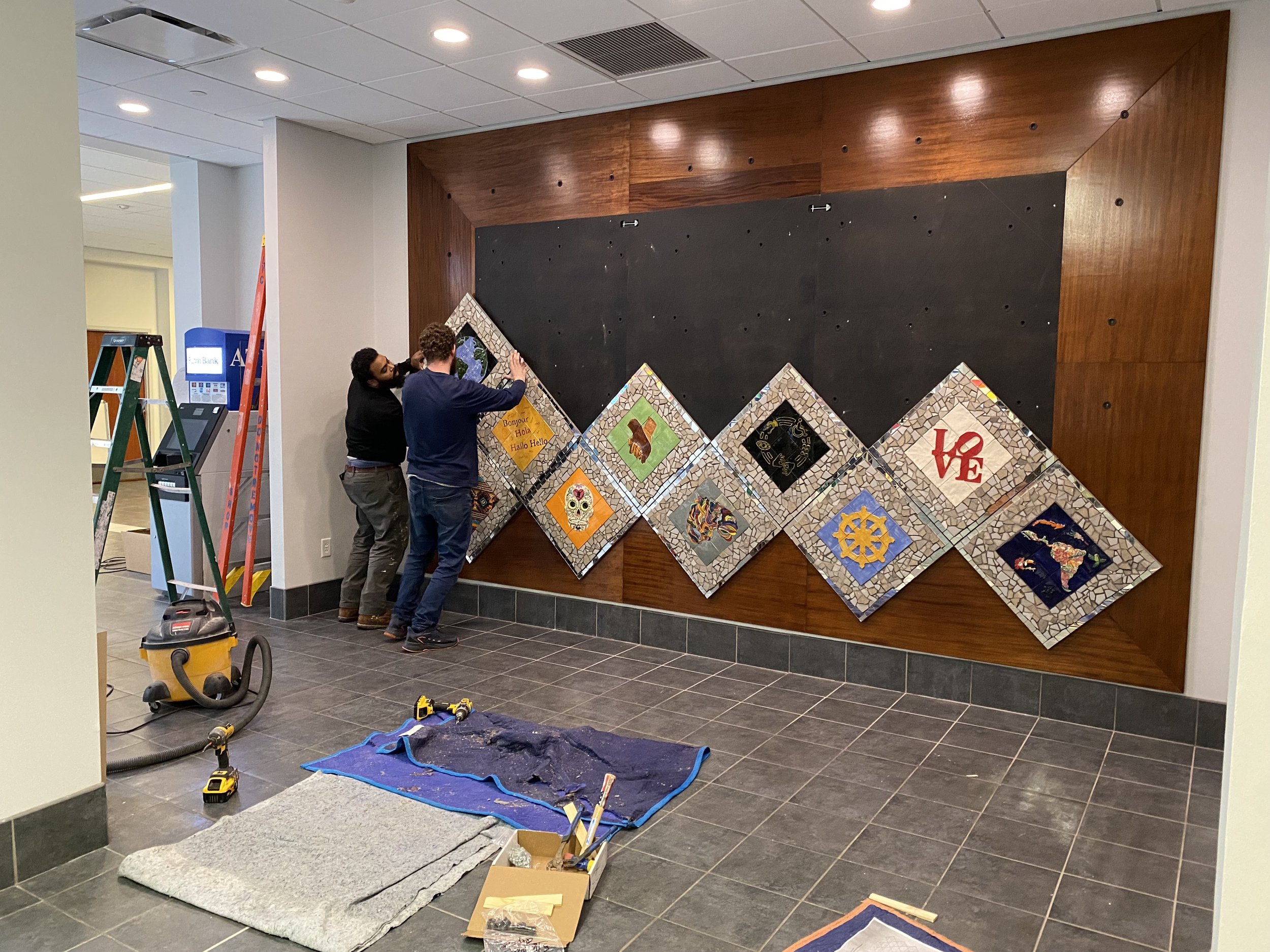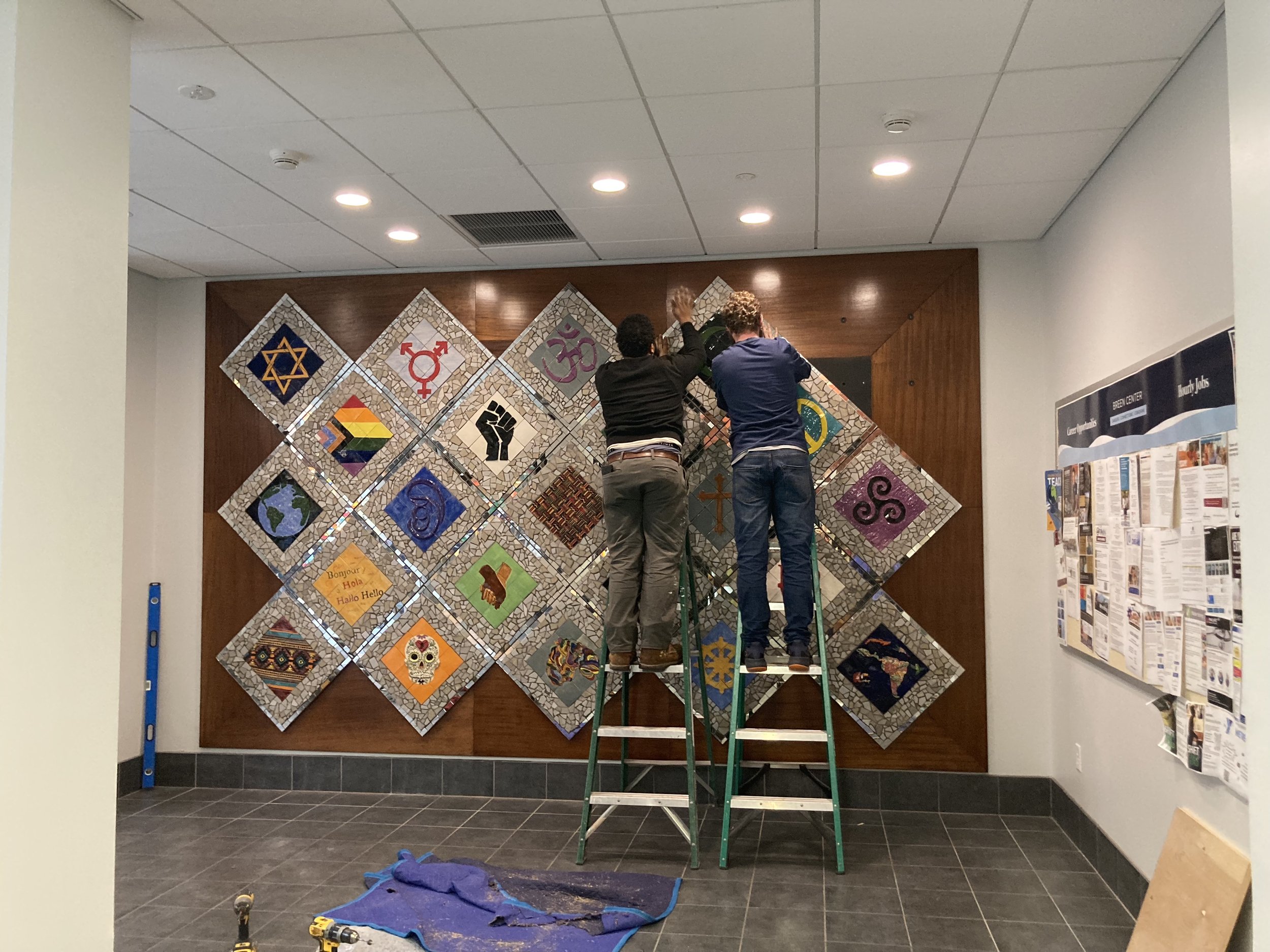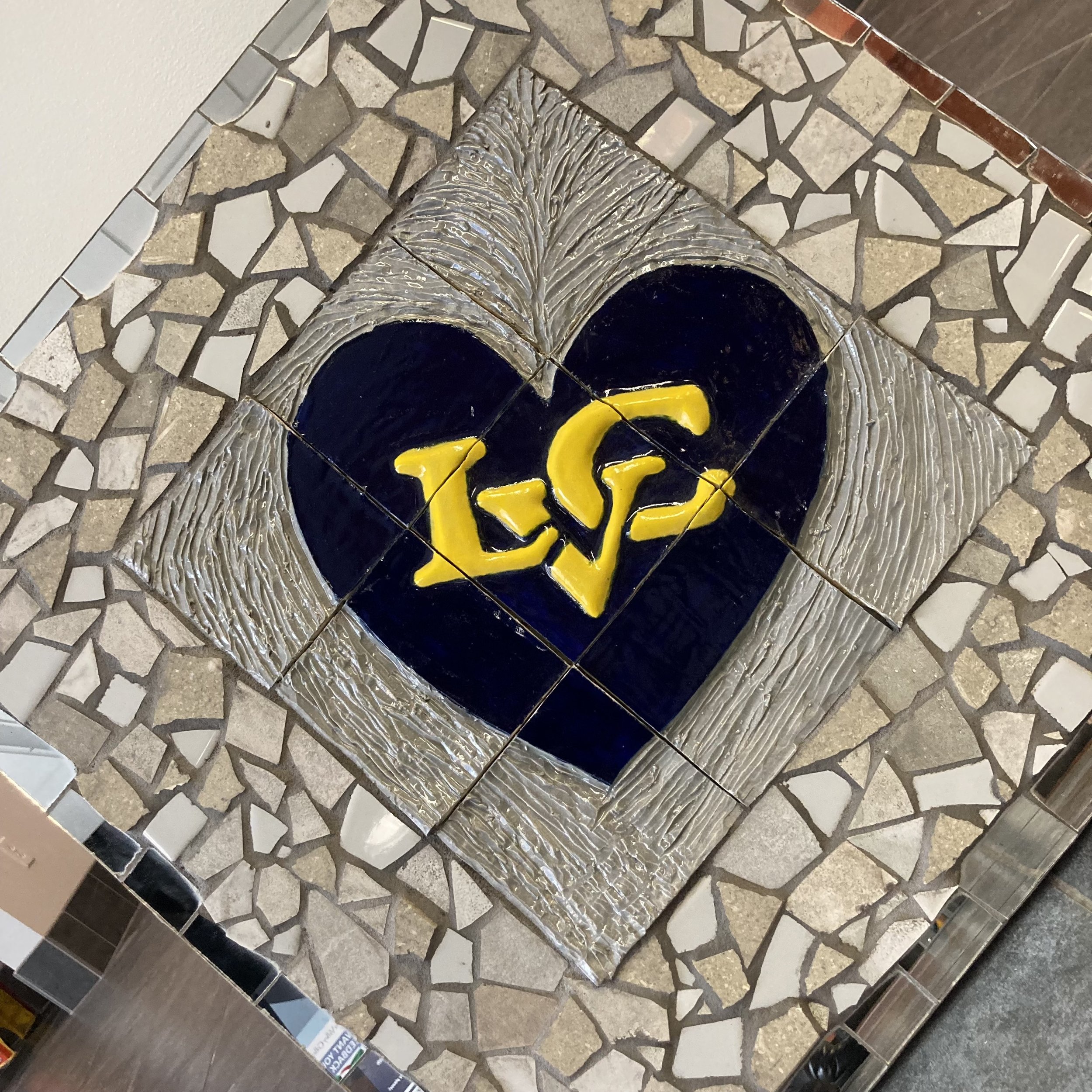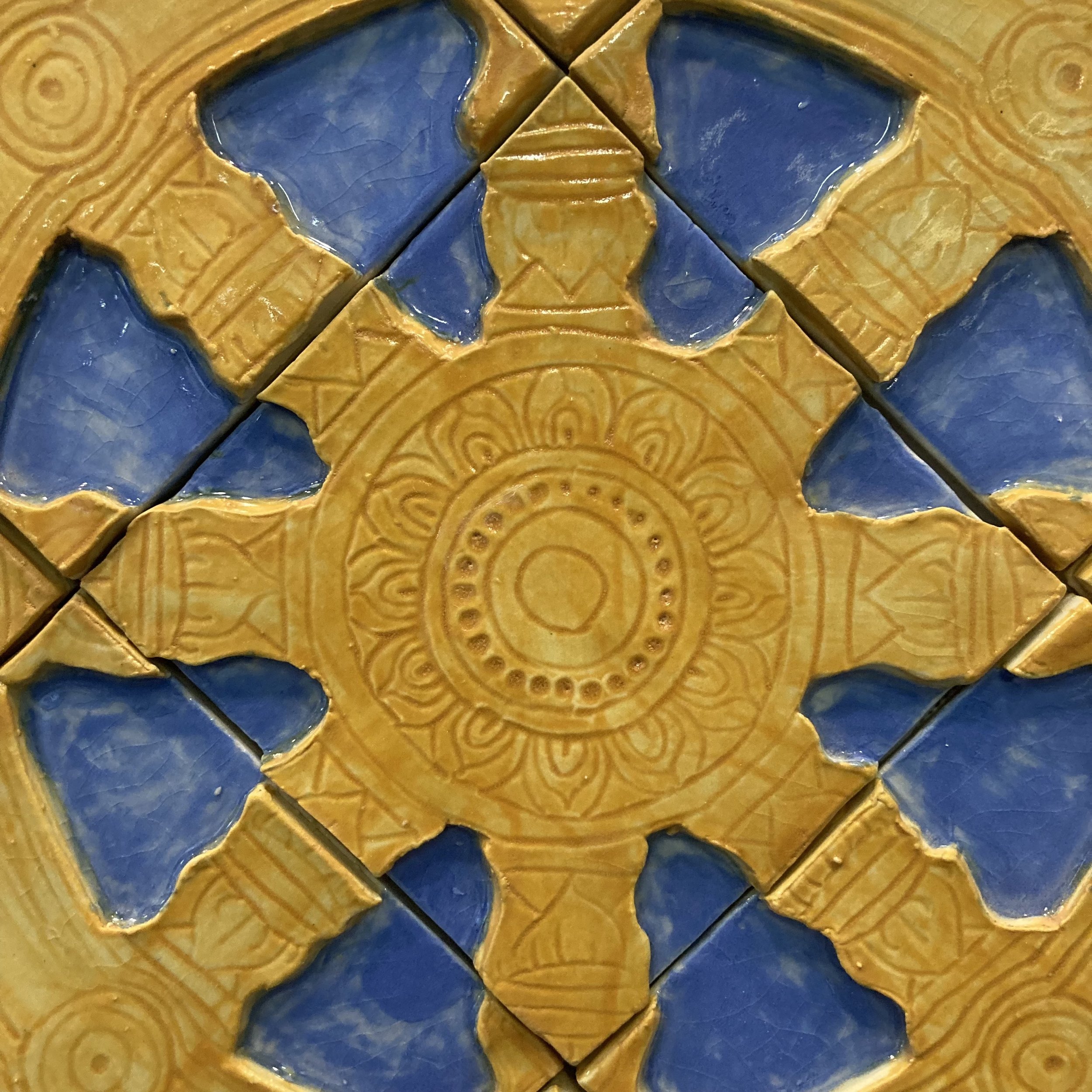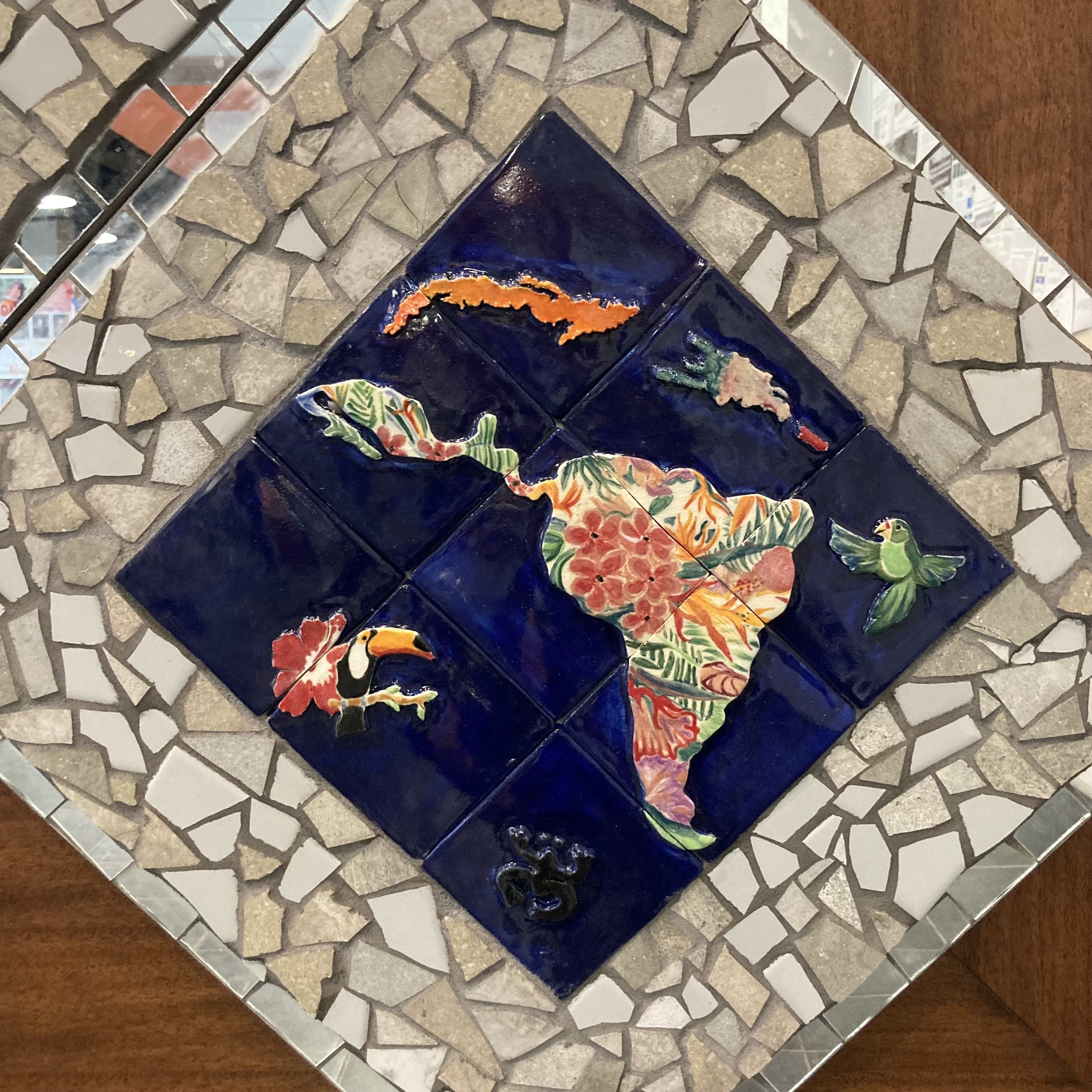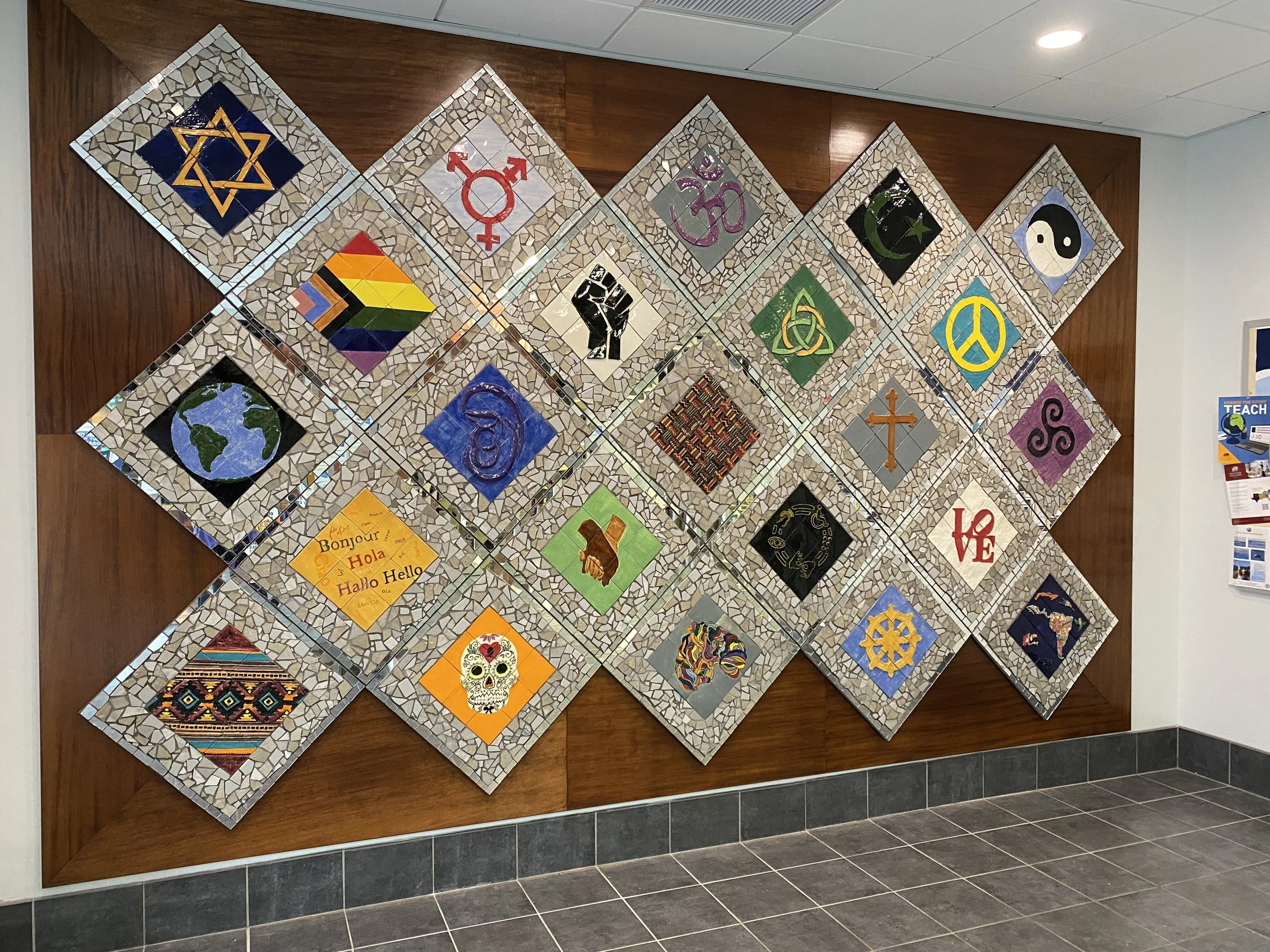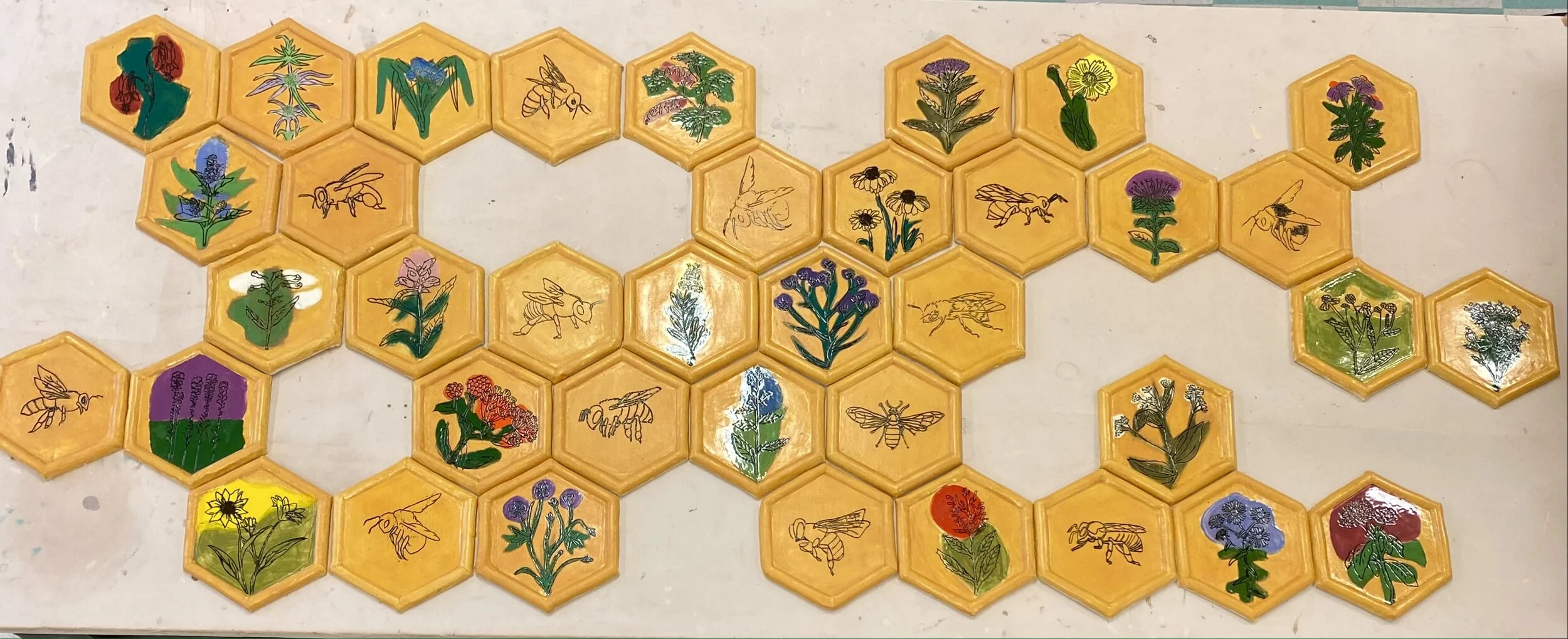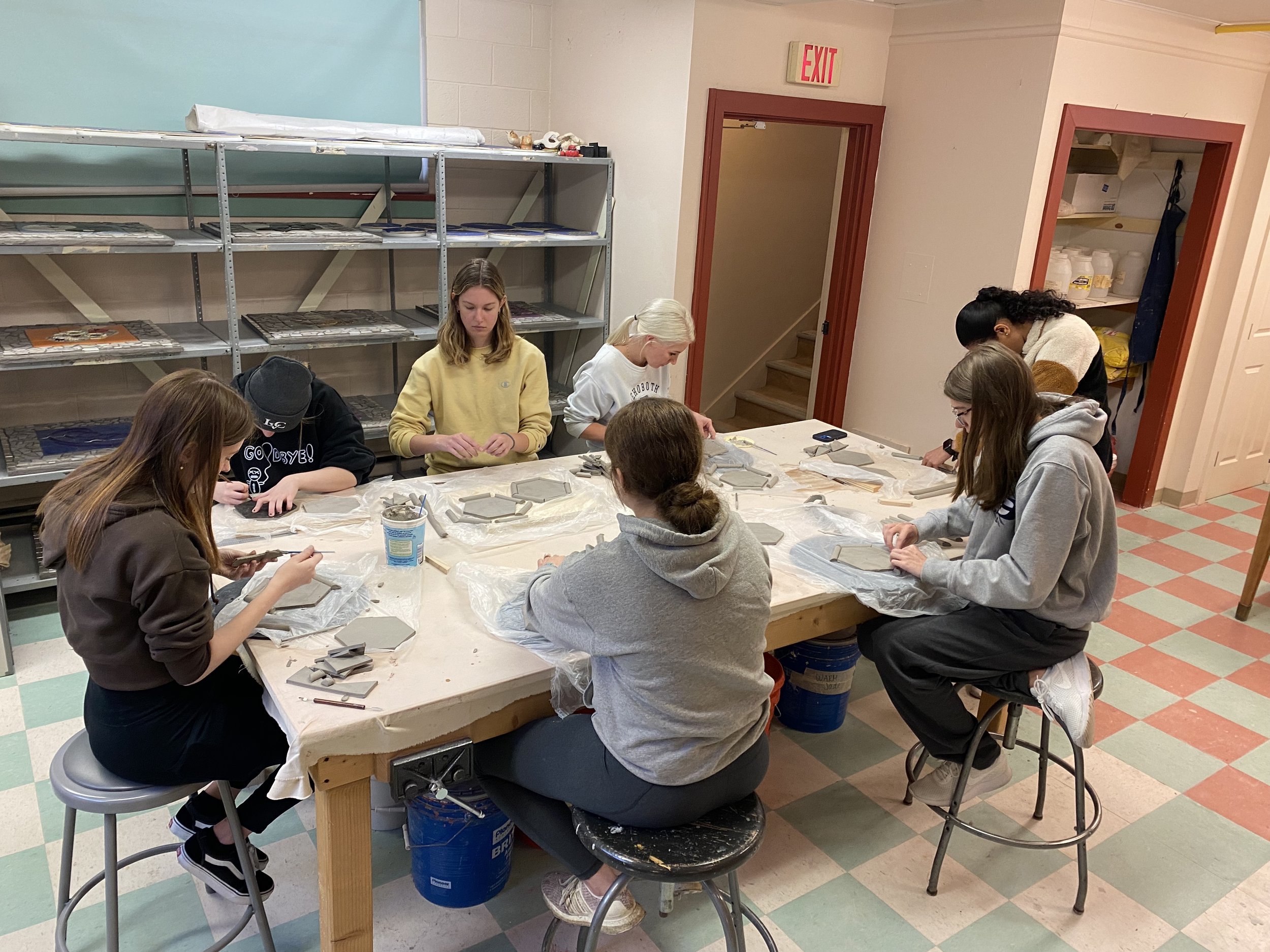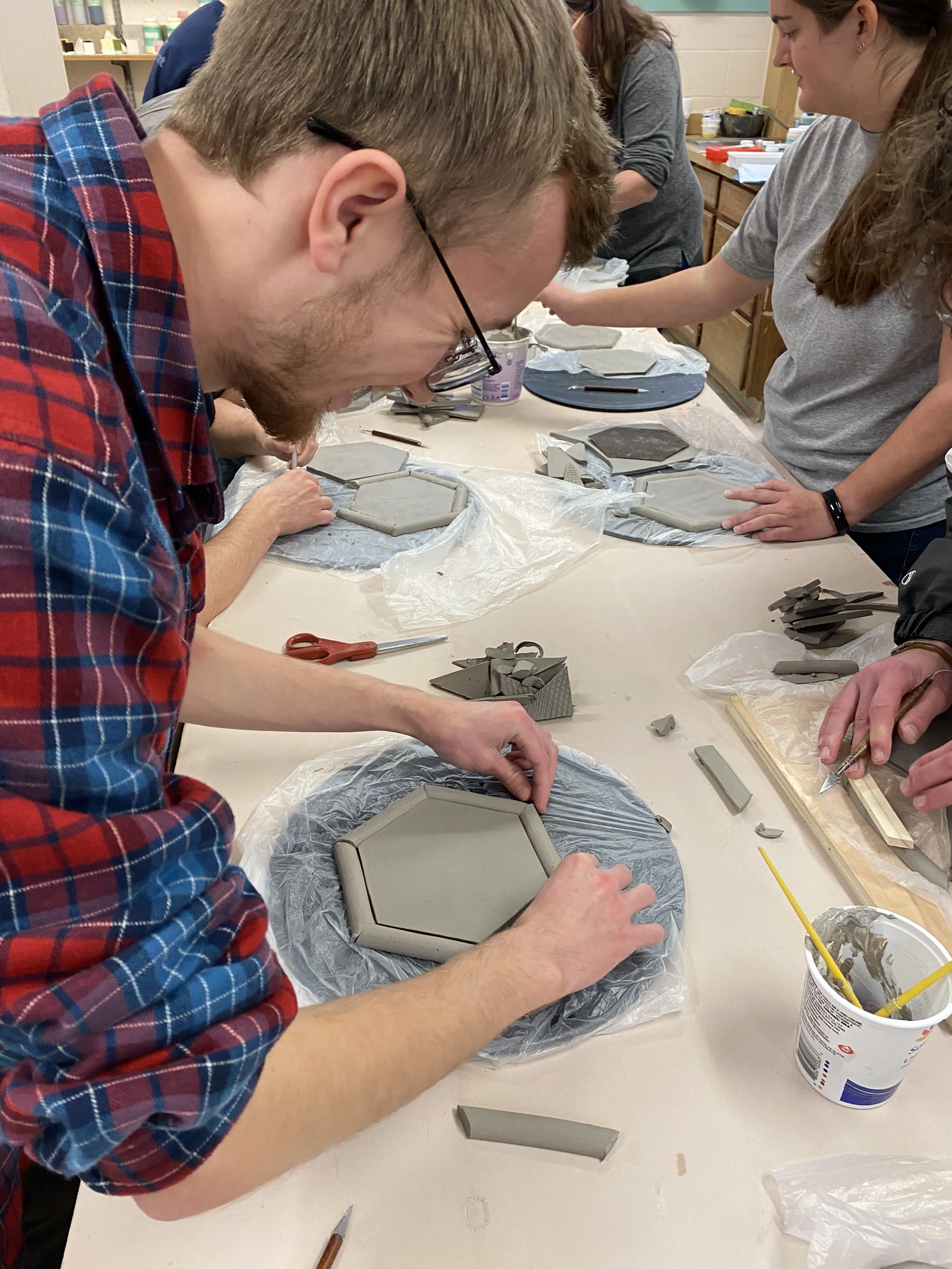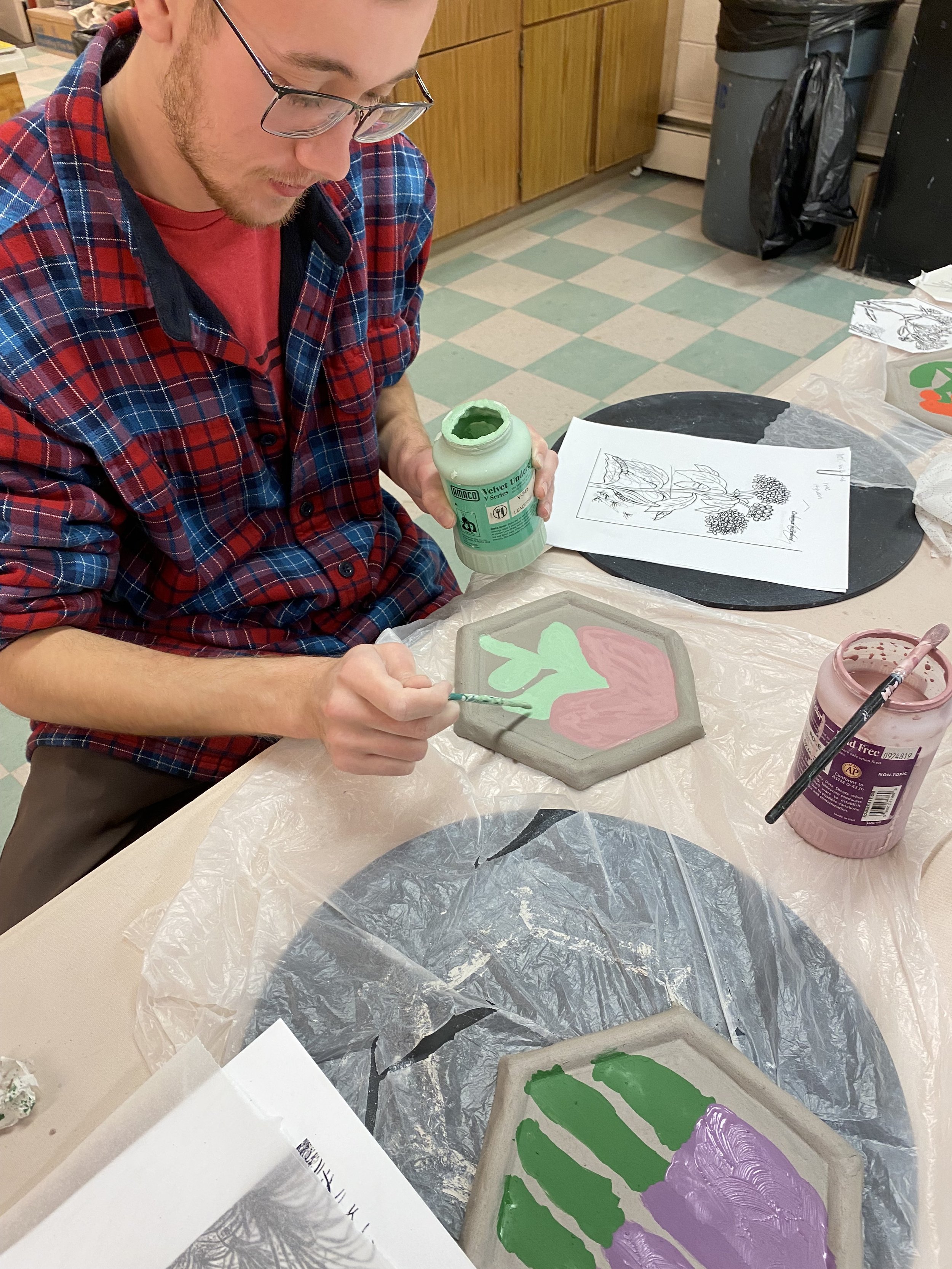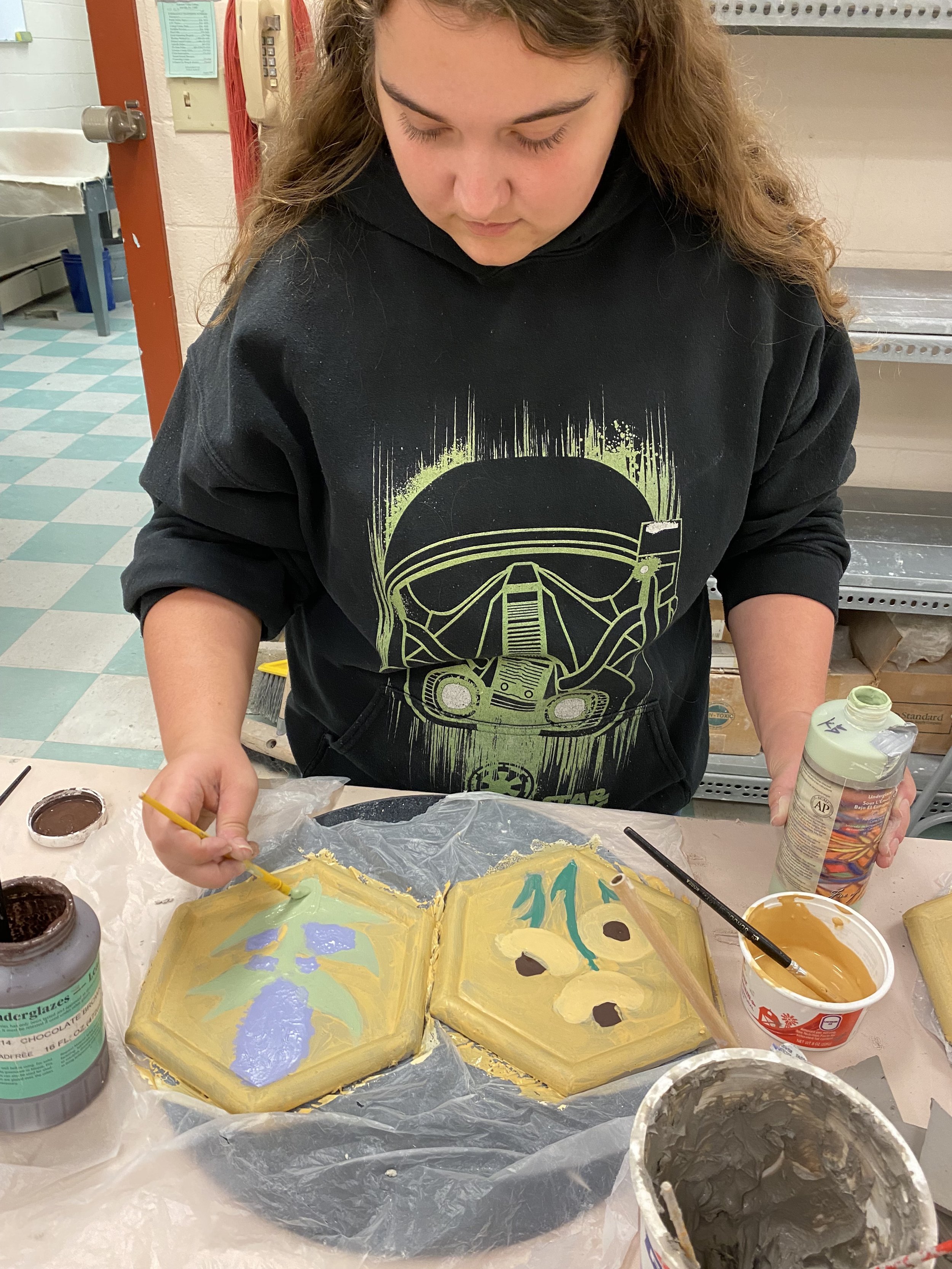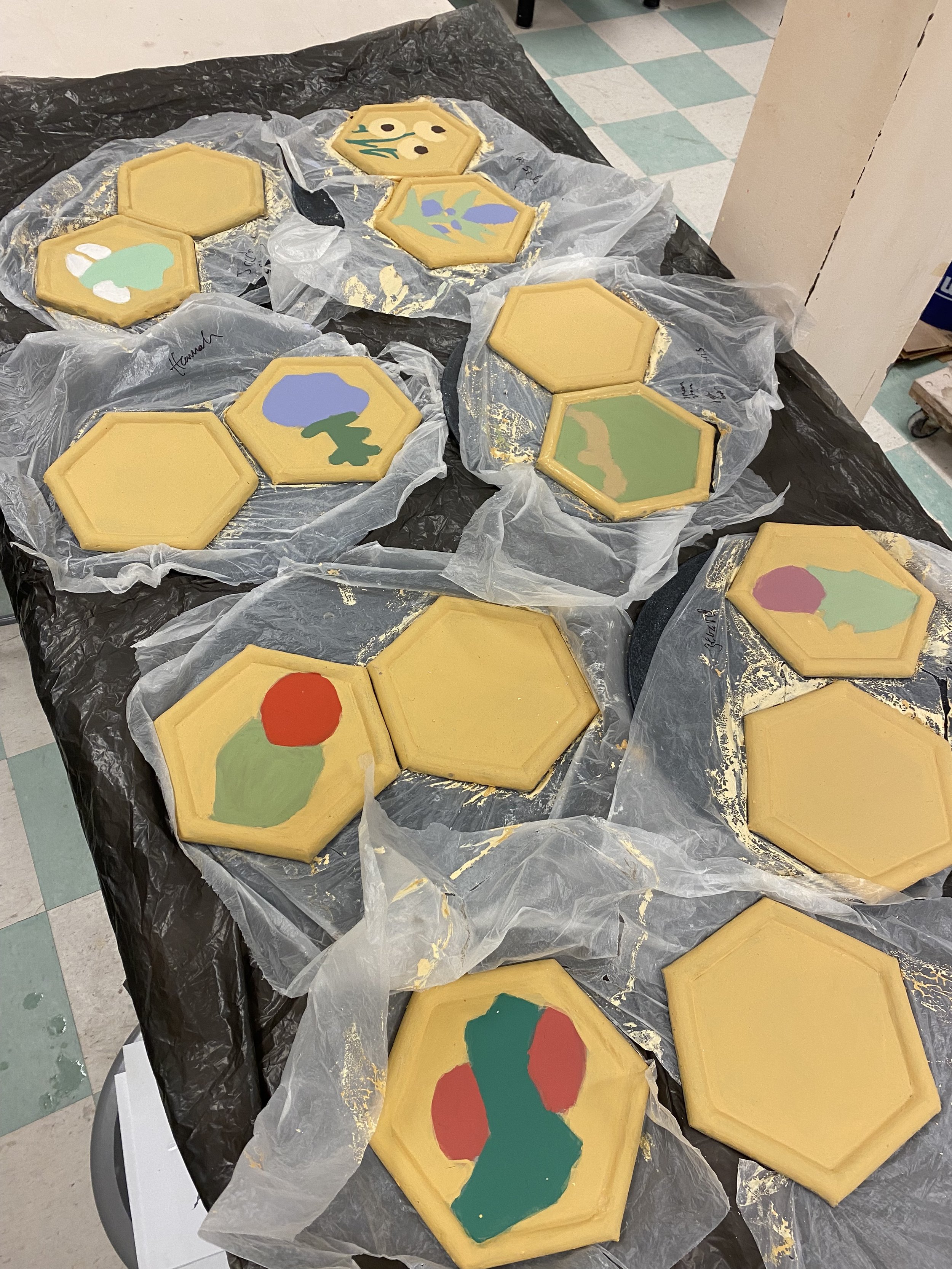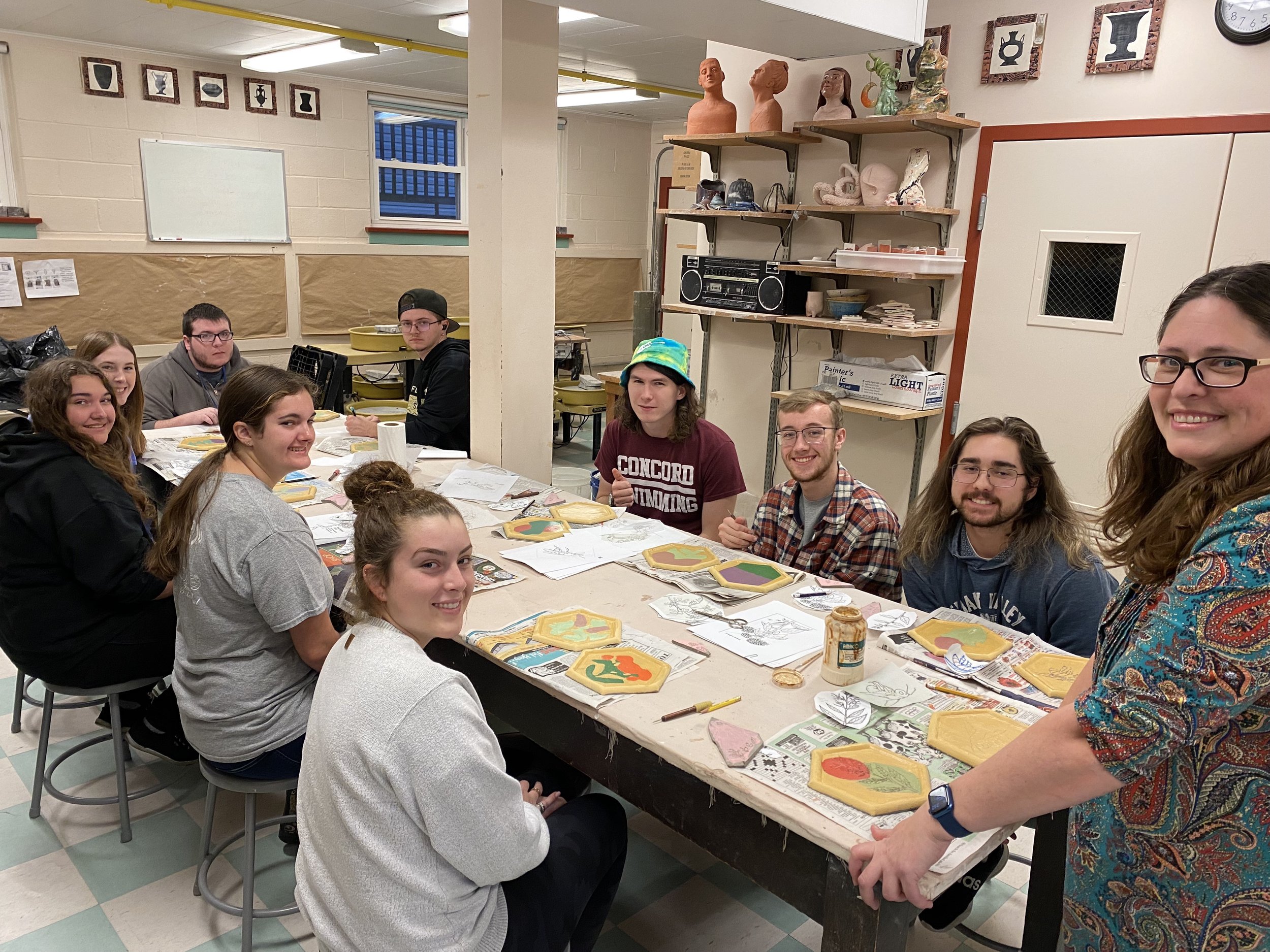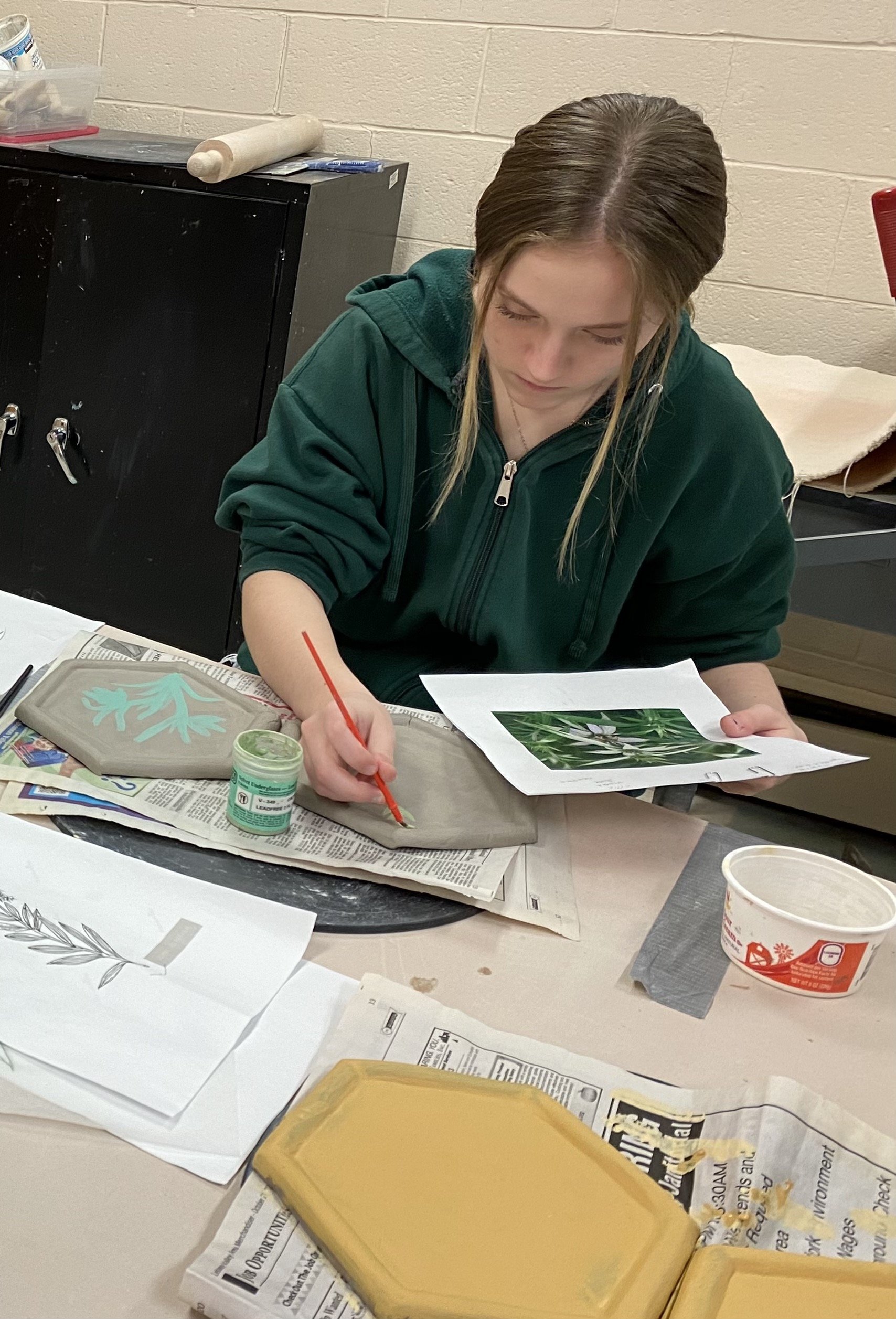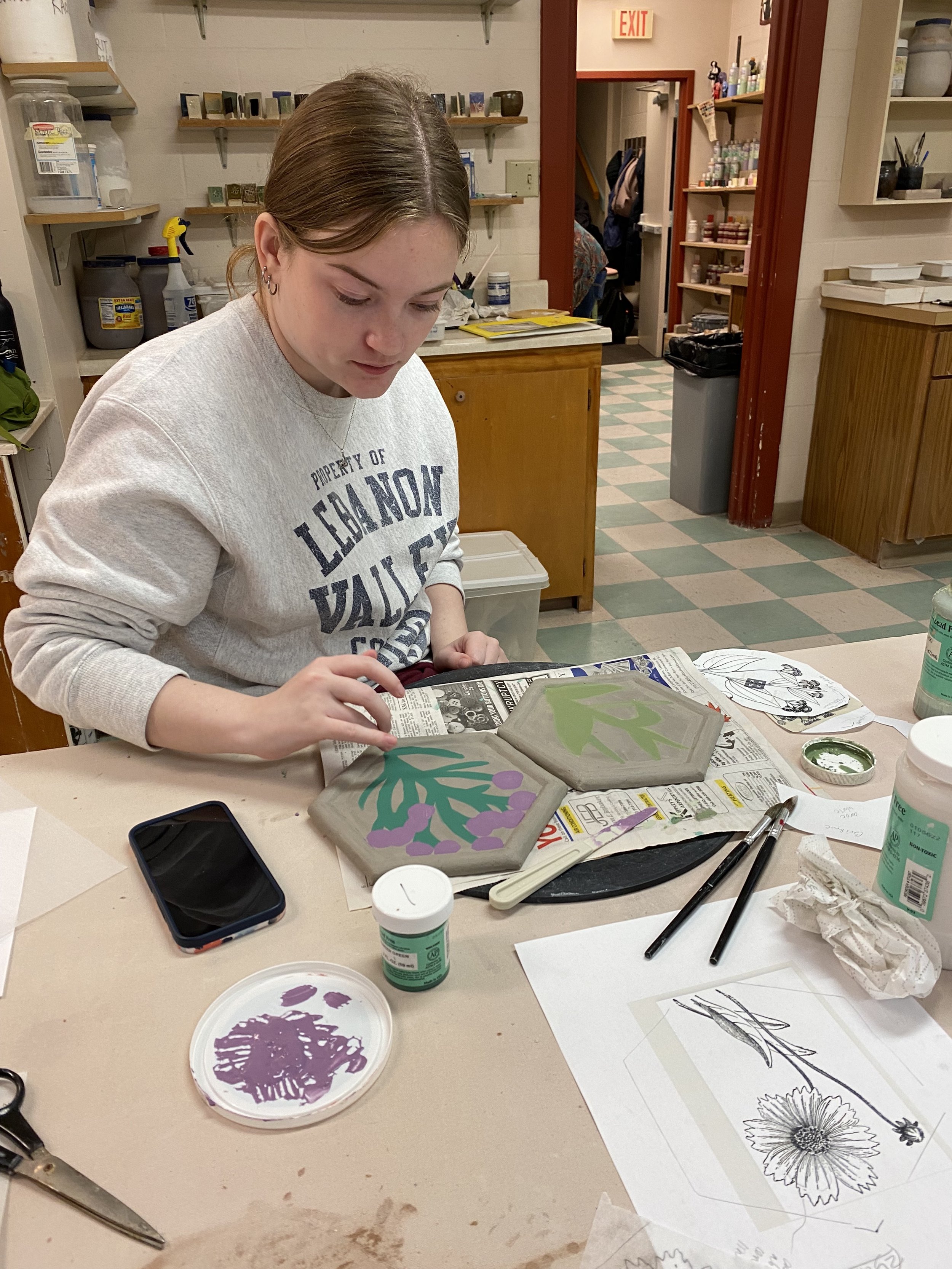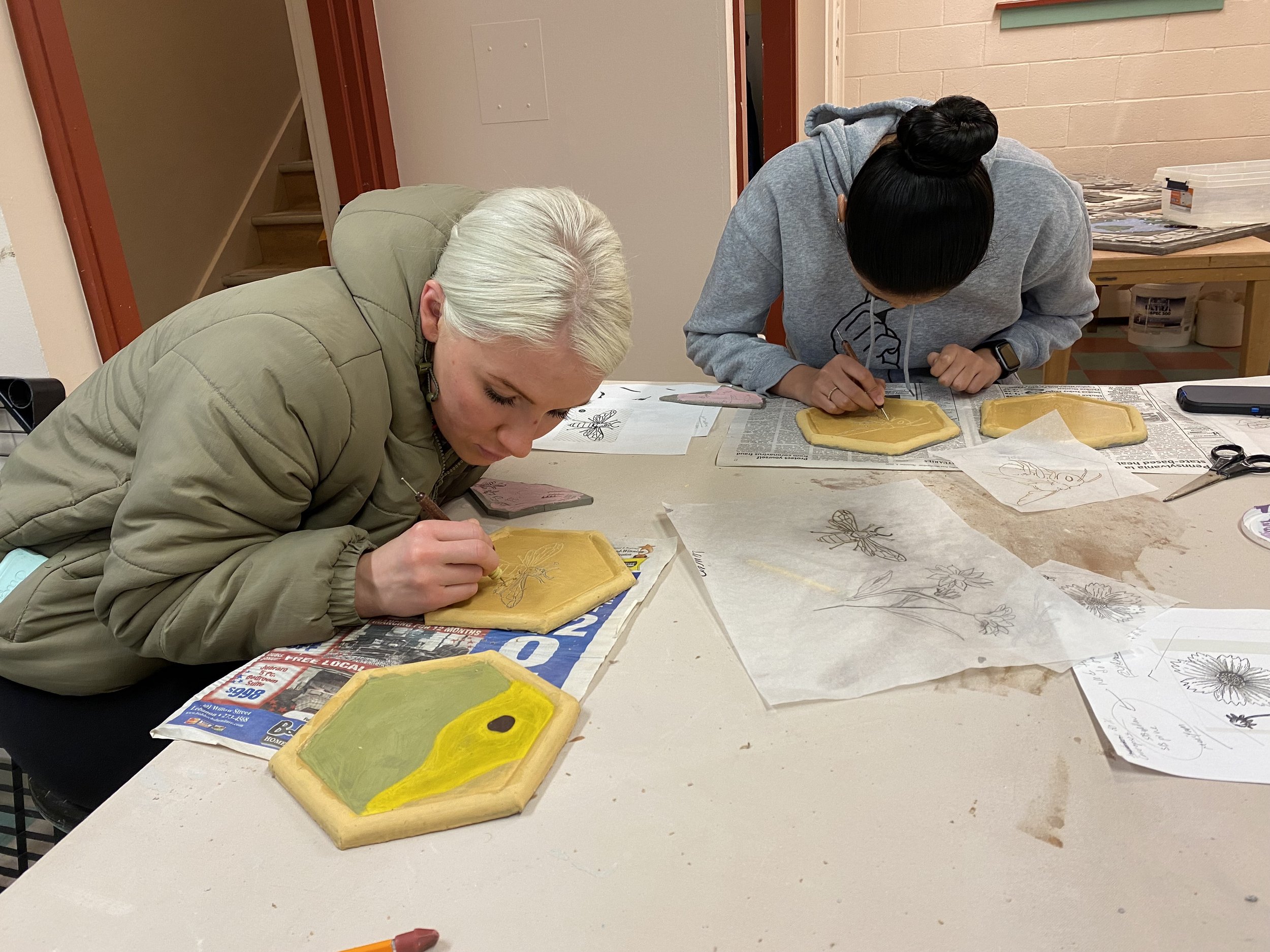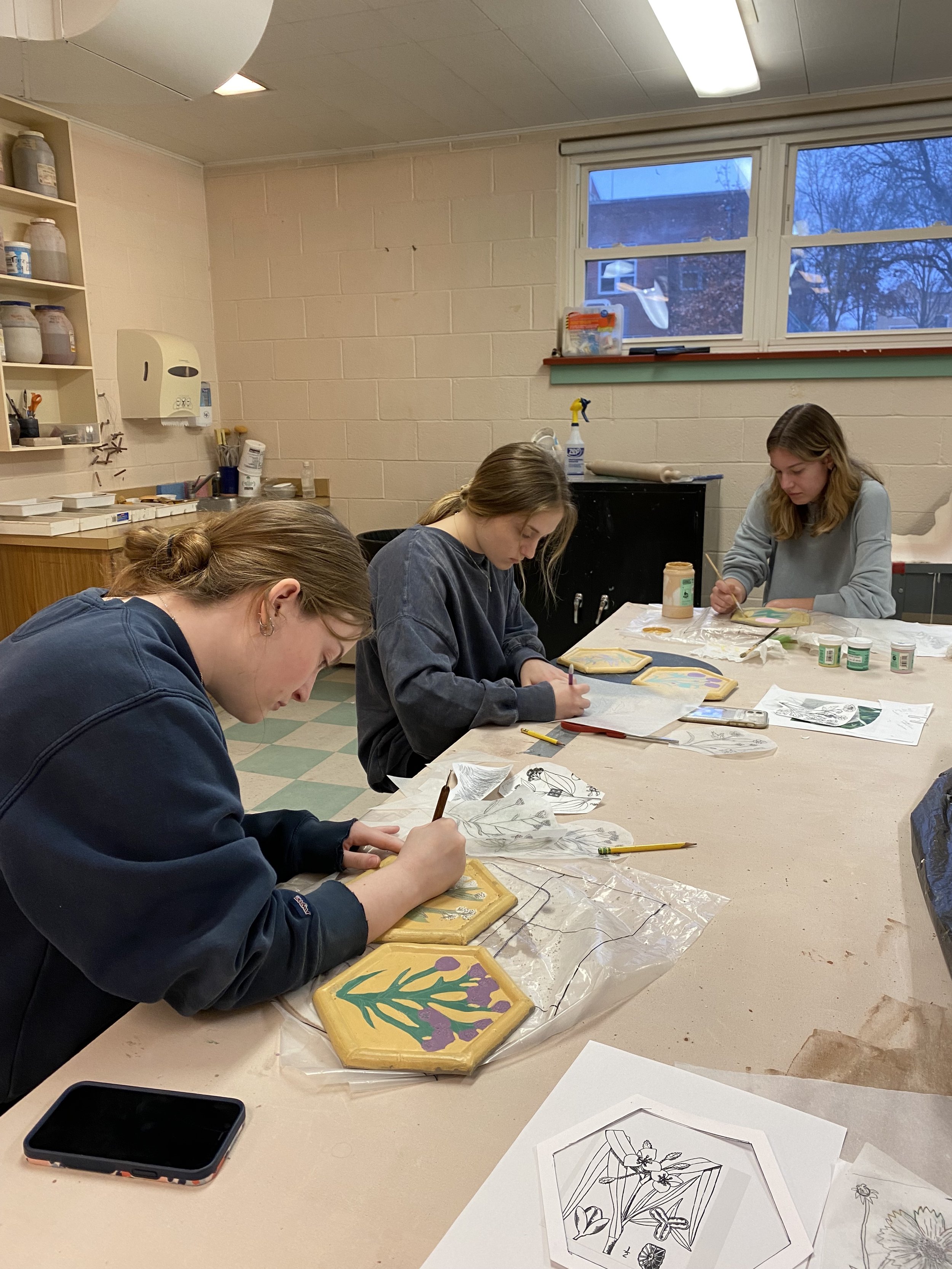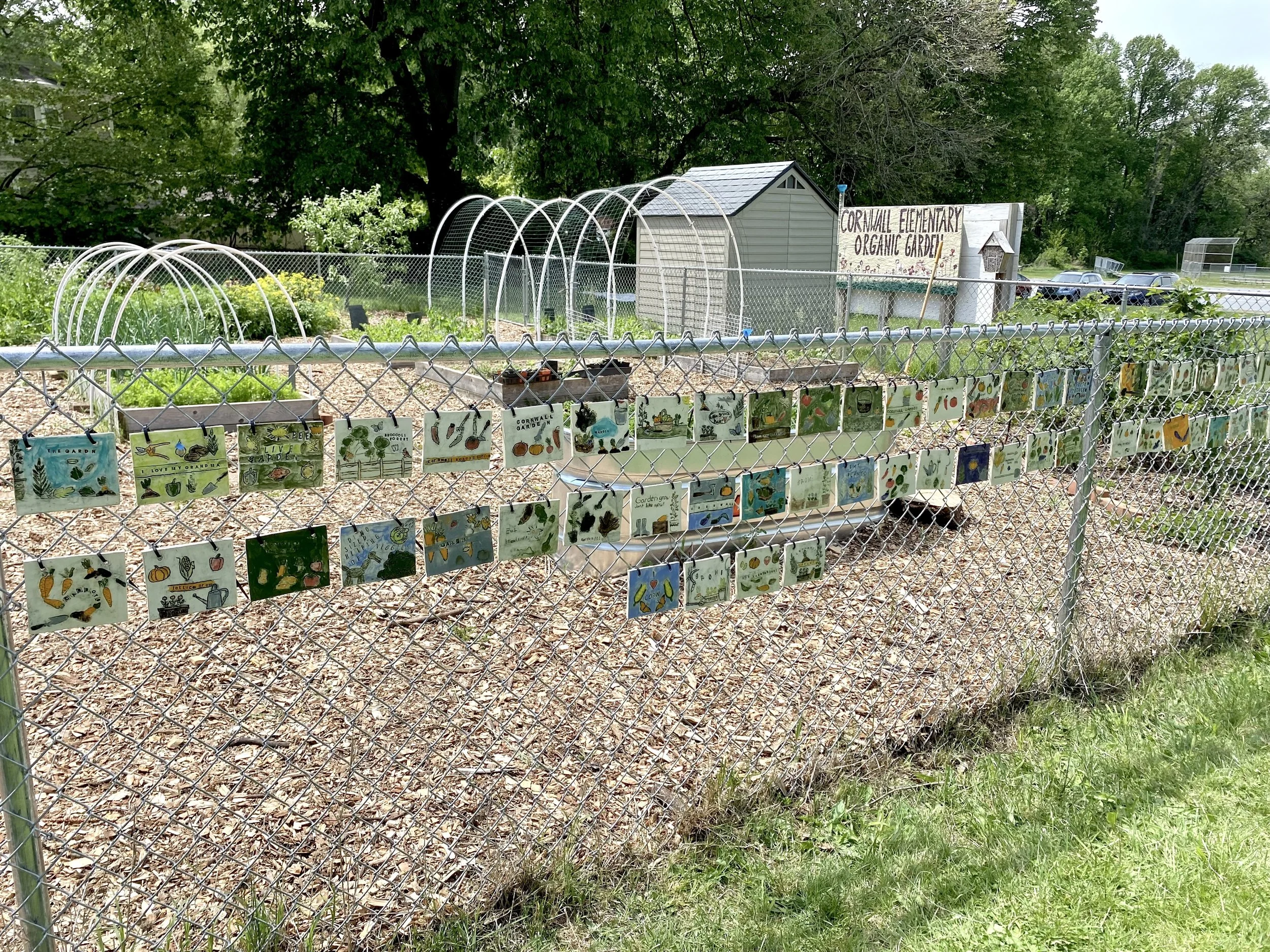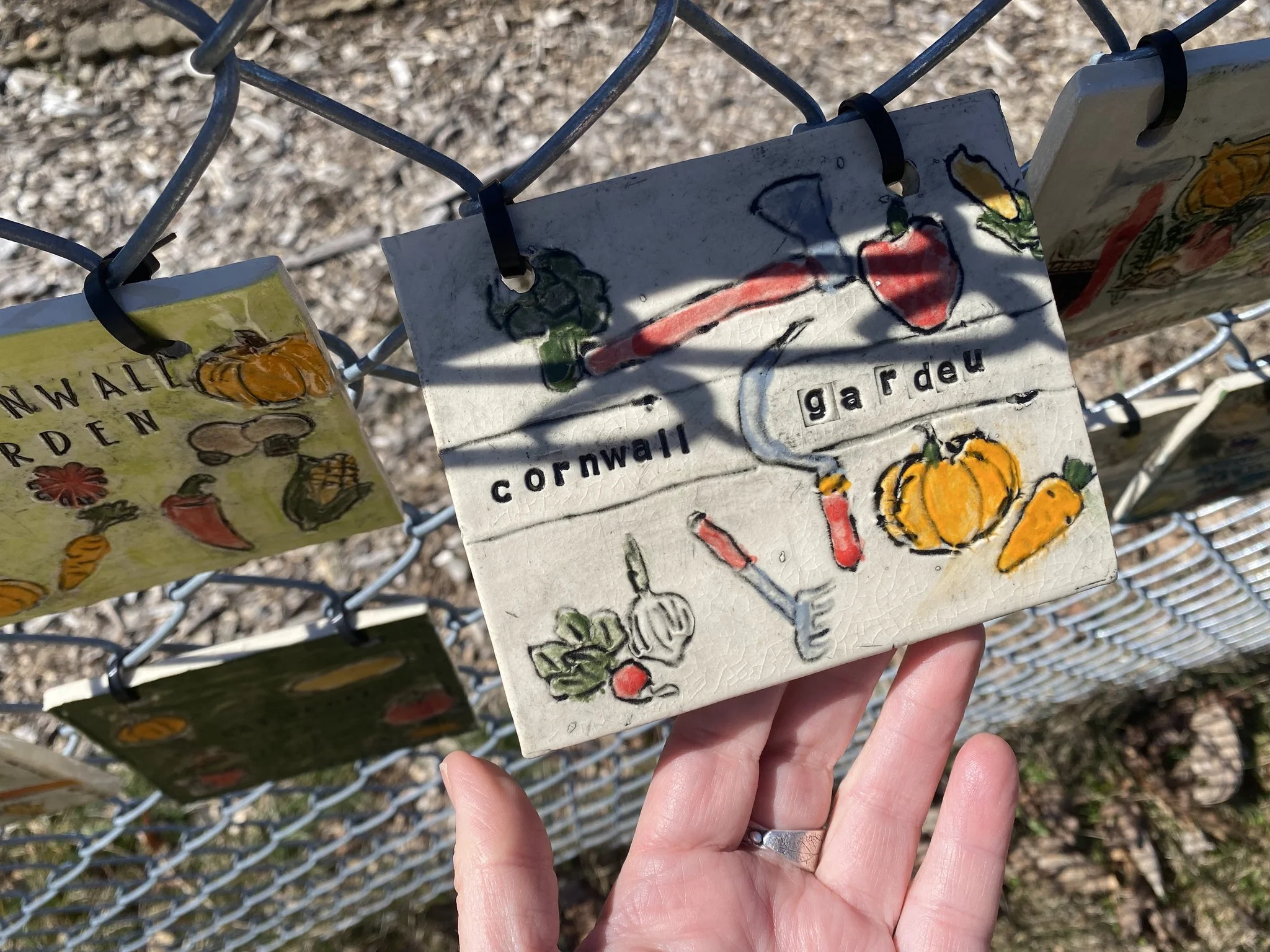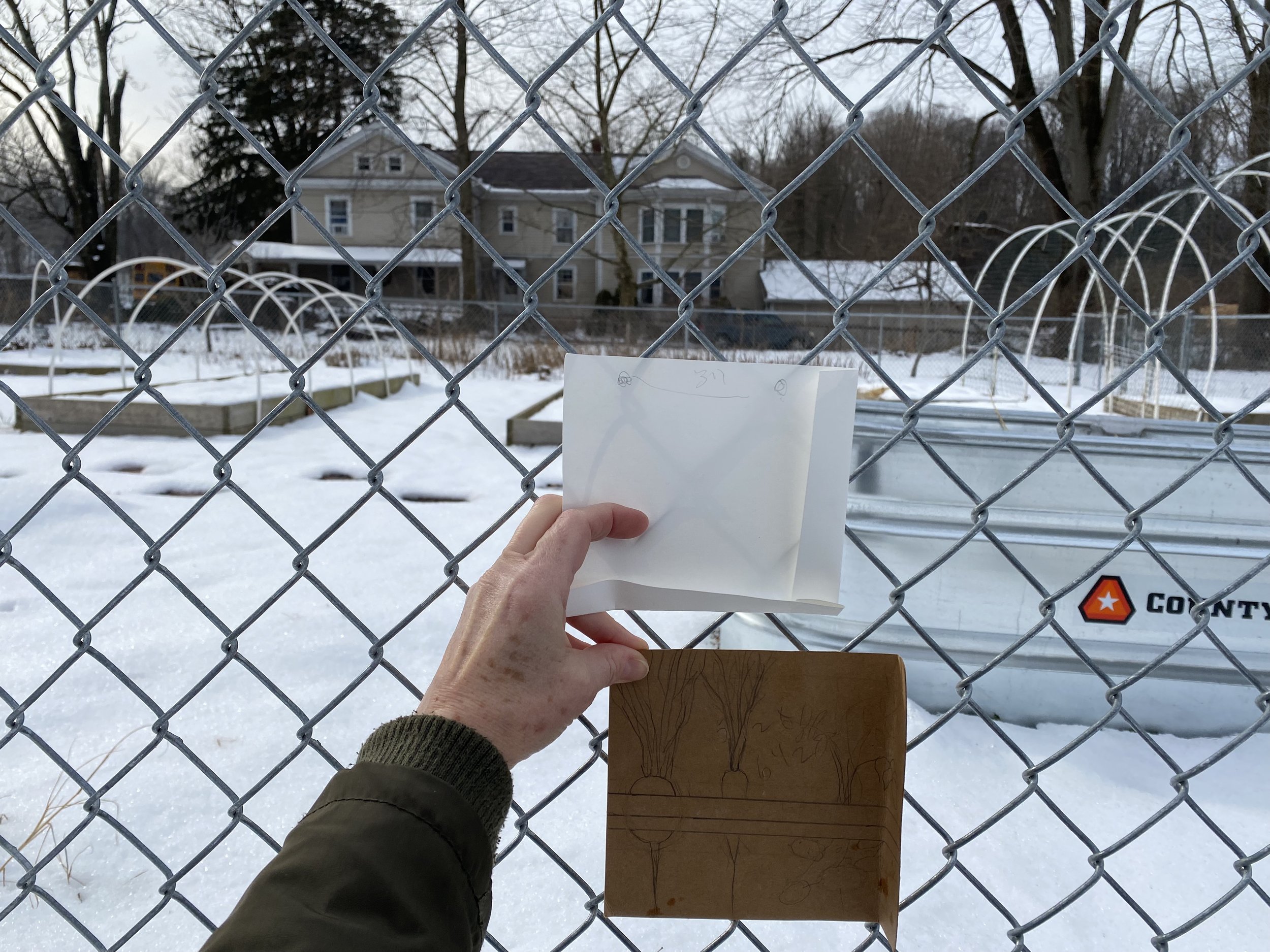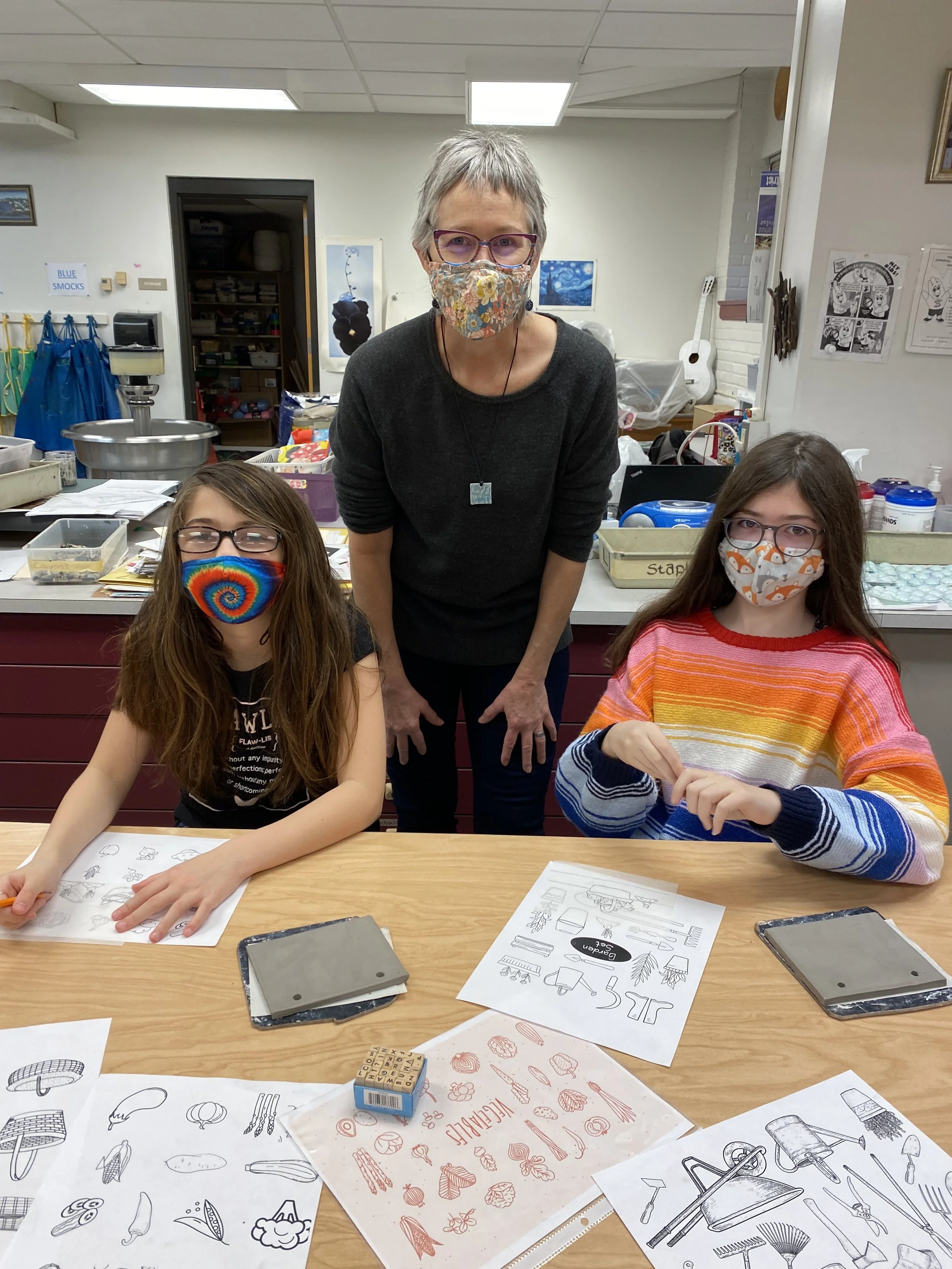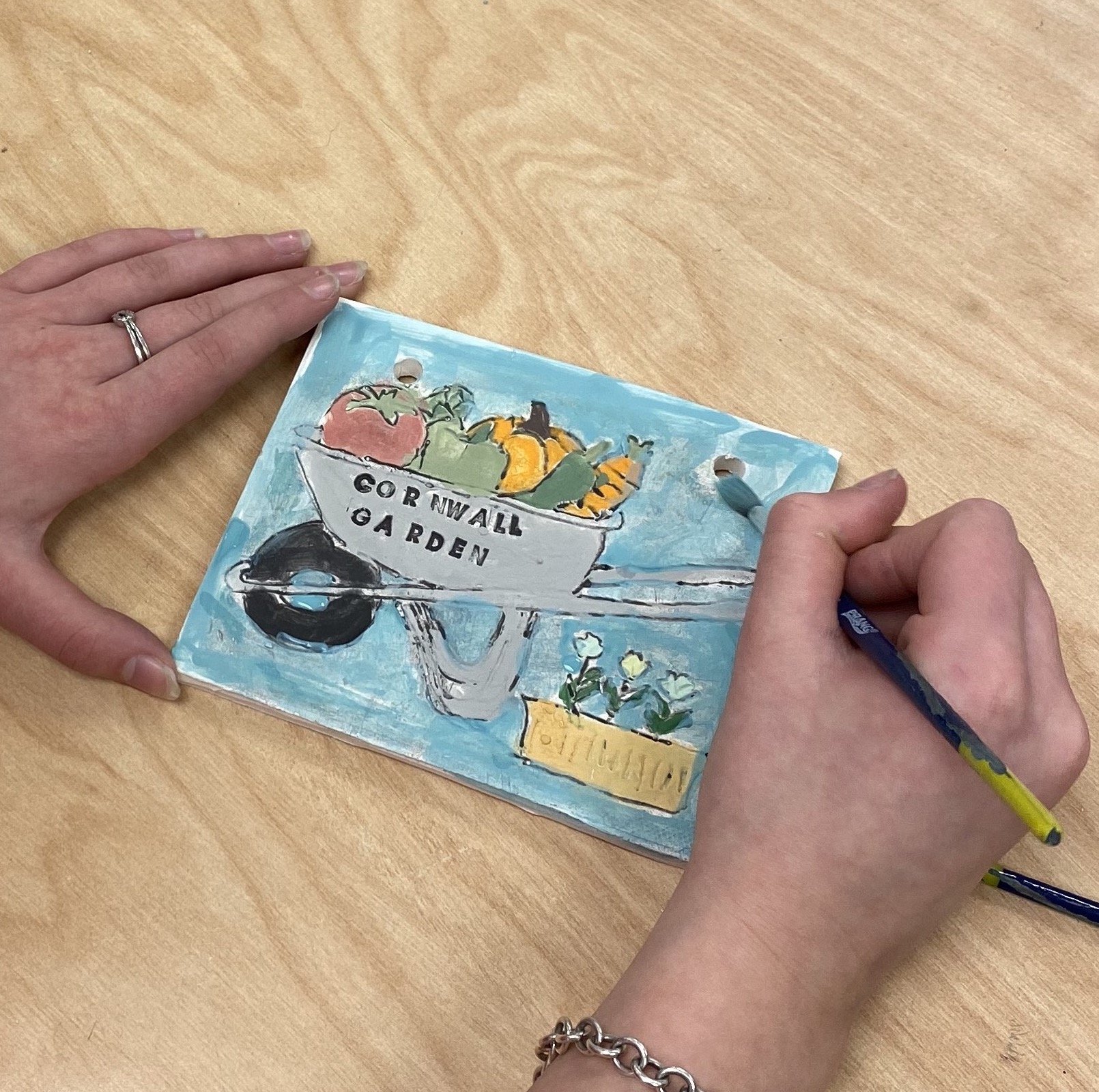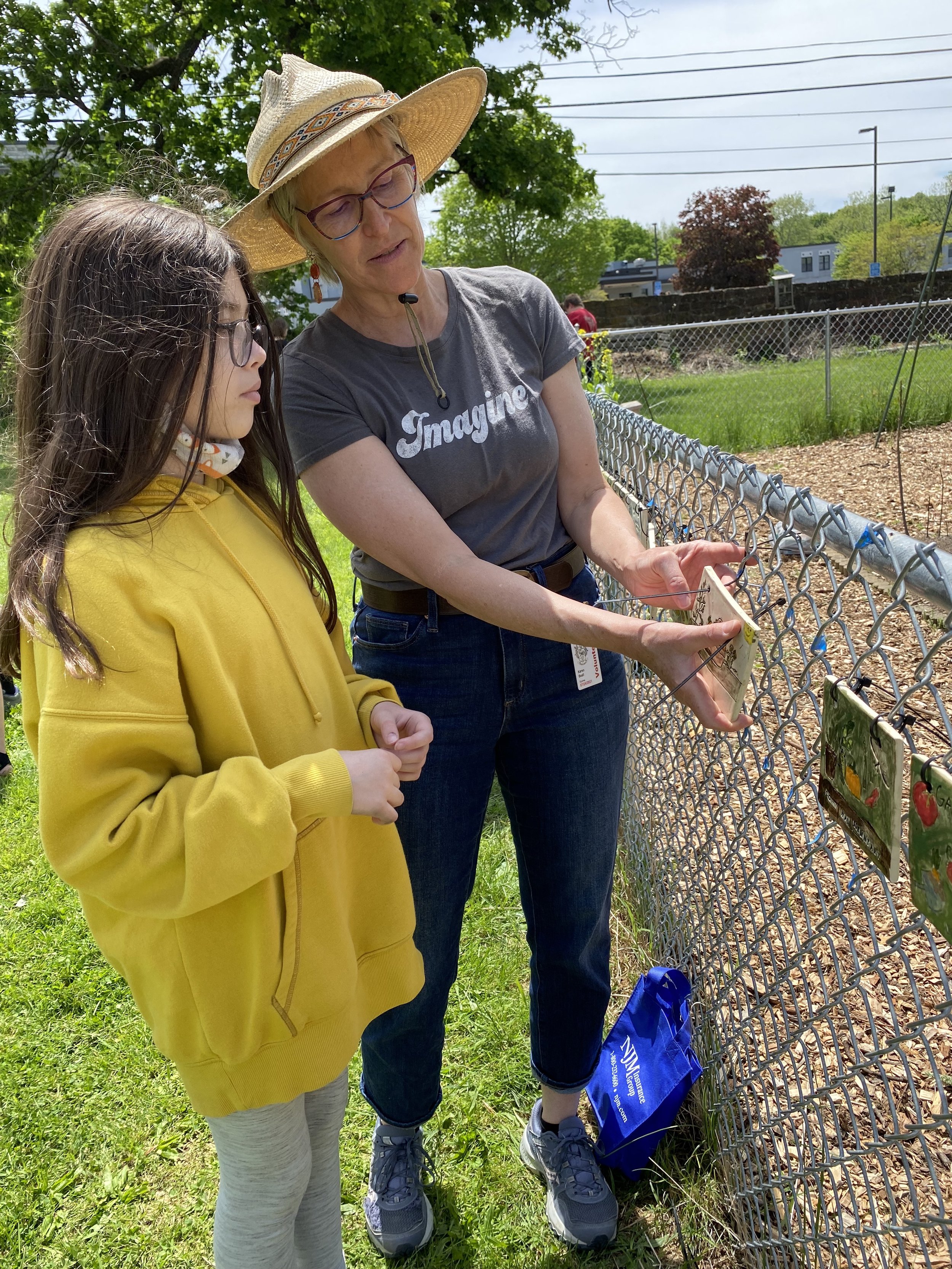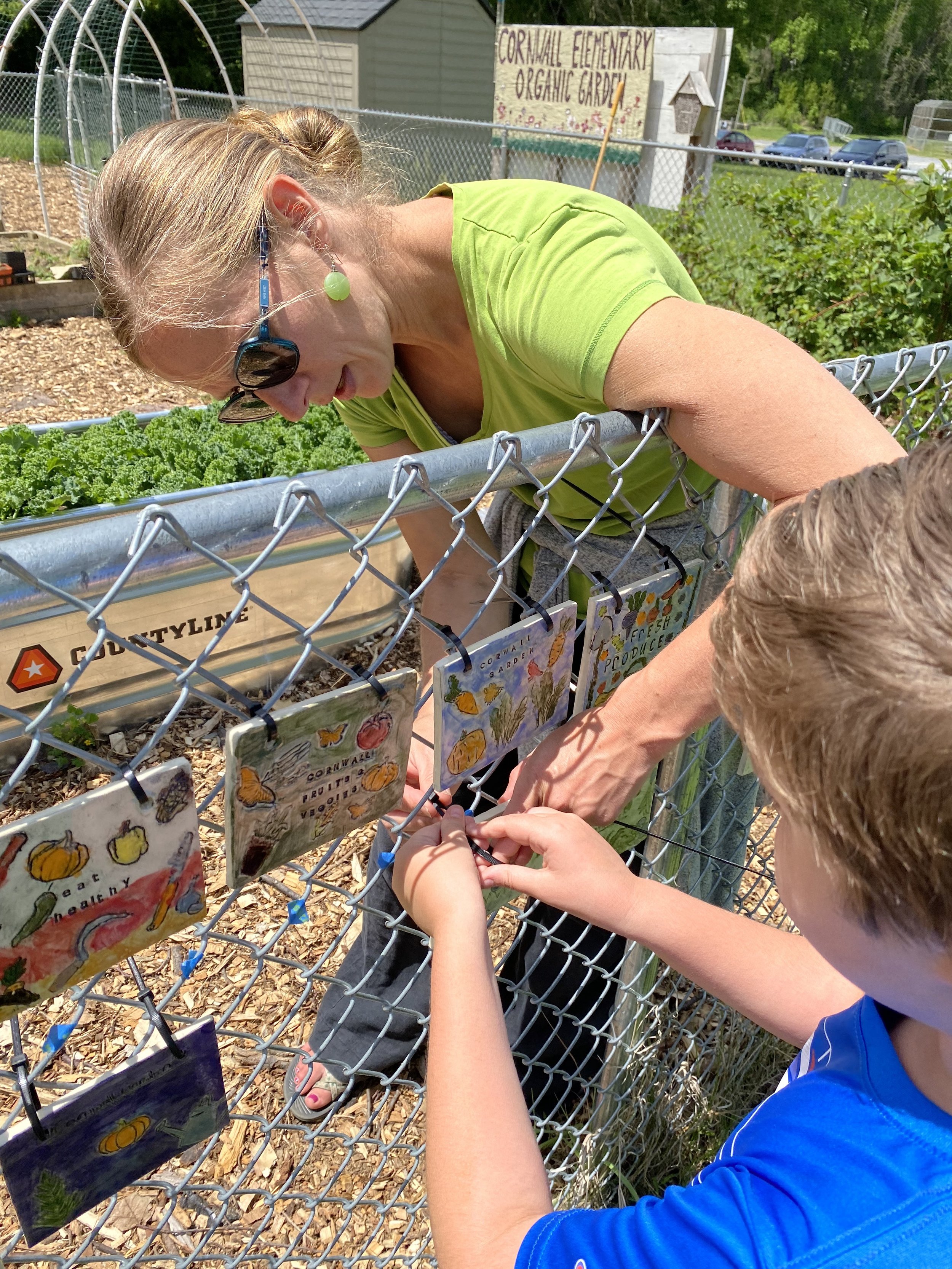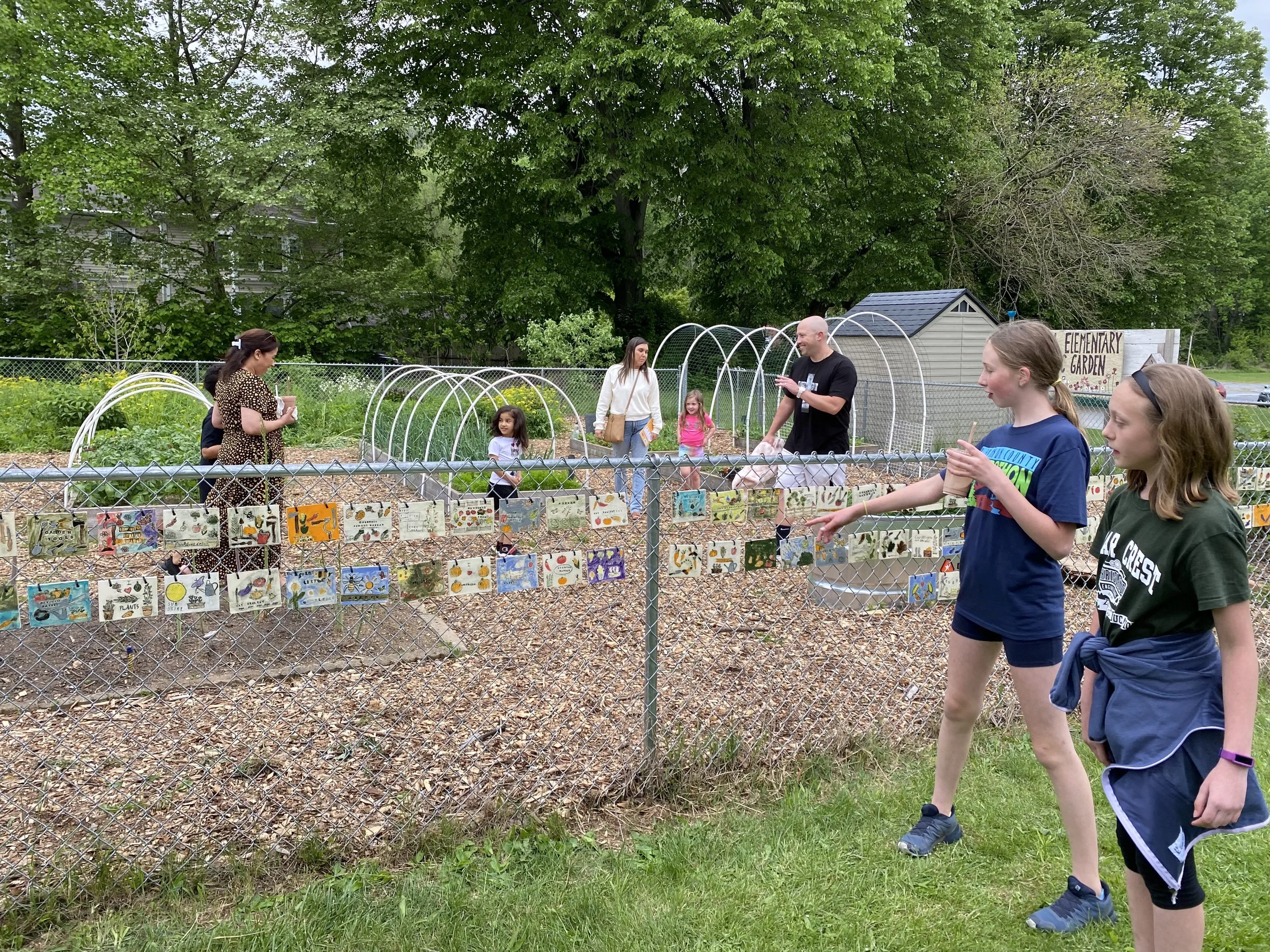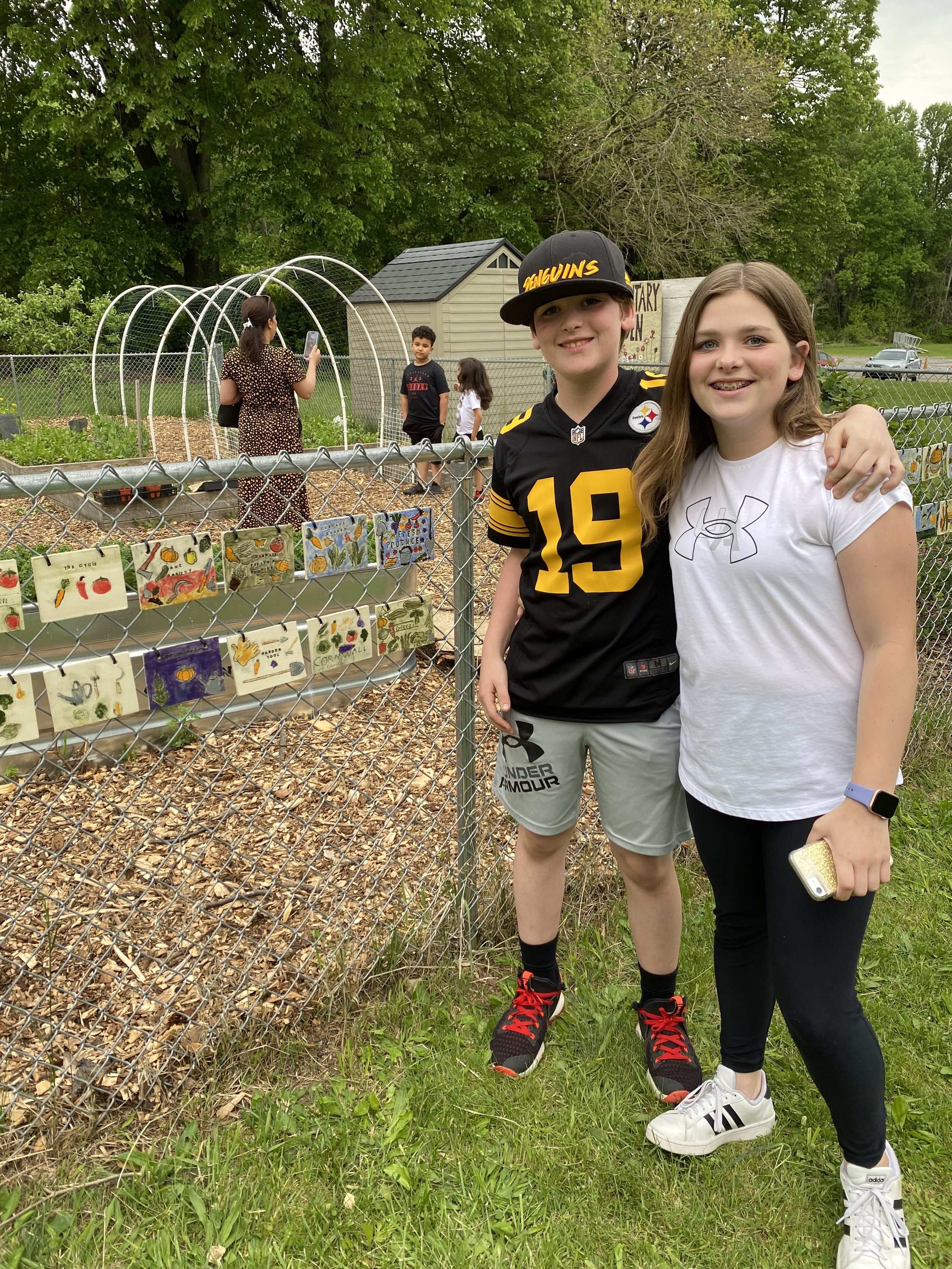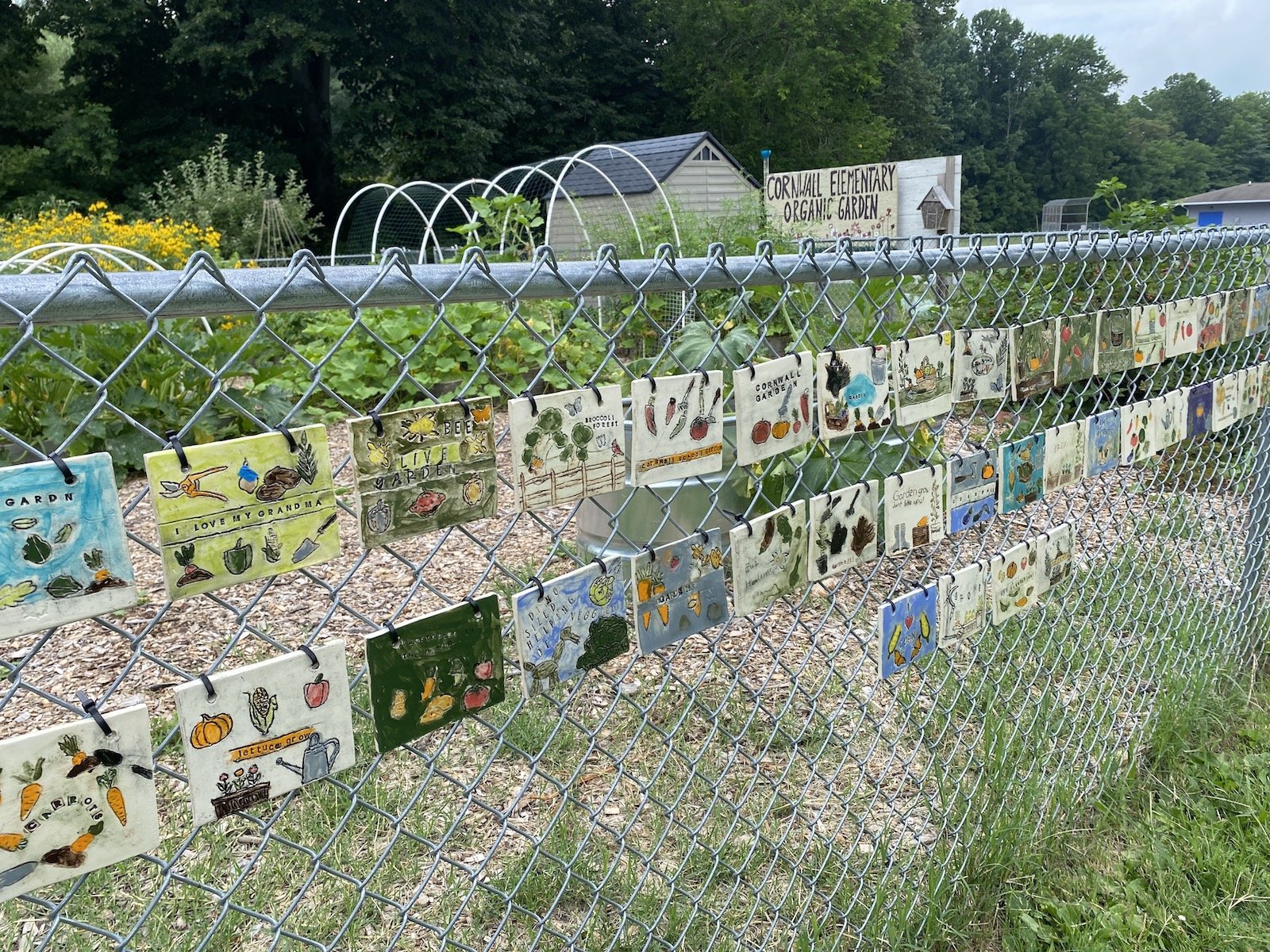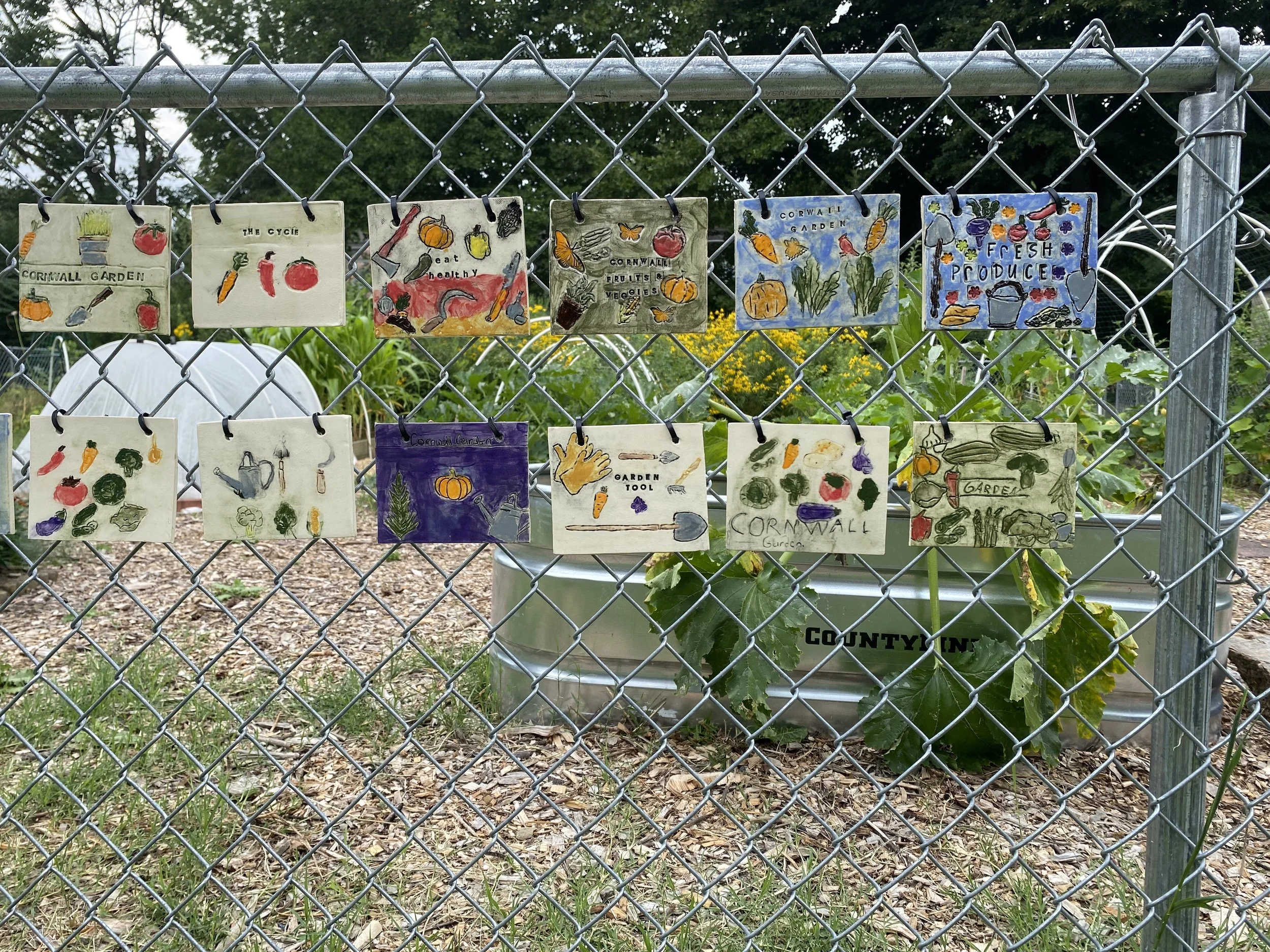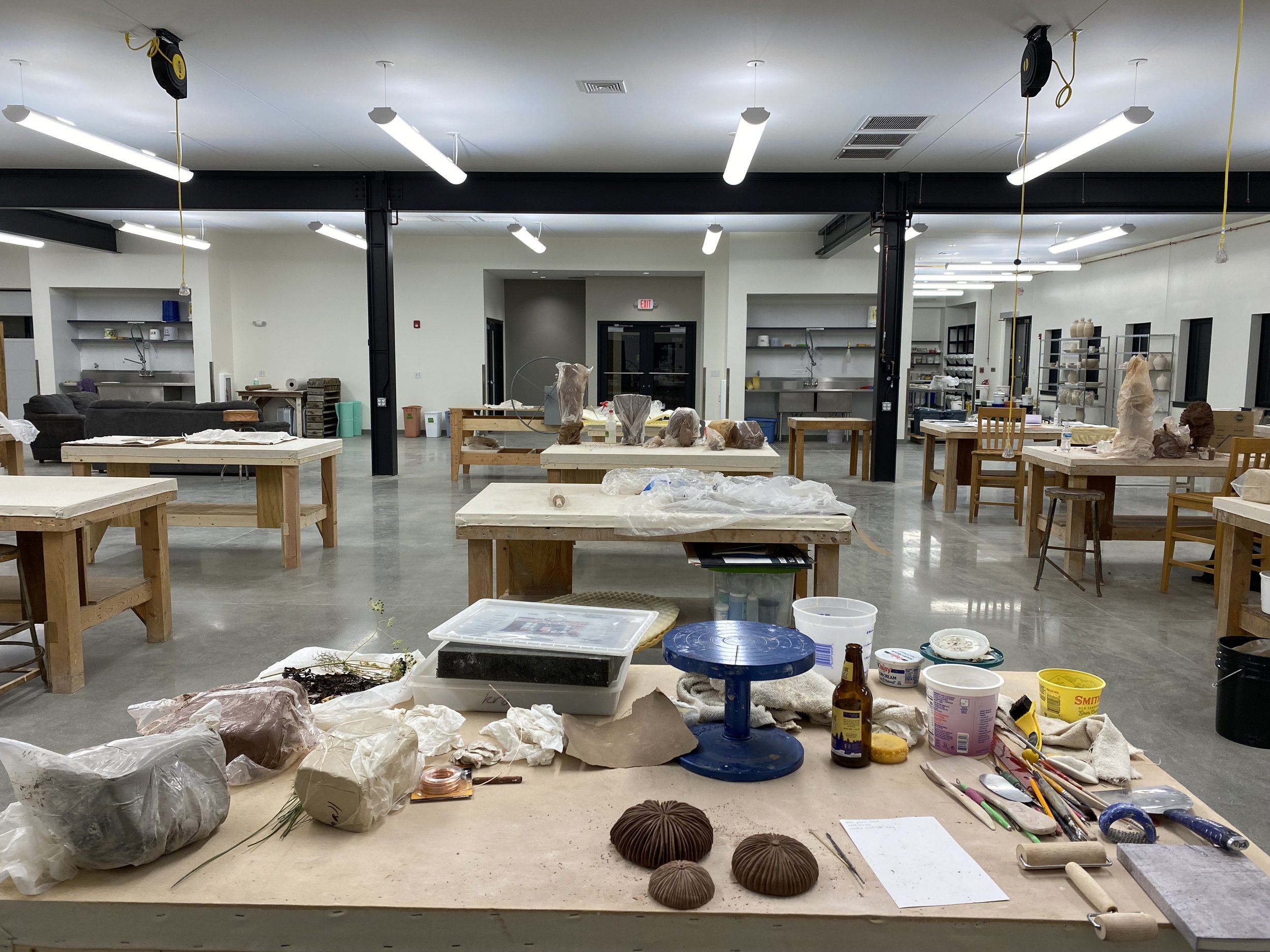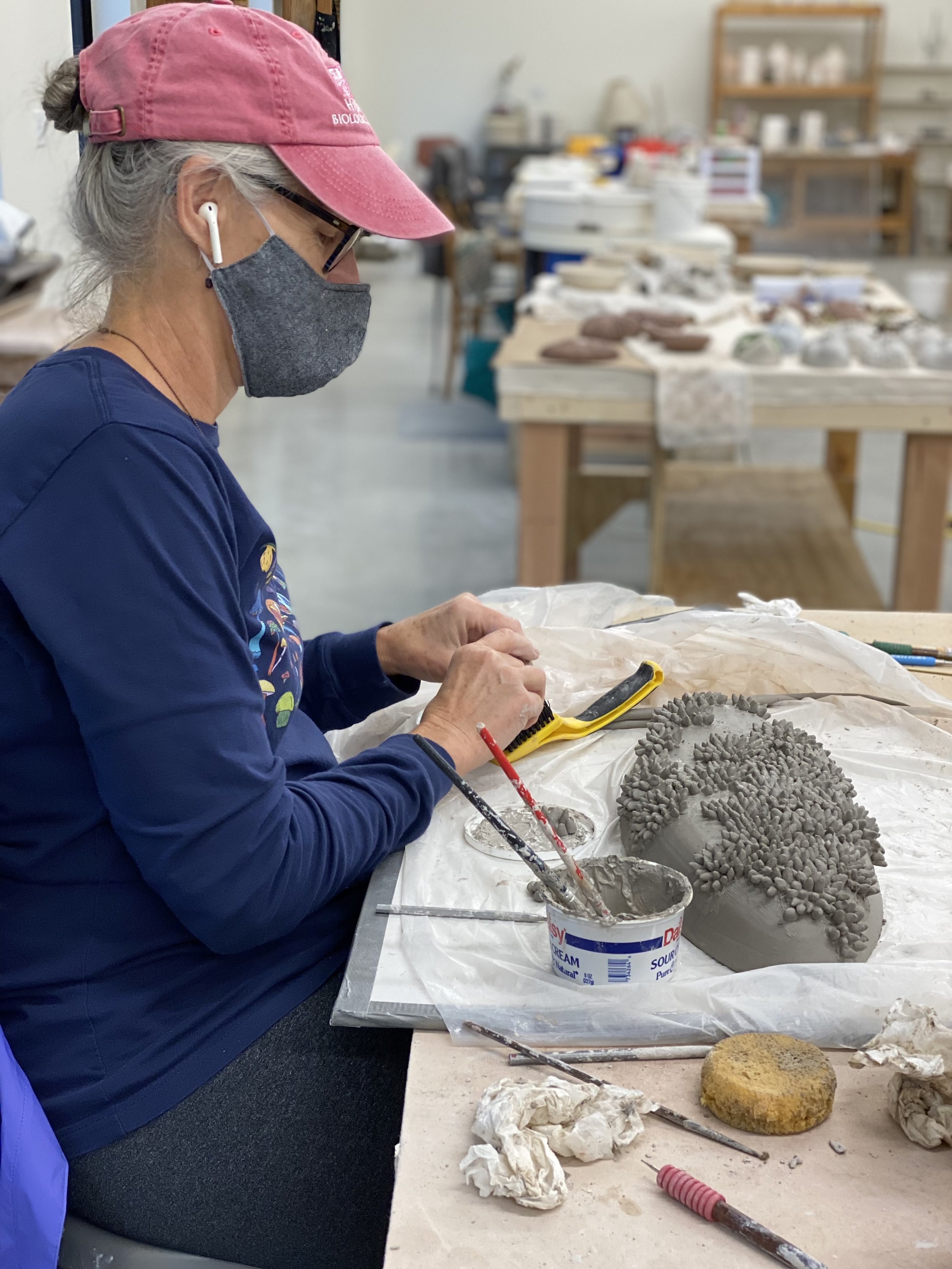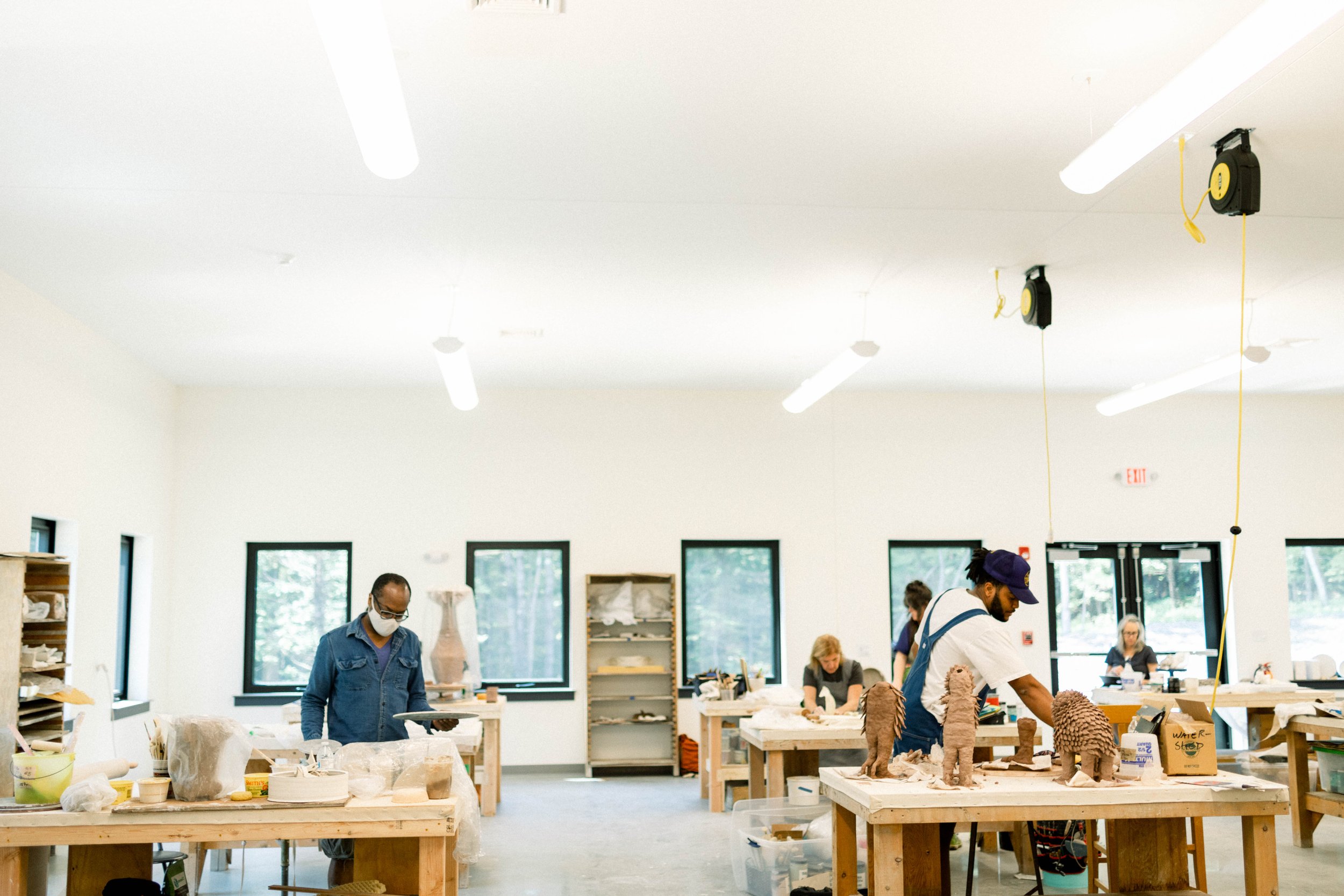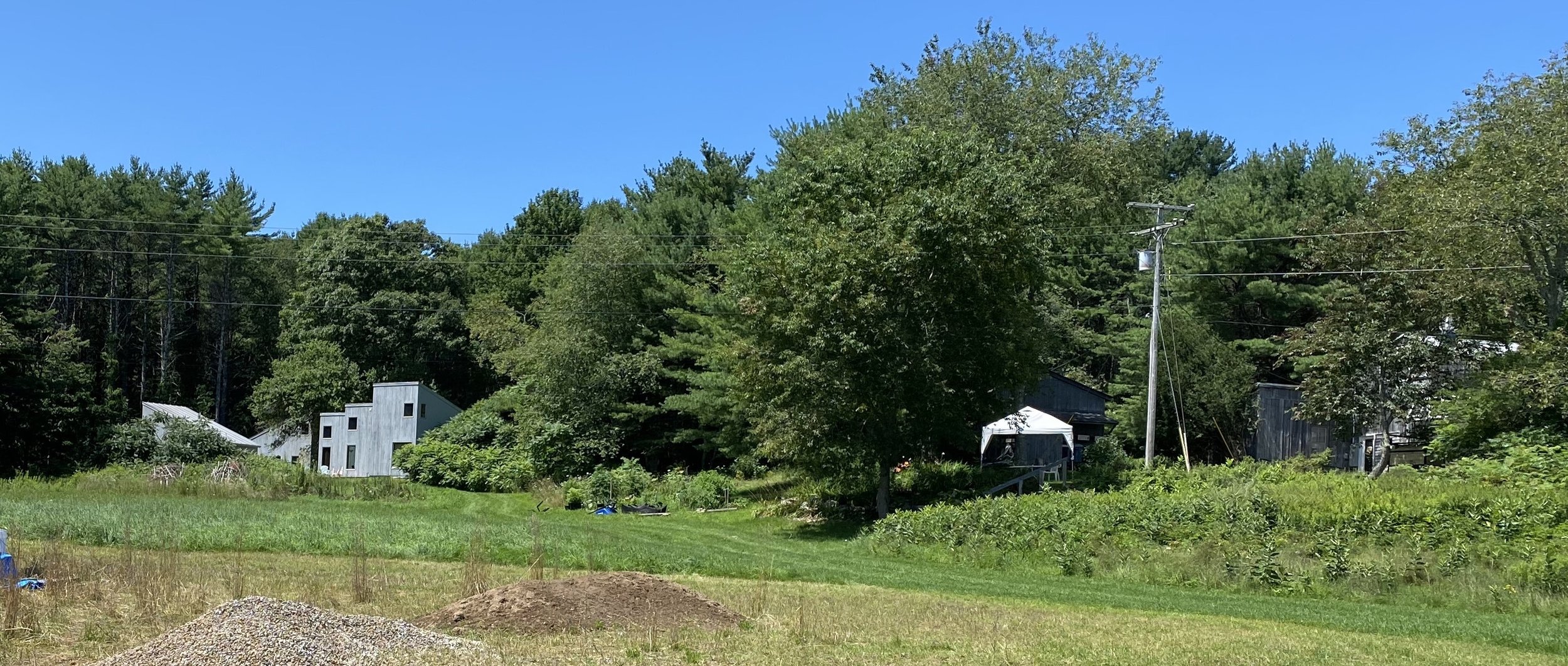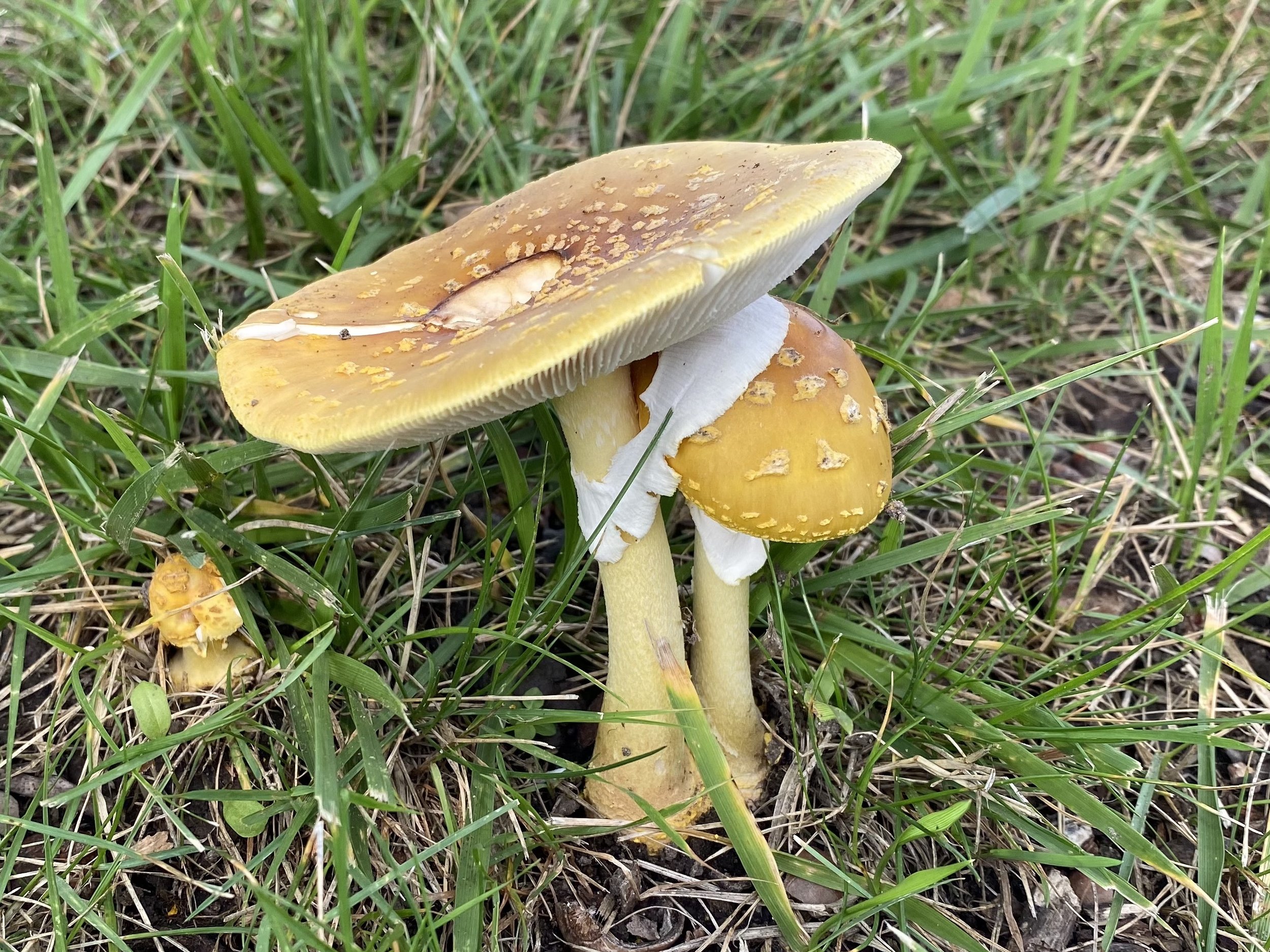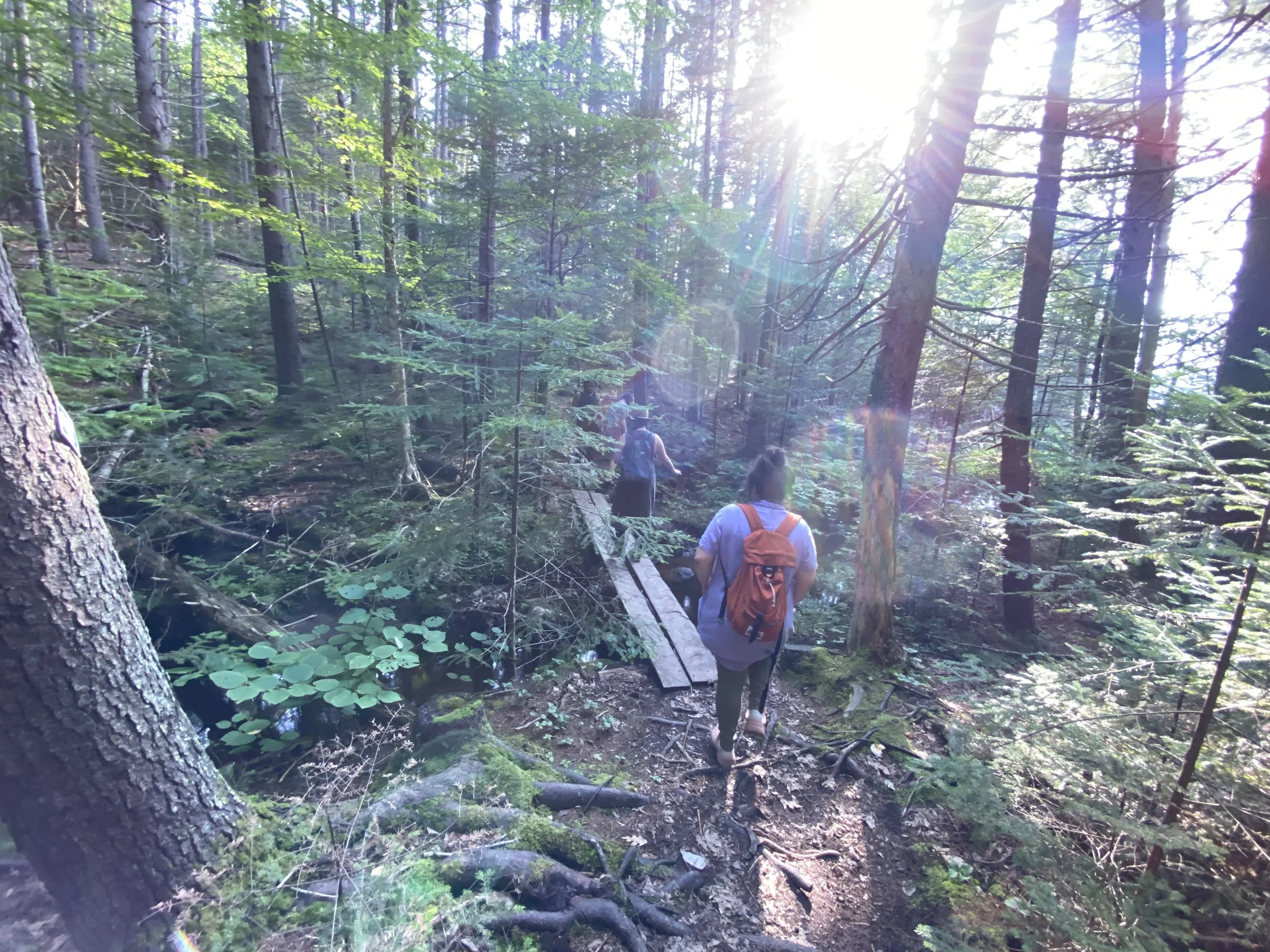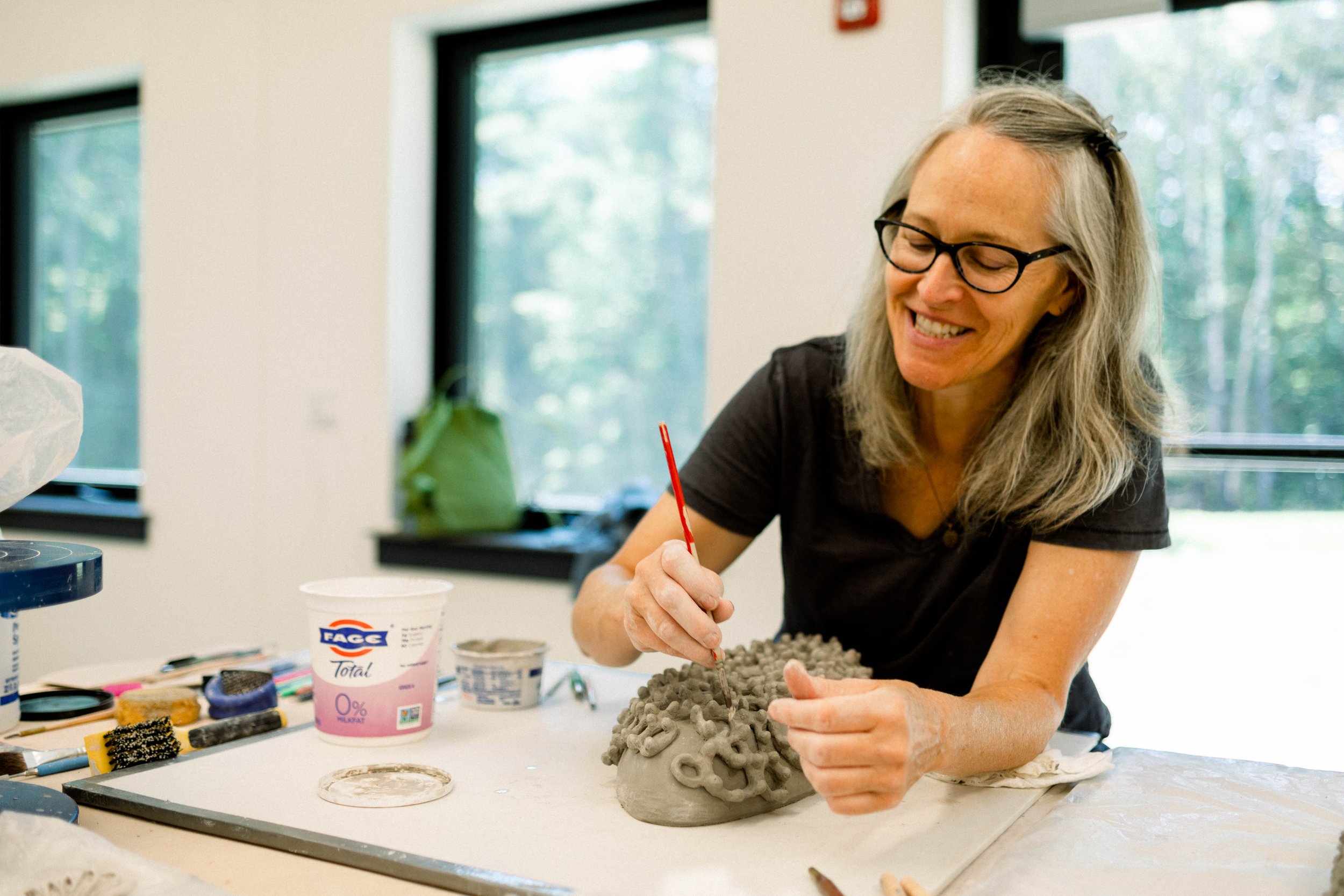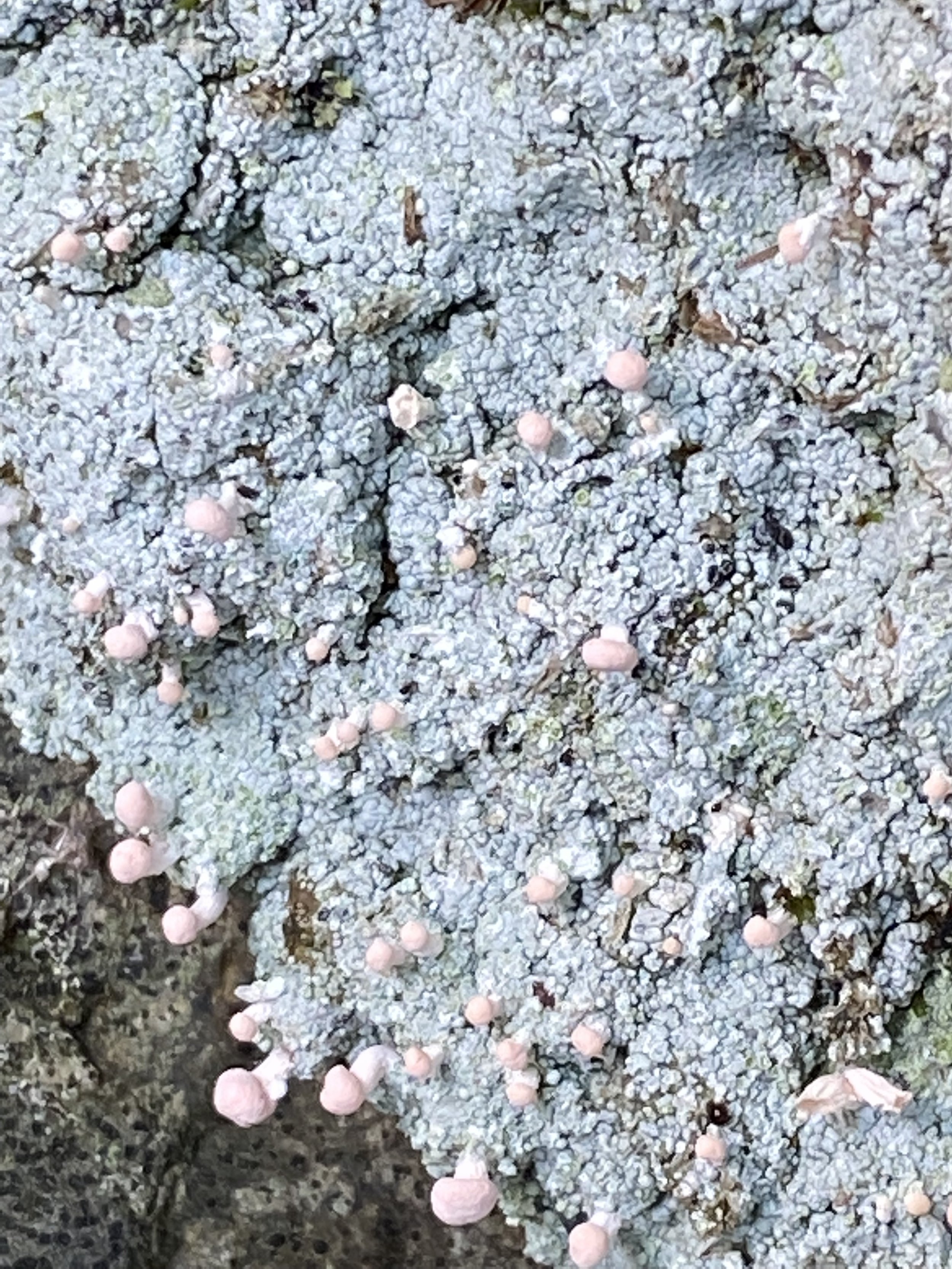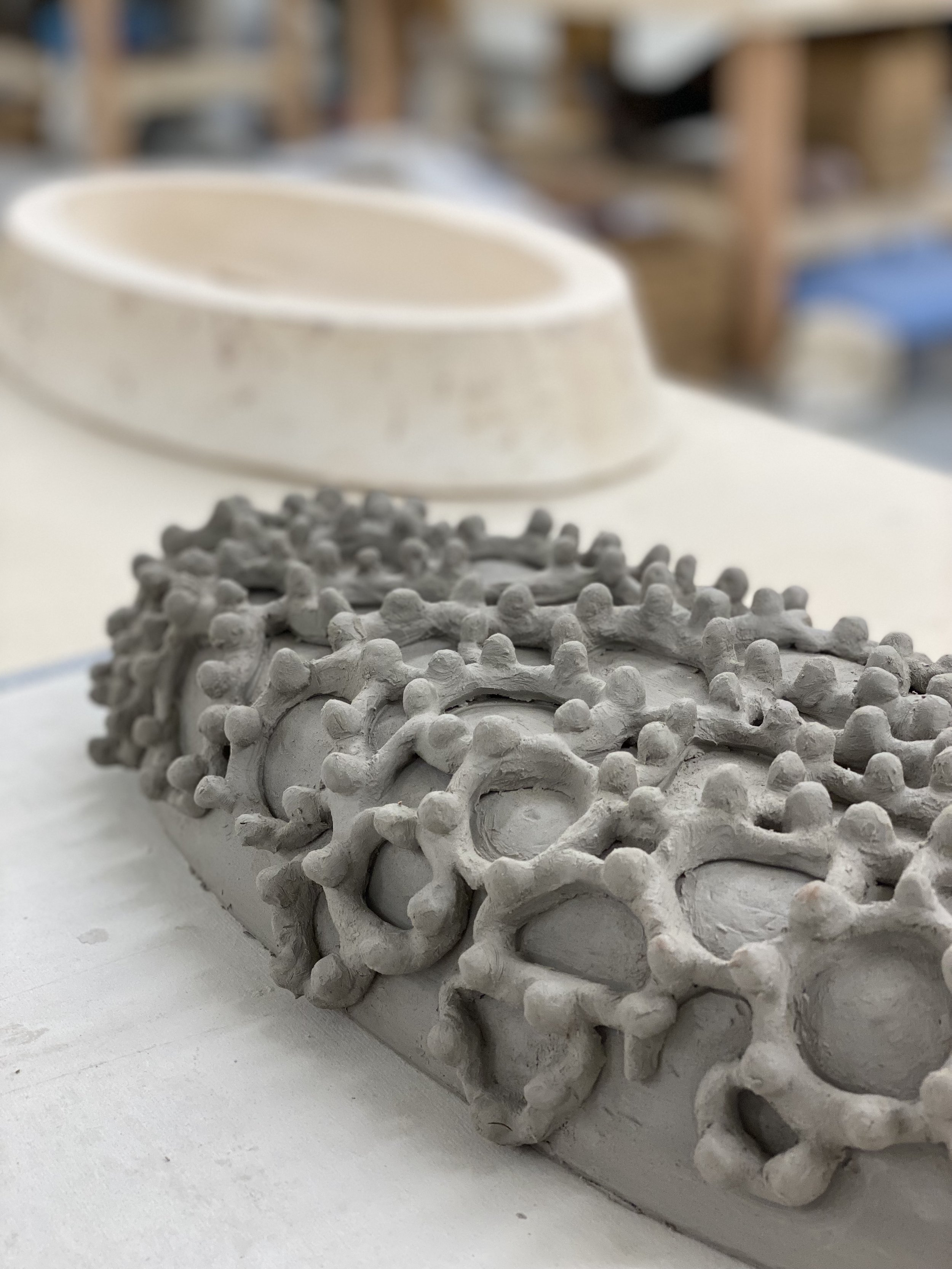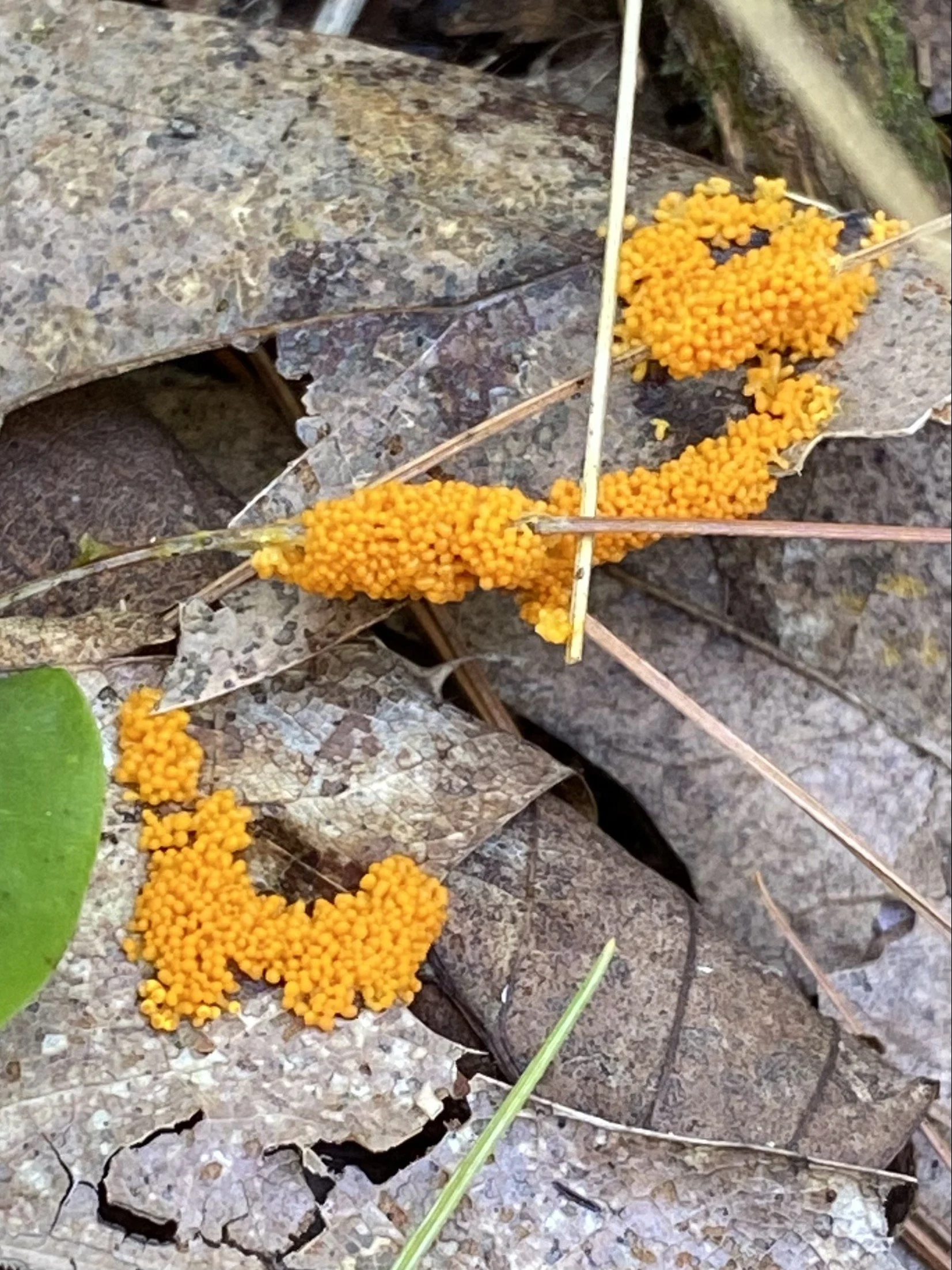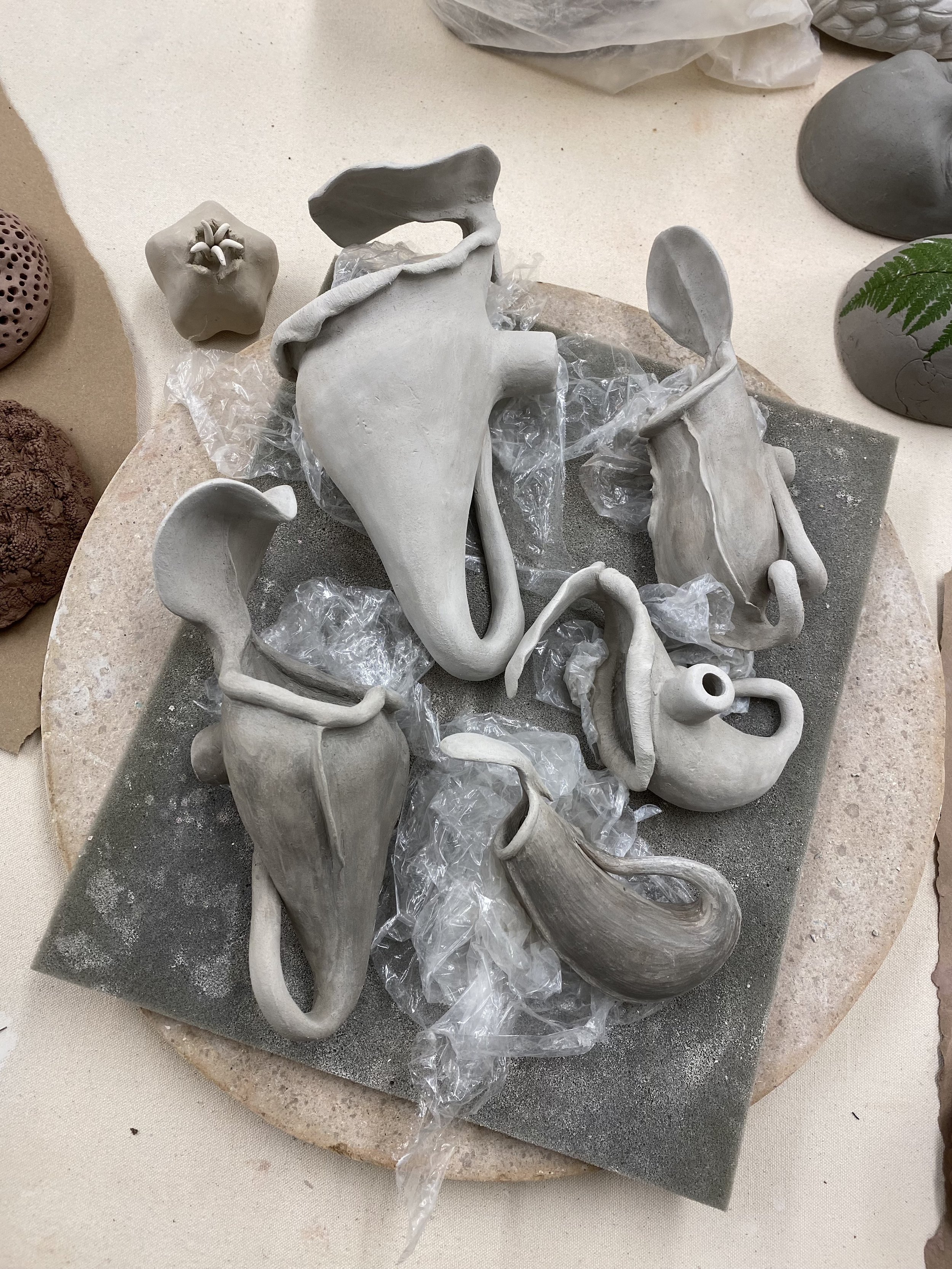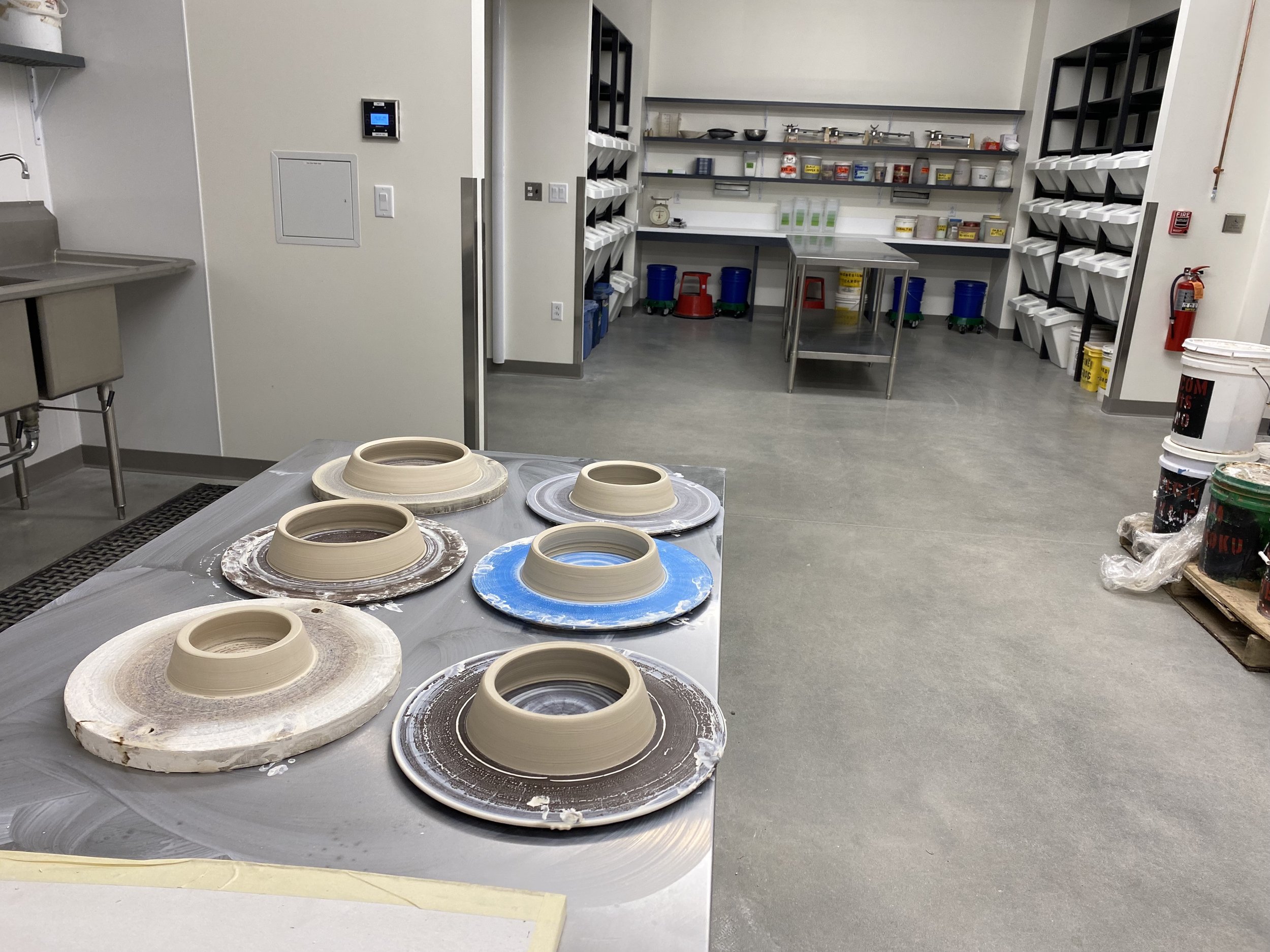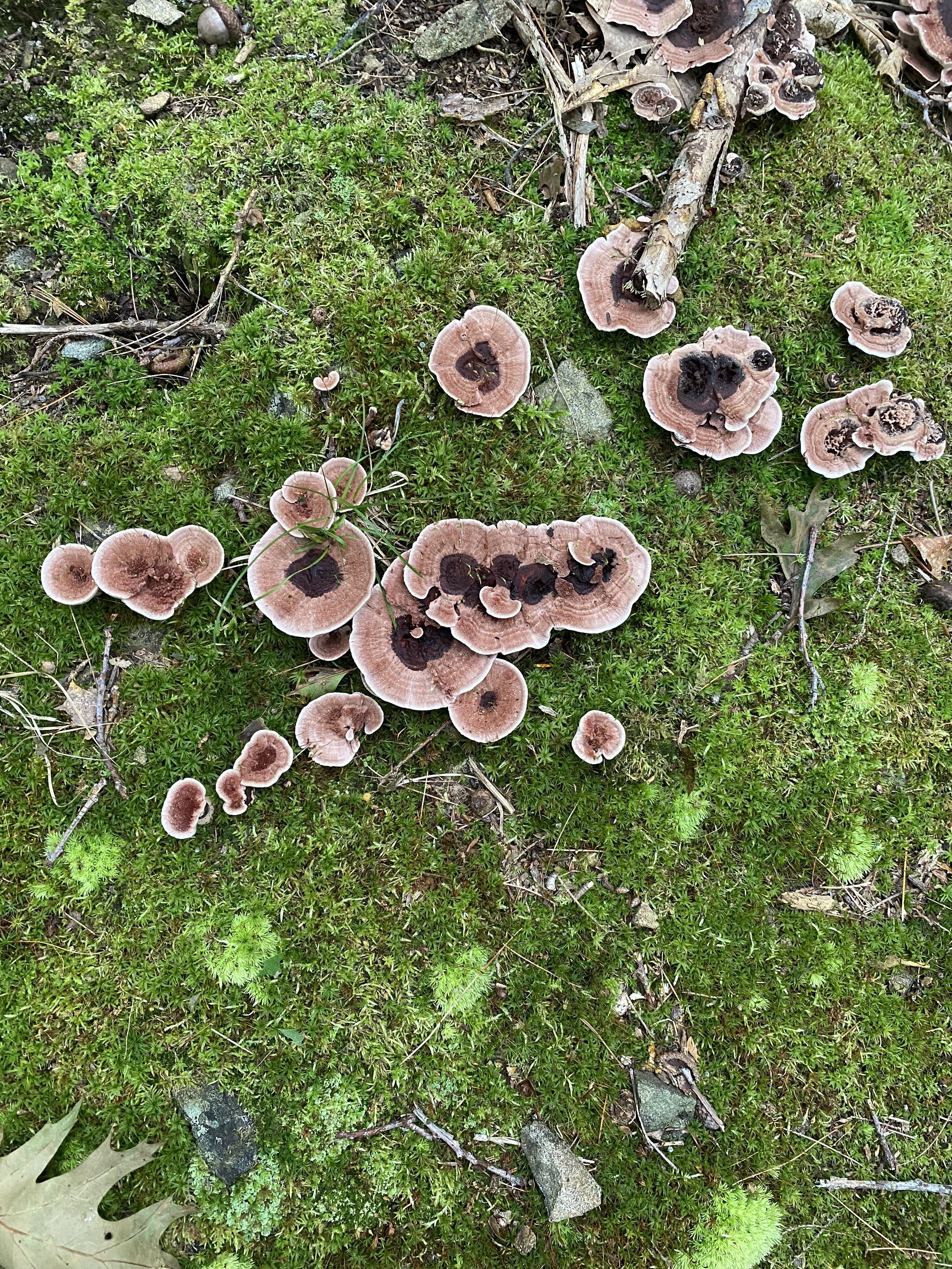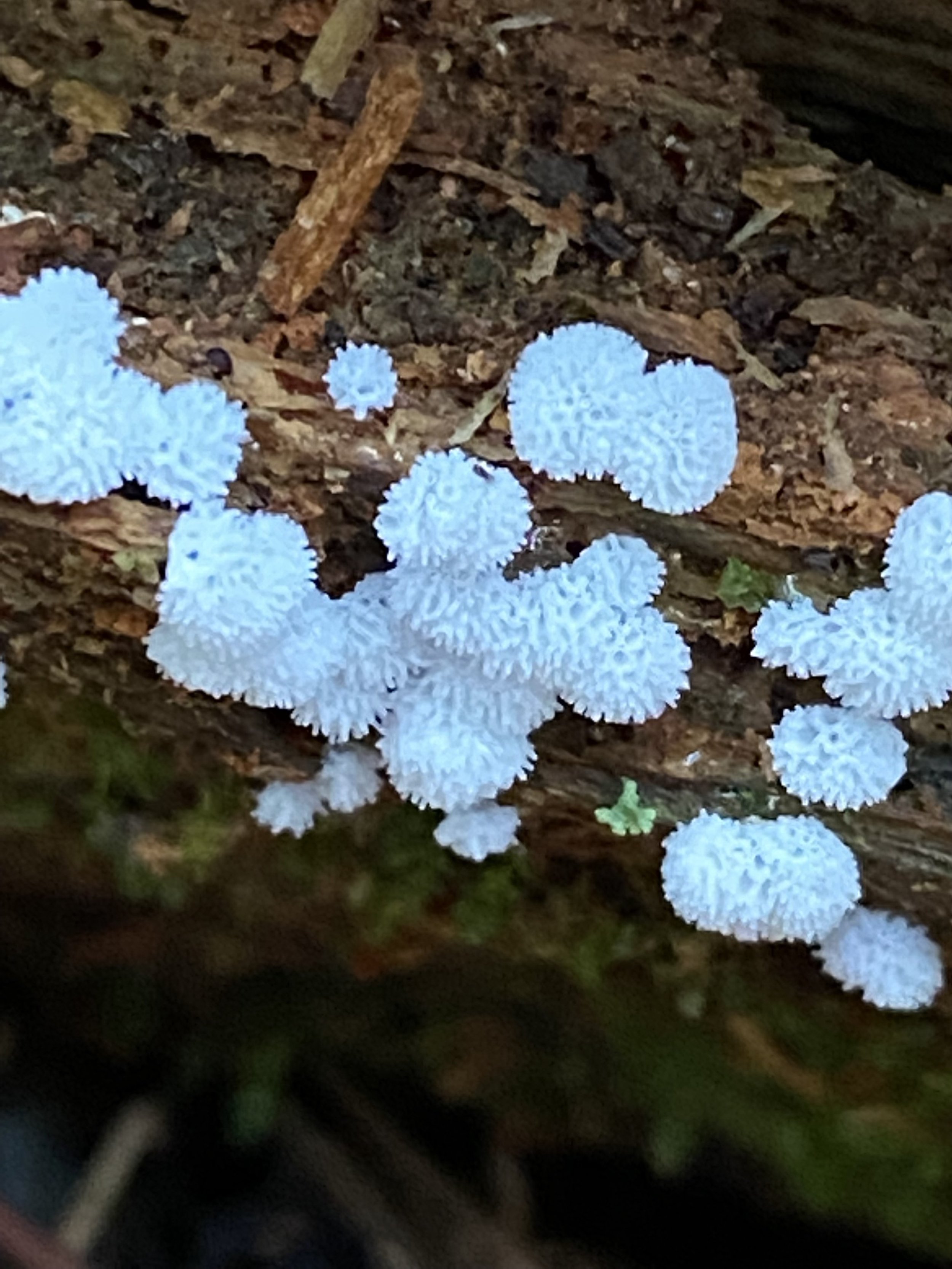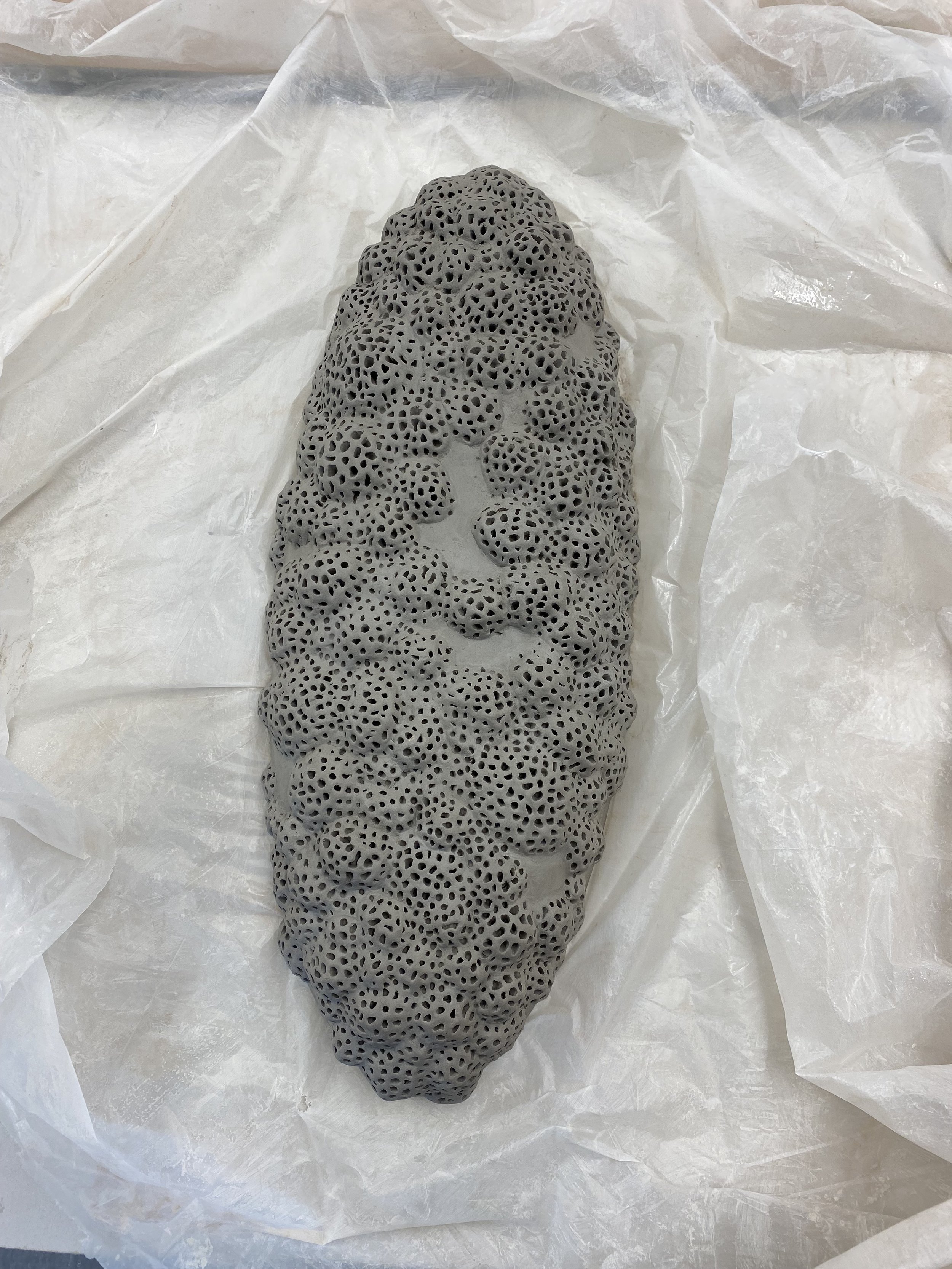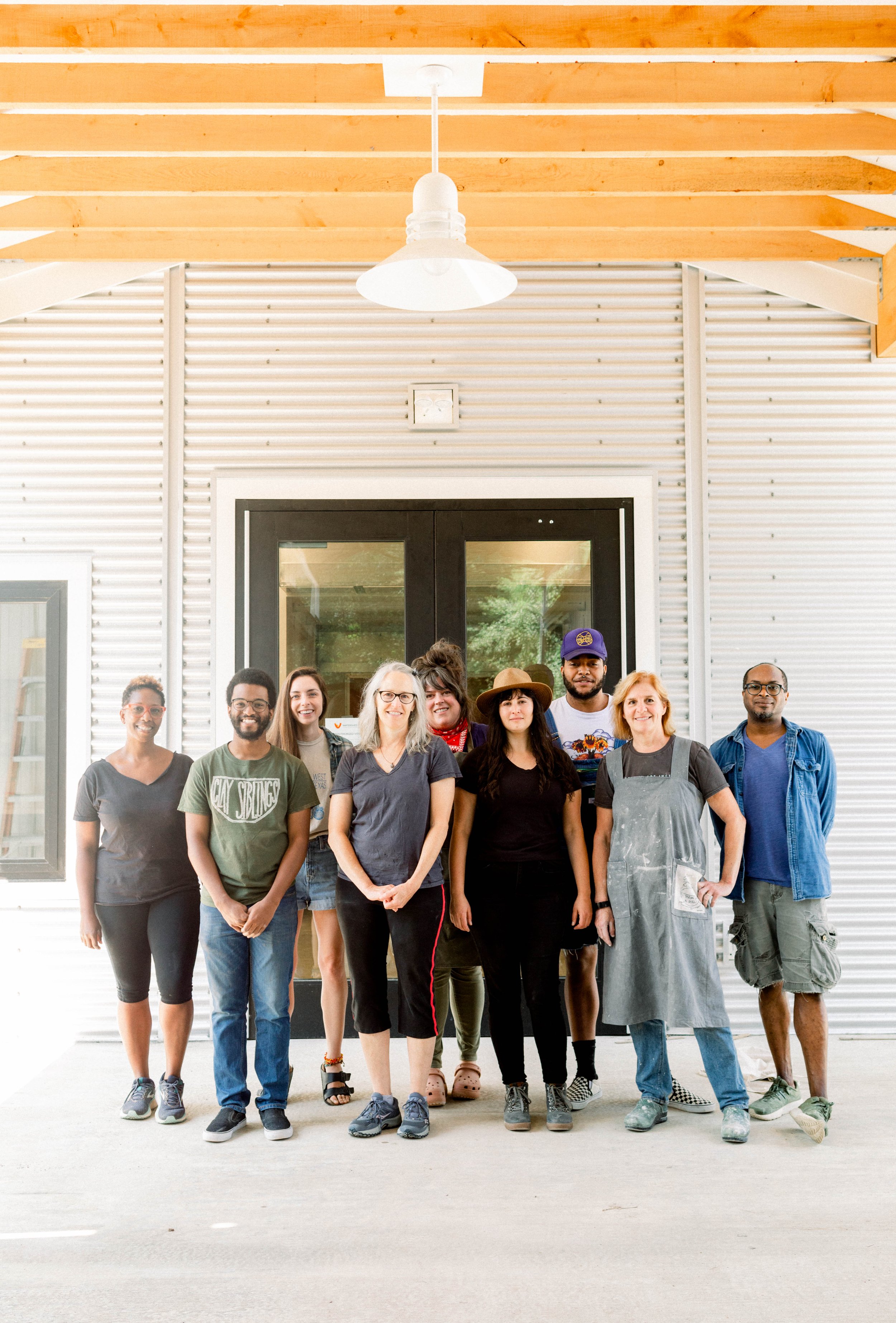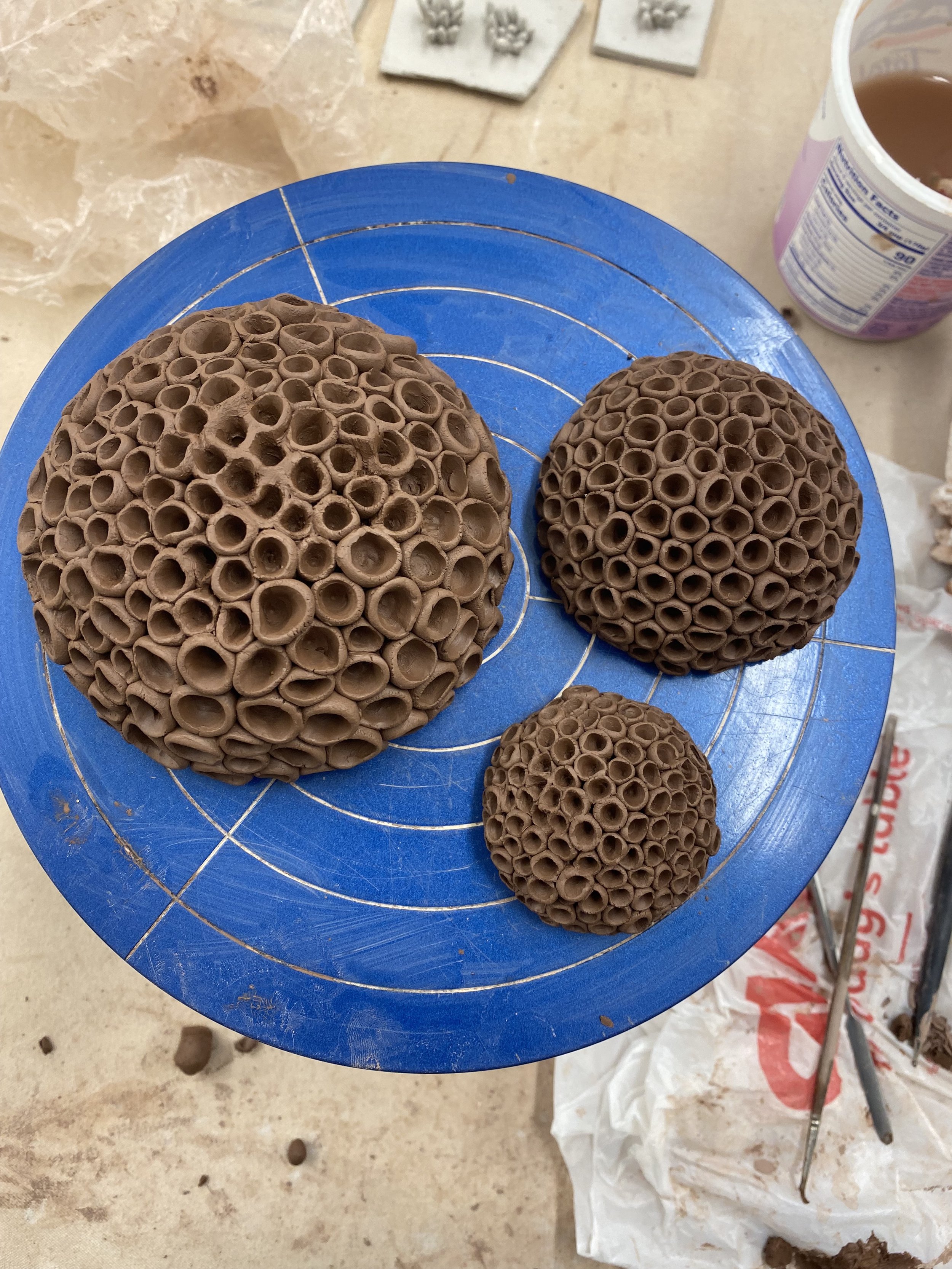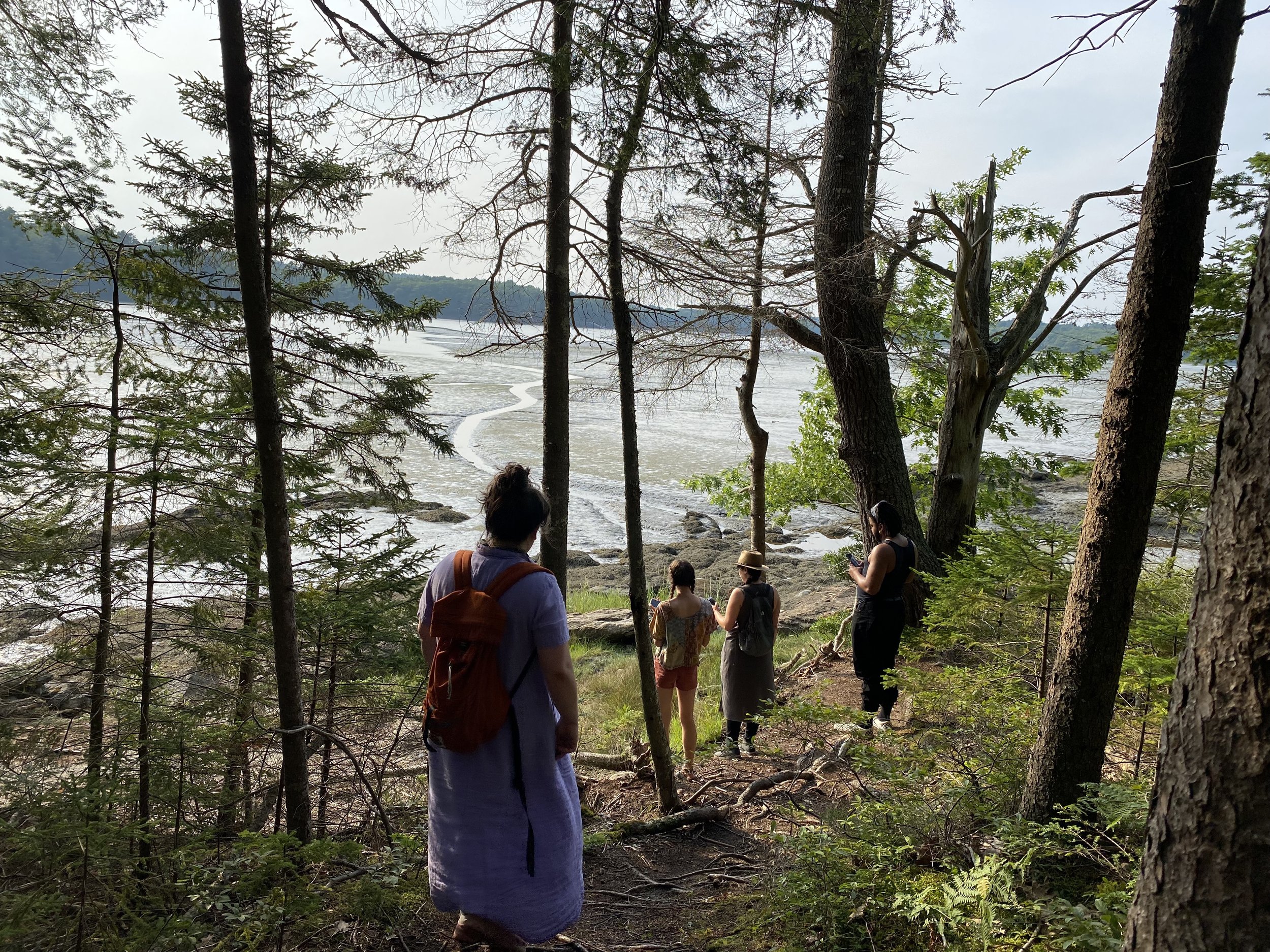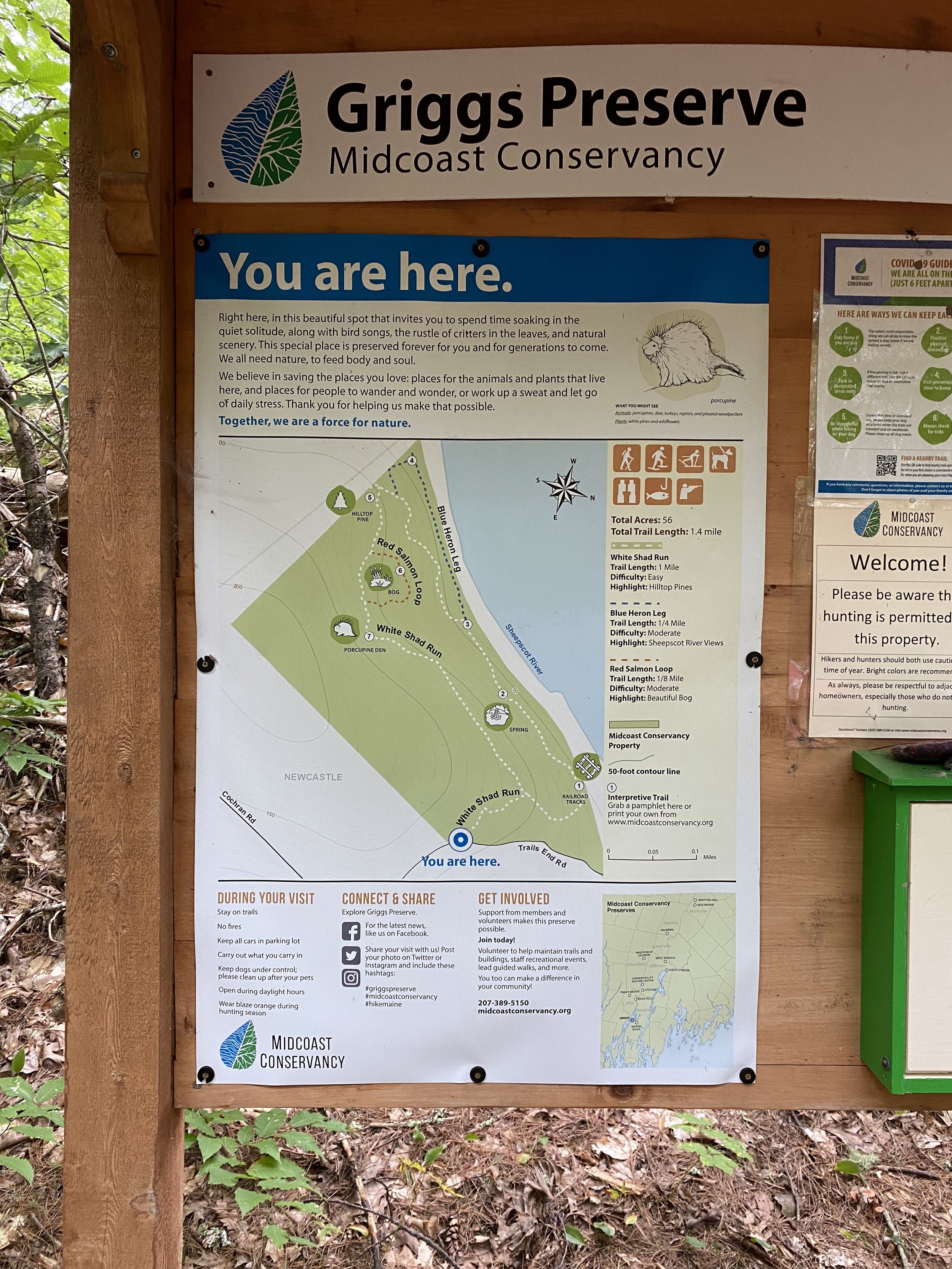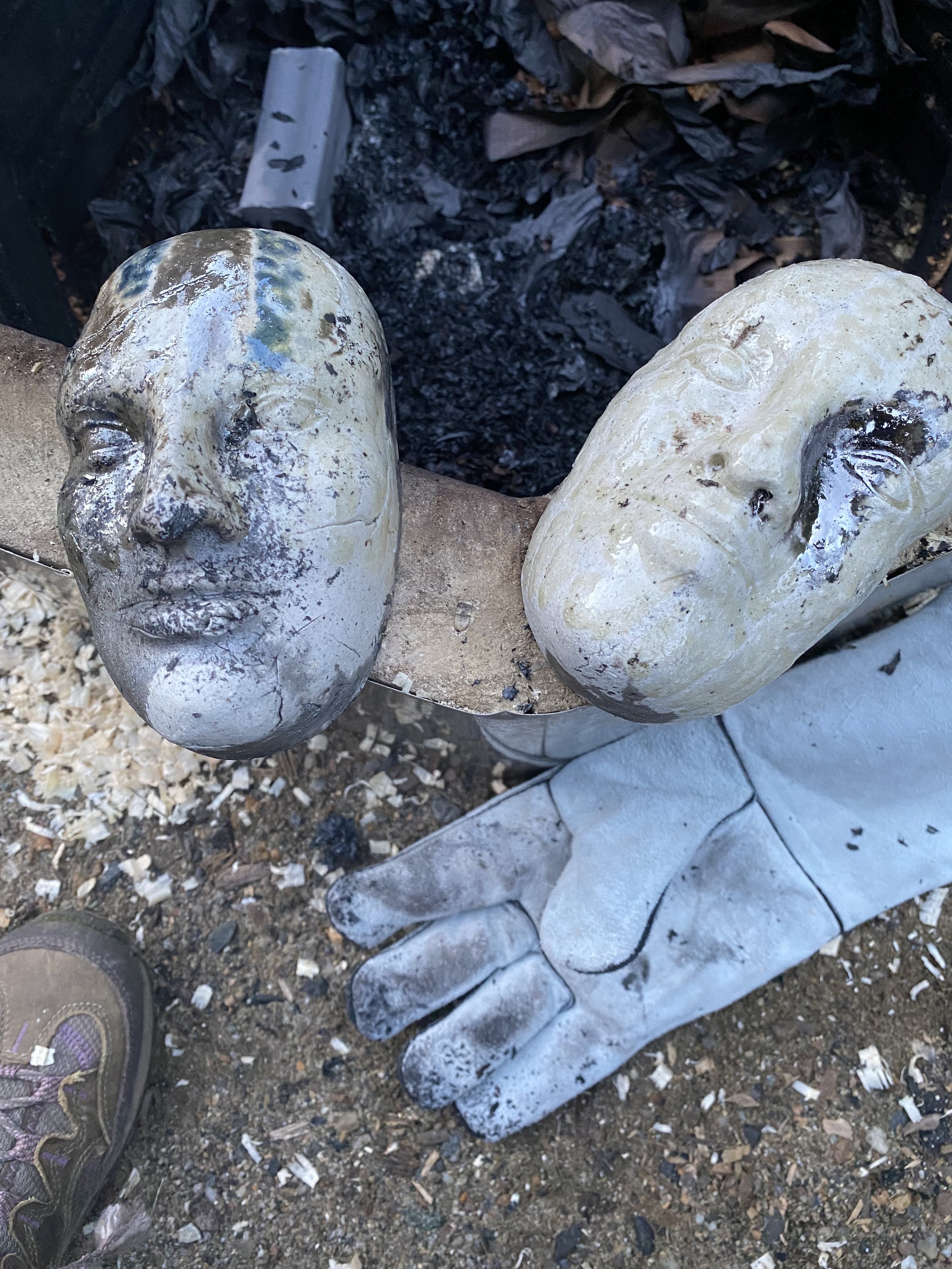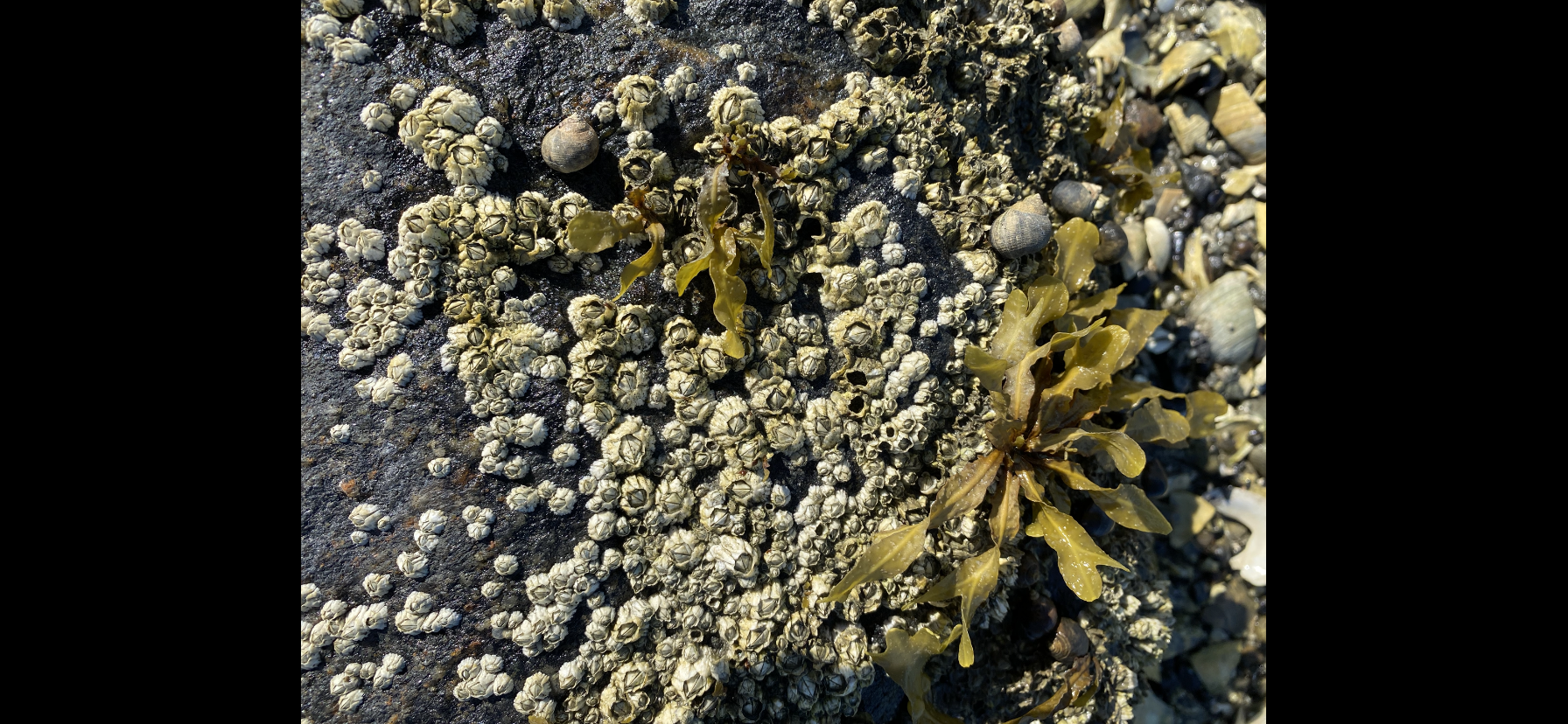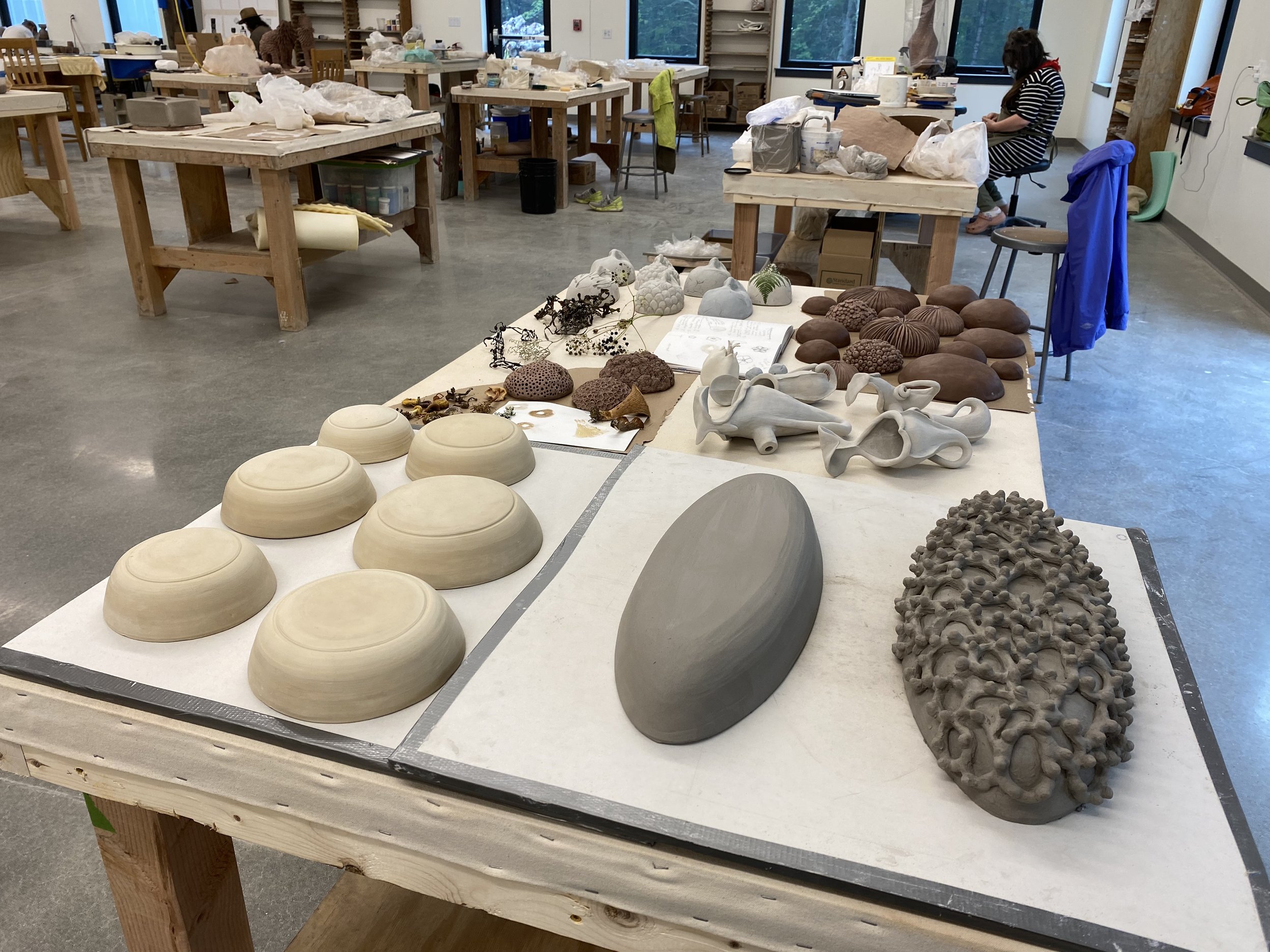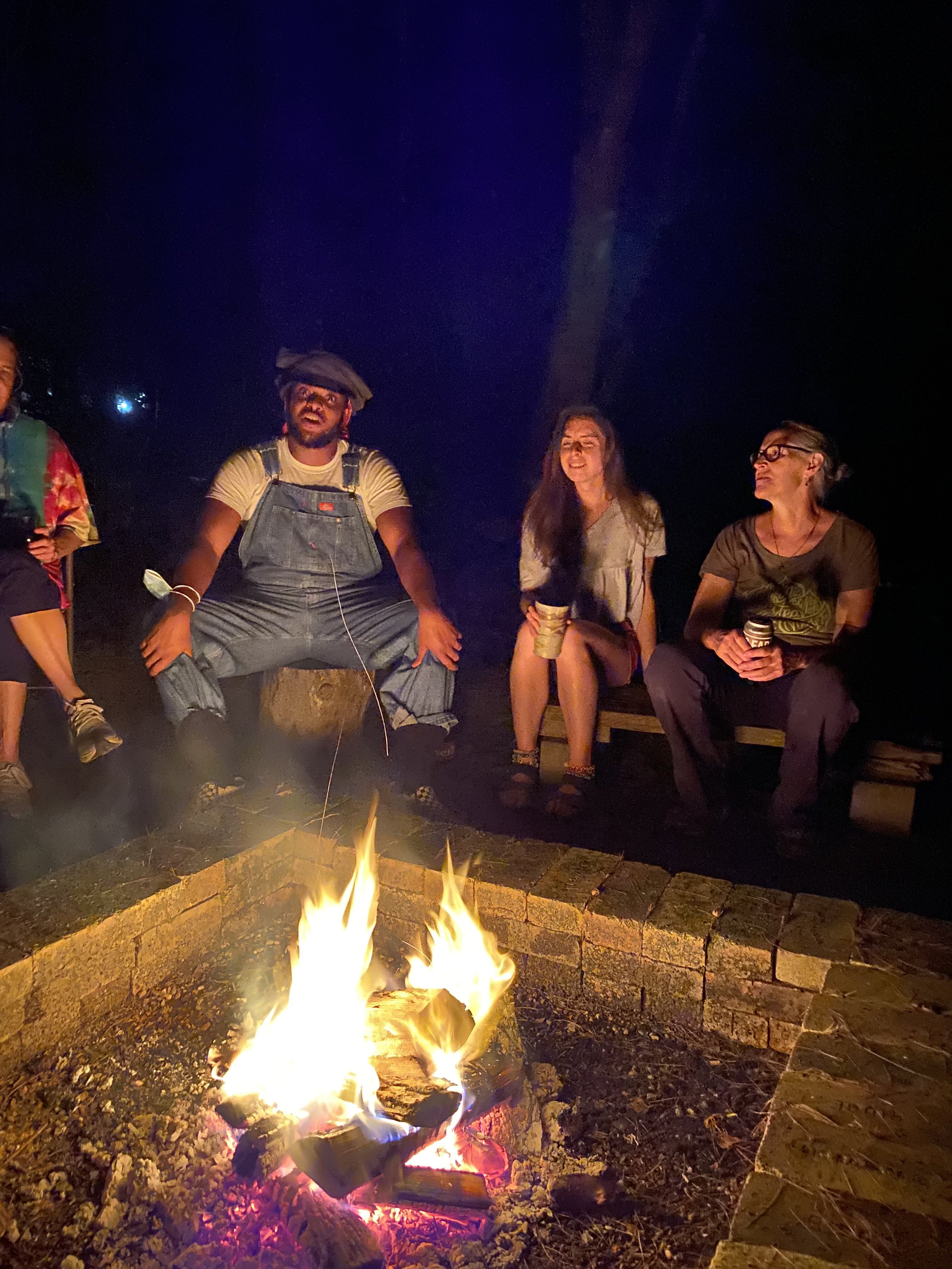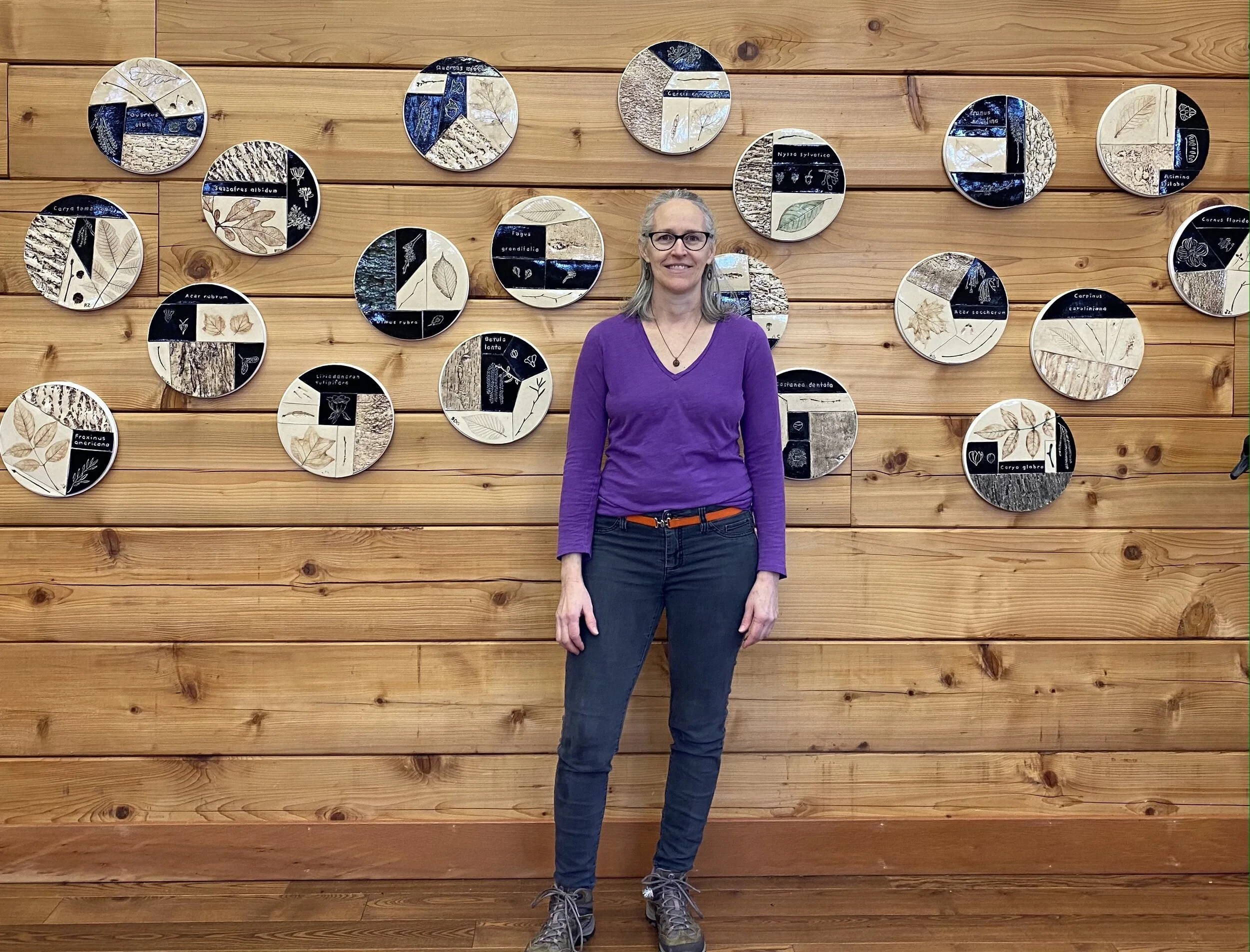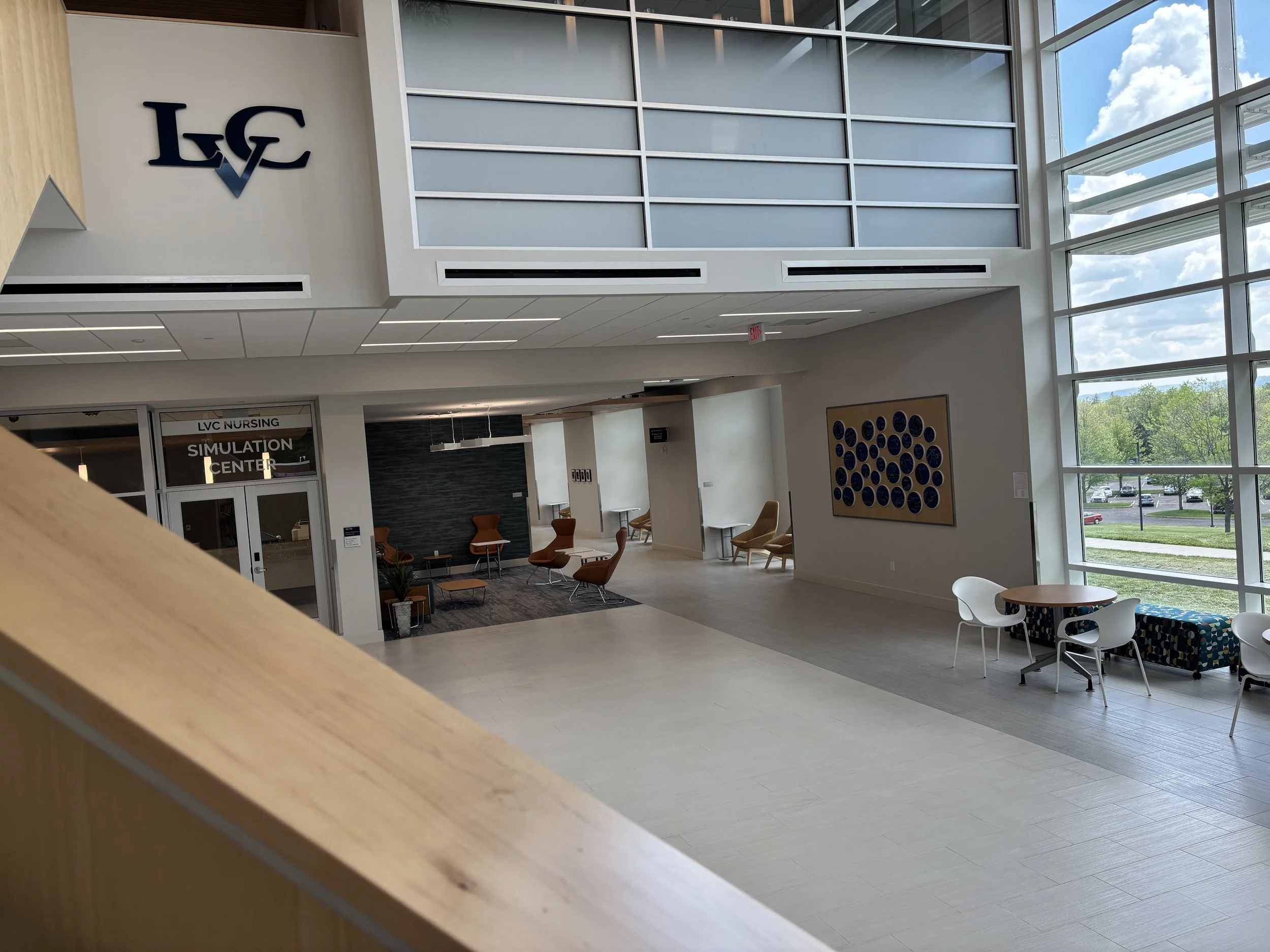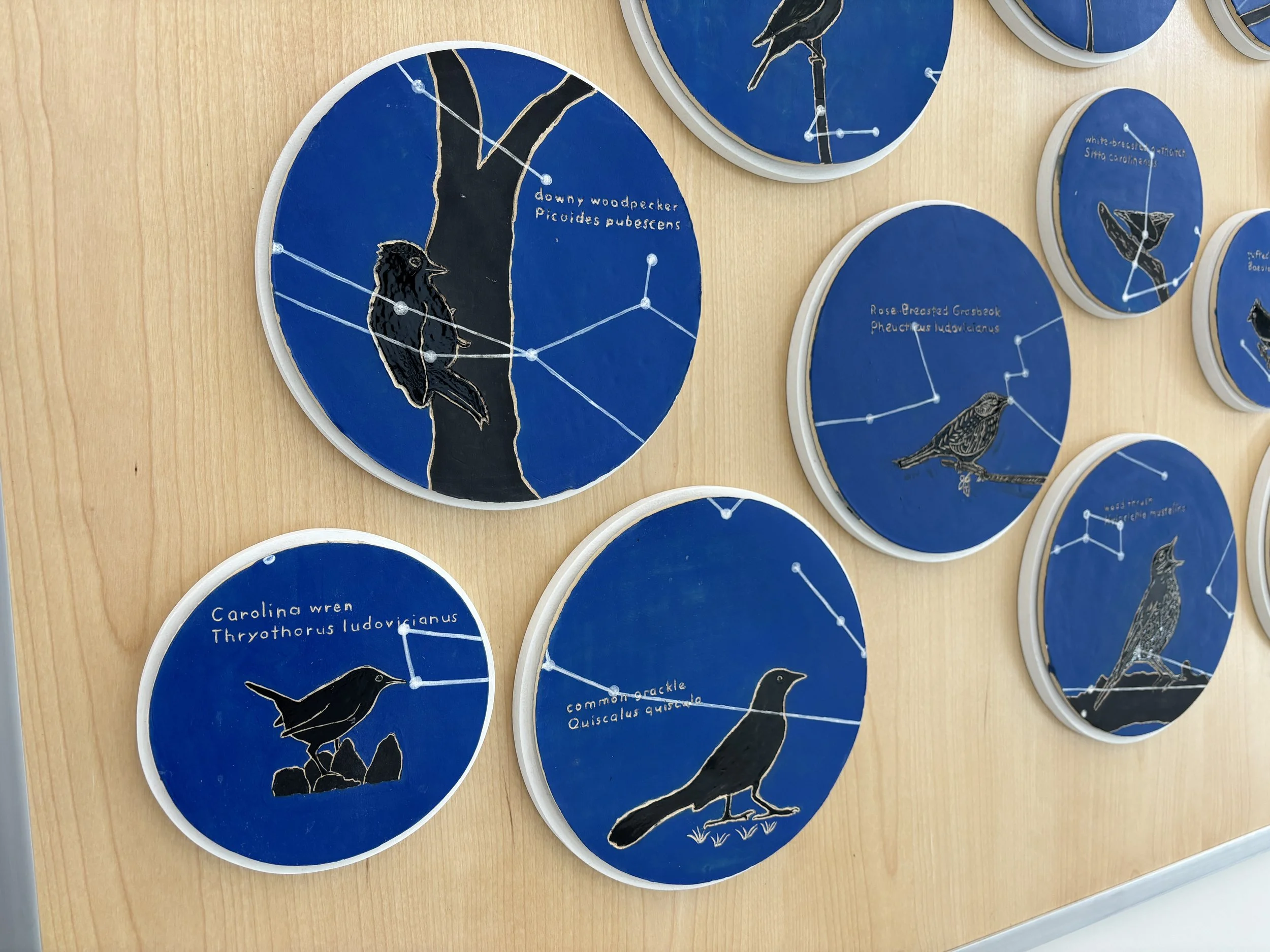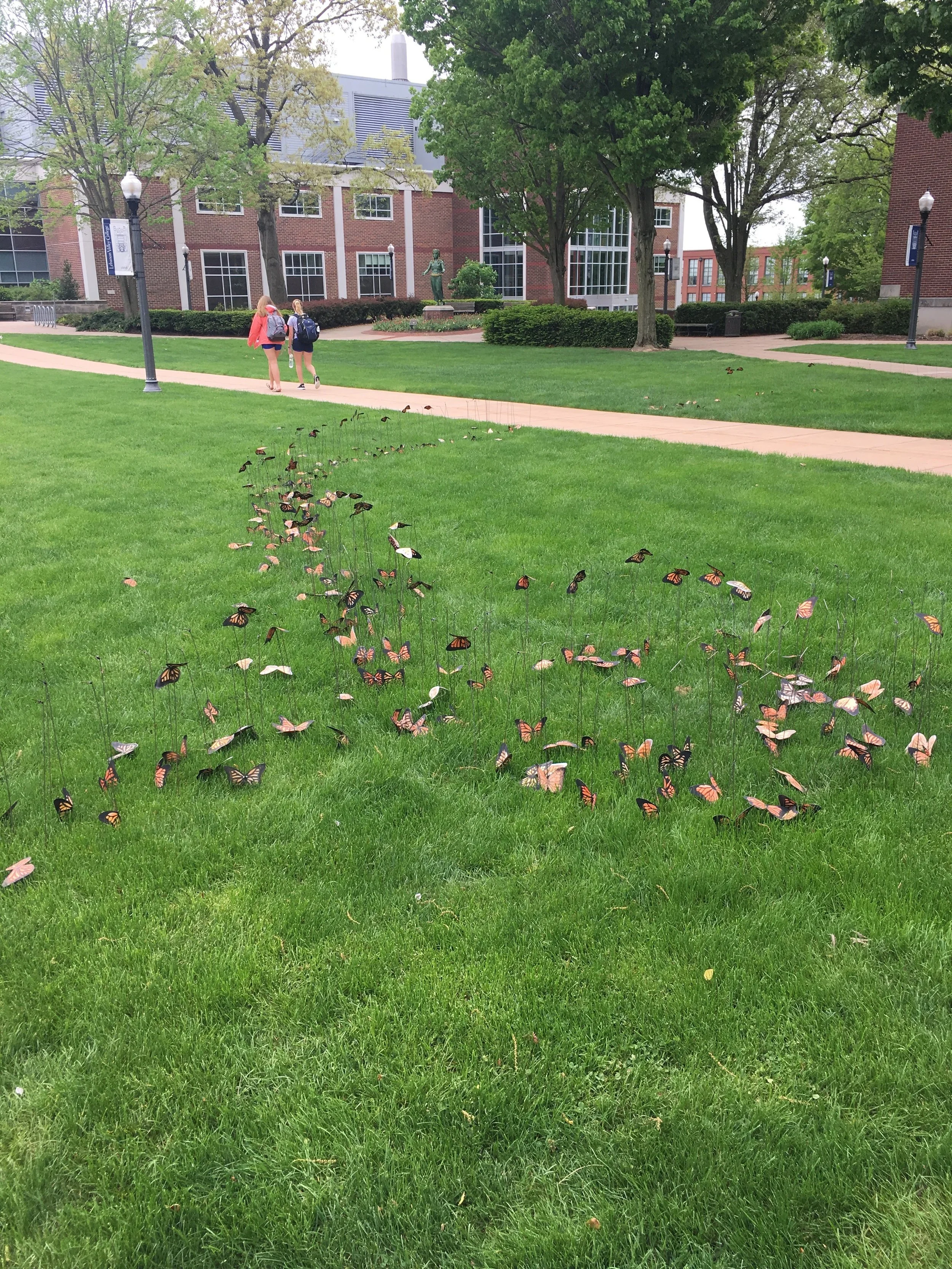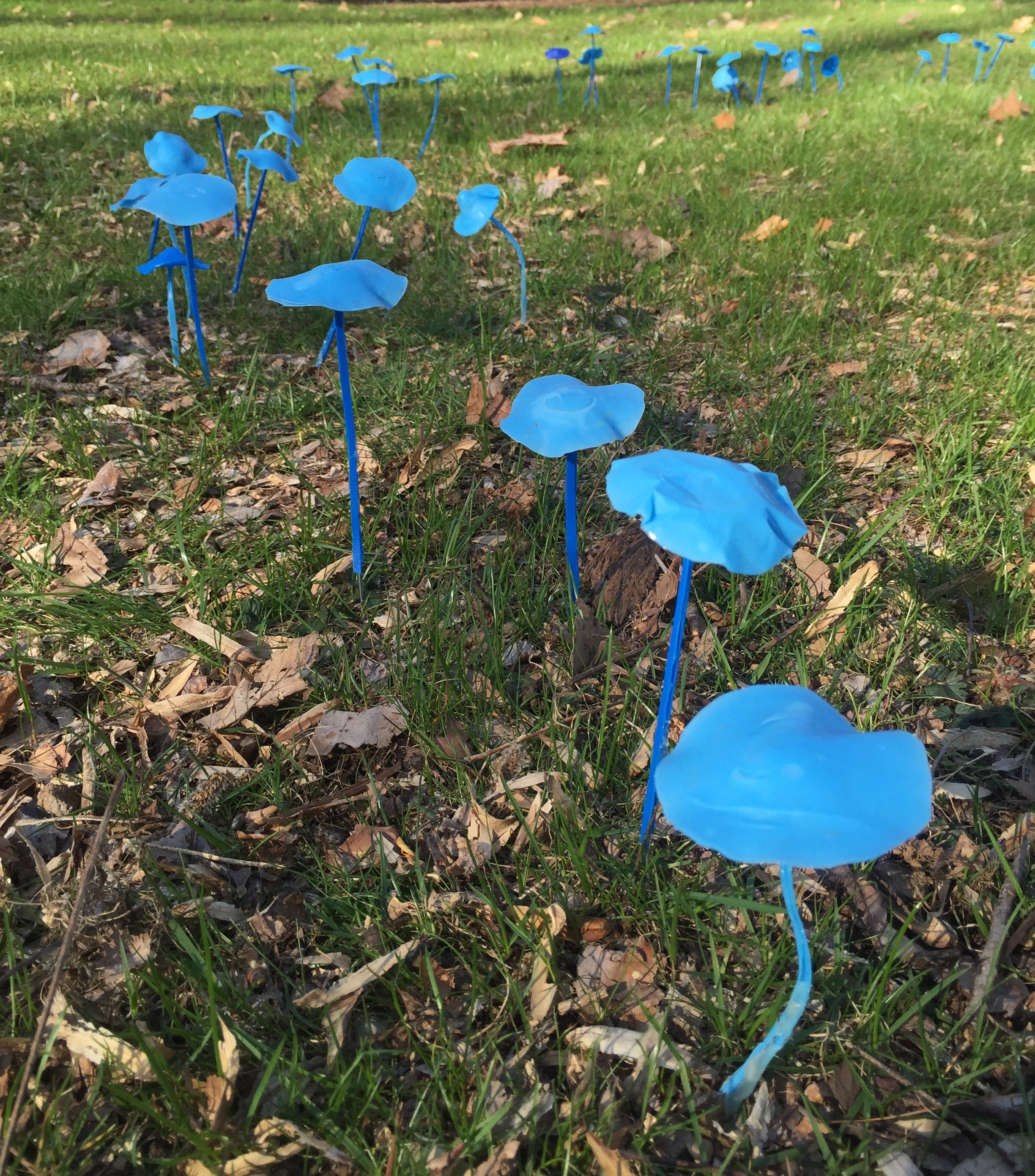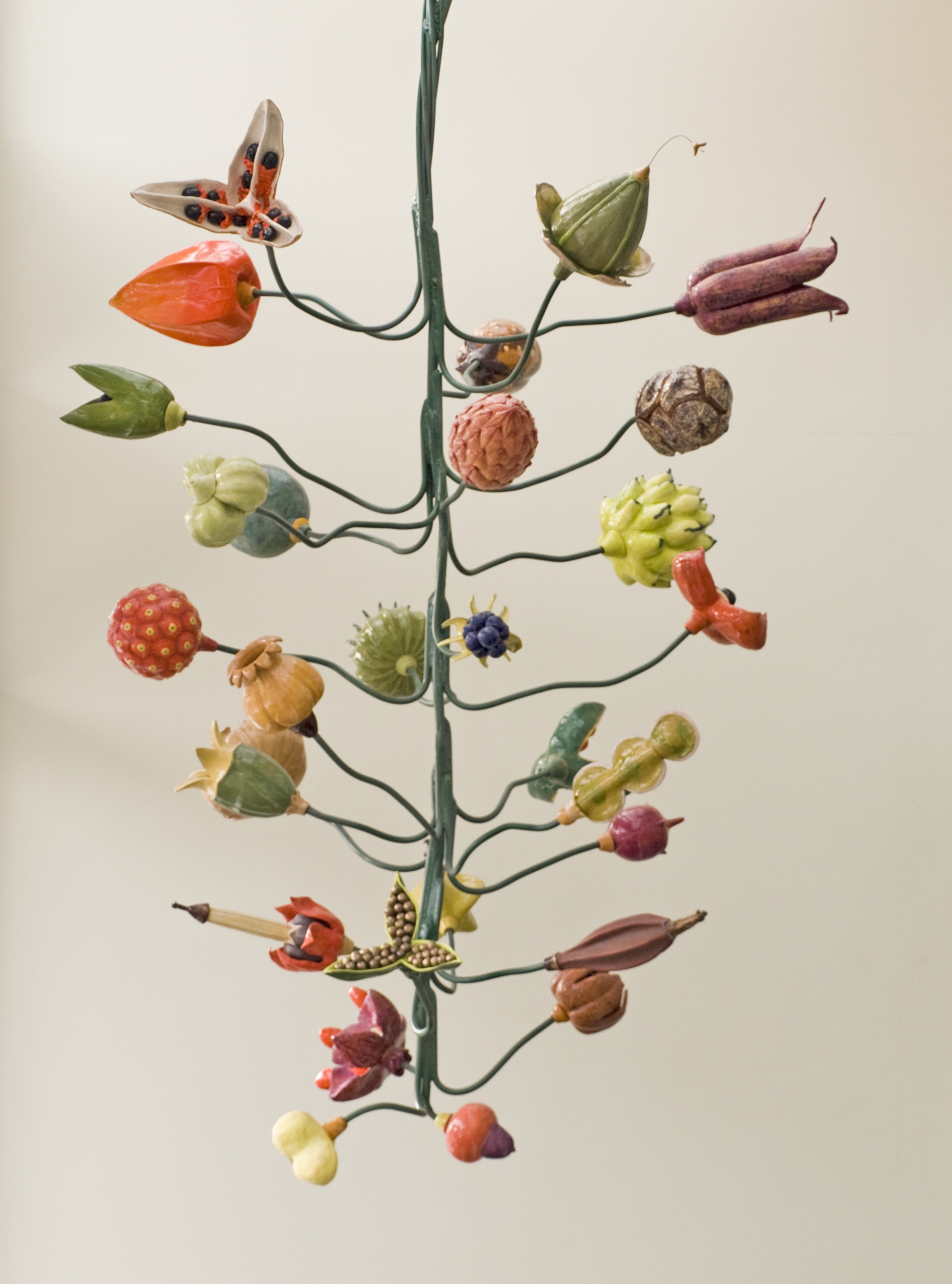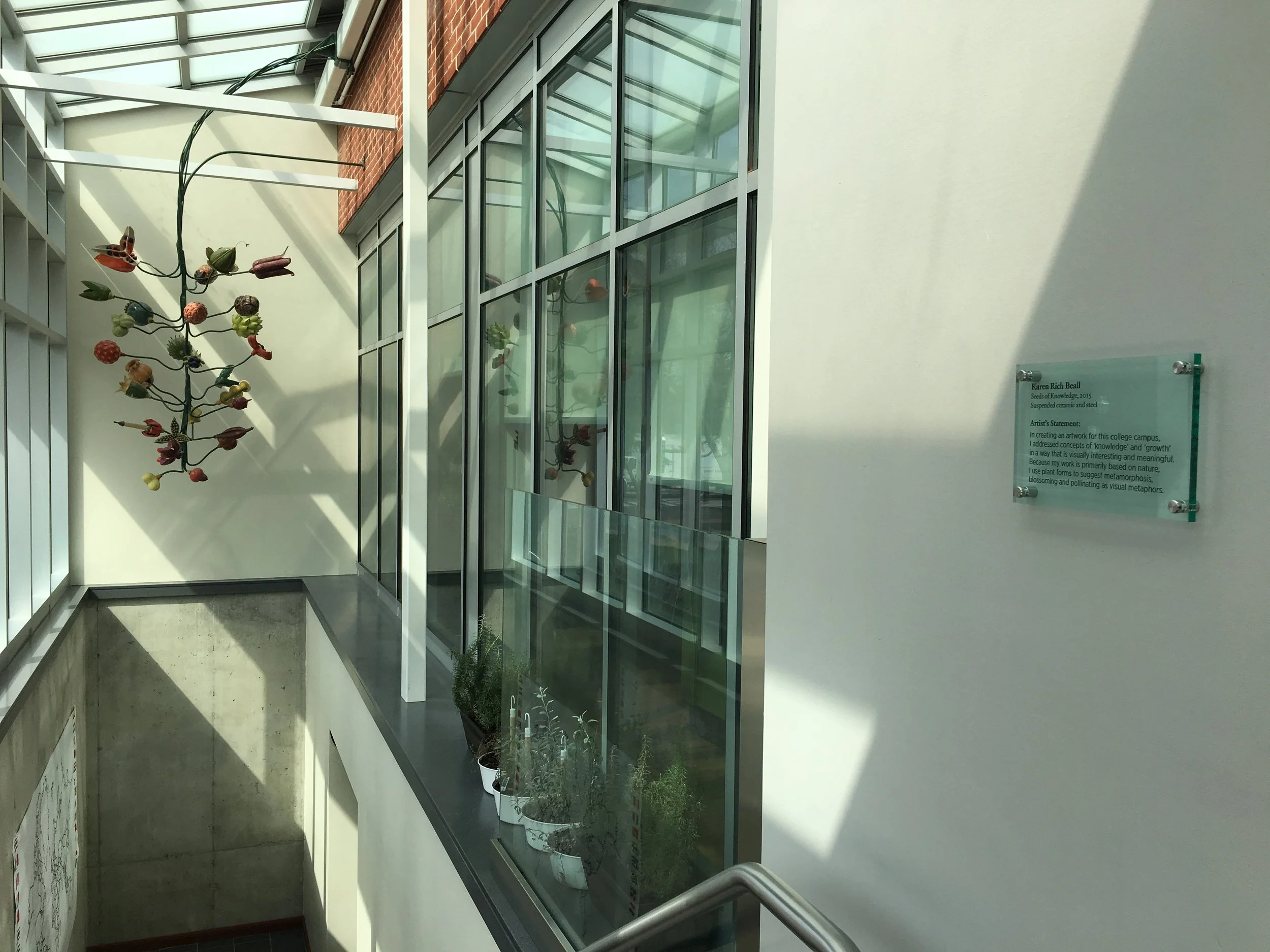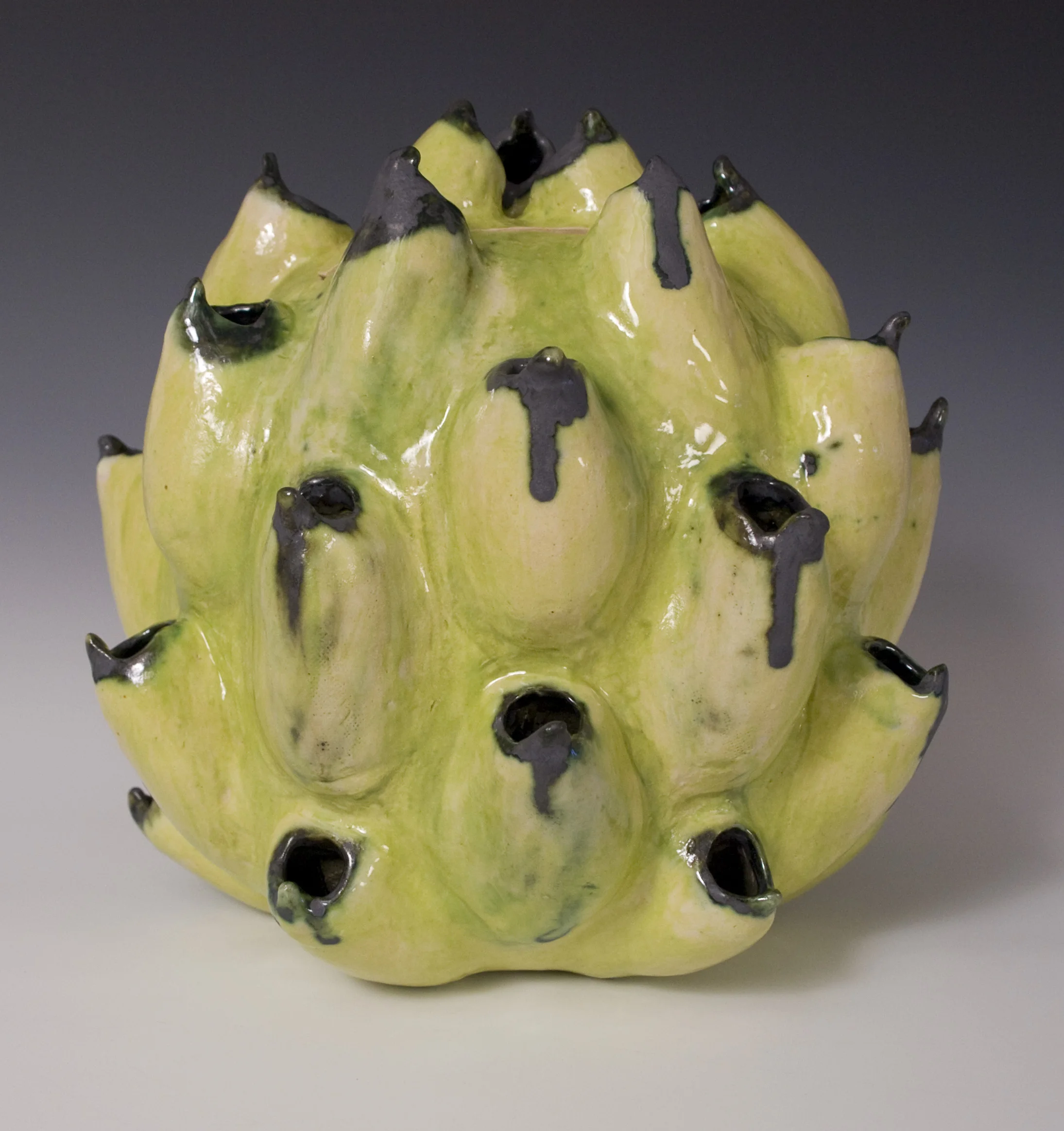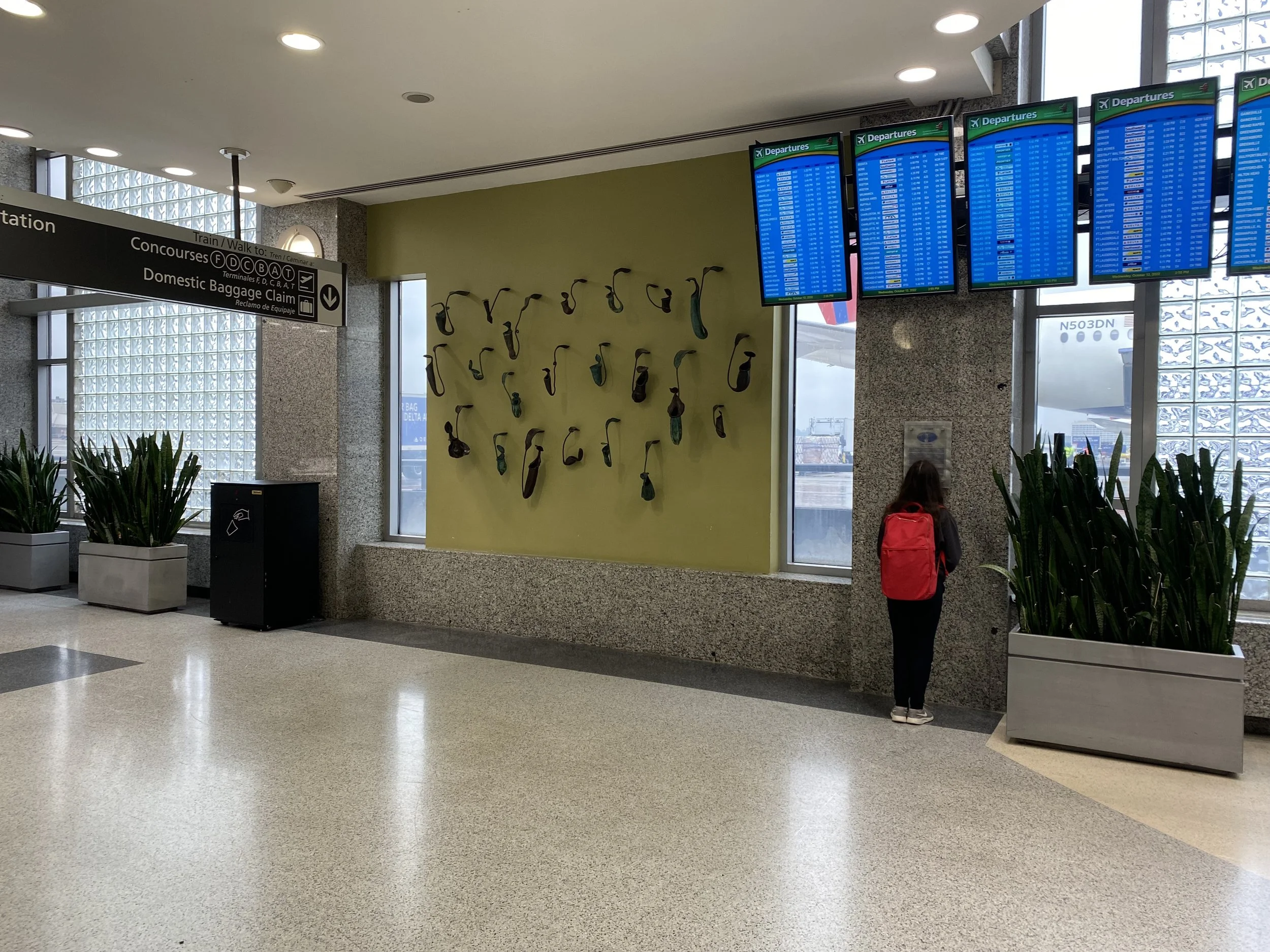Placemaking Mural for Millerstown, Pa with a grant from the Perry County Council on the Arts.
In Progress.
Wall Installation for Private Home (Commission)
Wall Installation for a Private Home (Commission)
Paloma School Tree Identification Project, 2024
Fall 2024 I worked with a Spanish-emersion school to create the Tree Identification Project for the sanctuary on their campus in Lebanon, PA. at the school I met with the 5-12 graders to discuss the project and to practice the impressing and sgraffito techniques we would be using. Then we met at Governor Dick Park and created the pieces using the trees in the park as our sources. A week later the pieces were bisqued and ready to glaze back at the school. Then I attached the finished pieces to wooden boards for hanging. And finally, I hung the pieces in the sanctuary.
Mushroom Identification Project, 2024
Fall 2023 students in my Art for a Changing World: Studies in Environmental Art—a course as the Humanities component of the Connective Experience, “Web of Life”— indulged my interest in mushrooms to assist me in creating this ceramic tile installation. Students did the research of the various keys that are used to identify the selected fungi. This installation was created to help people understand and appreciate mushrooms as wildlife. Illustrating some of the most commonly encountered and characteristic species you might find growing in central Pennsylvania.
The mushrooms are displayed in terms of identifying characteristics based on where their reproductive spores are located. The Basidiomyces, agaric, gilled mushrooms are simply described by gill color, gill attachment to stem, cap color, stem color and stem diameter. The other mushrooms are Ascomyces. They are described by their shape, overall color, spore surface texture, overall size.
Mushrooms are described in terms of the cap, gills, stem, veil and mycelium. Mushroom species start fruiting in warm, damp weather. In the northeast they are found in late April until the first hard frost in the fall.
Things to consider when identifying mushrooms include: what type of tree it’s growing on or near; whether it is growing by itself, scattered, or in clusters; the smell; the color of the cap, stem, gills, pores, or teeth. Also observe the weather conditions, the type of forest; the cap shape, color, texture, size; the stem; the surrounding plants; and surrounding wildlife. (pg 13 Peterson’s “Field Guide of Mushrooms of North America”)
Fungi didn’t become their own kingdom until 1967 before that it was in kingdom plants. It is estimated that there are between 22.2 and 3.8 million species in Kingdom Fungi. Only about 120,00 species of fungi have been described to date—less than 10% of the total number of fungi. Mushrooms go by different common or colloquial names in different regions and that scientific knowledge of fungi species and classifications is evolving rapidly.
Fungi can help save the world! They help tackle current-day challenges such as climate change, biodiversity and food insecurity. Mushrooms have the potential to break down and absorb toxic chemicals, as well as biological and industrial waste from the environment they also help fight disease, plastic pollution and climate change.
Quilted Cultures, 2023
For my spring 2022 Ceramics Studio class at Lebanon Valley College the focus was for the student’s to design and create a mosaic tile mural about diversity, equity and inclusion on campus. I taught the class along with my friend and mural artist Michaelanne Helms.
The students started by developing surveys to poll the faculty, staff and students about the theme of diversity, equity and inclusion. They also met with different campus clubs and individuals that were willing to share their points of view. The data gleaned from the surveys and meetings were used to solidify ideas into visual concepts. With these concepts in mind, students developed public art proposals which they presented to the class and a panel which selected three proposal finalists. The proposal finalists were displayed in the Bishop Library where the campus community voted for their favorite. Amelia Mantione’s proposal of a quilt containing different cultural and social symbols was selected. The class worked together to realize the proposal’s conceptual design into a tile mosaic. The mural was created for an indoor setting and would be installed at a later date so it was constructed on individual panels. Each student chose a clay surface technique and glaze colors for their two tile emblamatas. Once the clay emblamata’s were made, fired and adhered to the panel surface, cut stone tile pieces in various shades of gray were added along with a border of mirrored tiles. The mural was then grouted. The finished mural was installed in the Allan W. Mund College Center in late 2022 and unveiled to the campus community on Martin Luther King day, January 2023.
Bee the Change, 2023
Students in my Art for a Changing World: Studies in Environmental Art—a course as the Humanities component of the Connective Experience, “Web of Life”—created a ceramic tile art installation to bring awareness to the decline of bees populations due to pesticides, drought, habitat destruction, nutrition deficit, air pollution, and global warming. The students created hexagon shaped tile pieces to form a bee hive effect once installed. Bright colors of native wildflowers of Pennsylvania were painted on the leather hard clay surface and wax resist was applied over that. Then the students traced outlines of flowers over top creating and embossed line. The line was then removed to reveal the raw clay underneath. Black underglaze was applied to the lines and cleaned with a sponge leaving just the outline of the flower. I applied a clear glaze later.
Cornwall Elementary “Art in the Garden” Tile Project 2022
To bring art into the garden and to promote healthy eating, 120 Fifth graders etched garden designs in leather hard clay. The completed tiles were hung on the chain link fence that surrounds the school garden.
Artist’s Residency at Watershed Center for the Ceramic Arts Newcastle, Maine Summer 2021.
Forest Fable: A project for Governor Dick
In fall 2019 I received a grant from the Mt. Gretna Arts Council to be the Artist-in-Residence for the Clarence Schock Memorial Park Environmental Center at Governor Dick Park.
I proposed to the Arts Council two projects that would engage the community and expand the park’s audience through the intersection of art, science and nature. The projects will be completed over the course of one year to showcase the park in multiple seasons. For the first project I will design, implement, and install one project with community members for the Environmental Center. For the second project community members will create a small ceramic memento to take home.
The “Forest Fable” project hosts twenty people that are divided into two groups of ten. We will meet at the park’s Environmental Center where I will explain the project in detail and assign a tree to each participant. Then we will go on a hike with biologist Dr. Rebecca Urban, a friend and colleague from Lebanon Valley College. Dr. Urban will discuss the various ways to identify trees, highlighting 20 species found in the park. She will examine the various characteristics--bark, leaf, fruit, leaf bud/twig, and flower—that help identify each tree species. Along the hike, each participant will make a clay print of the bark of their tree.
Once back at the center, the participants will create a composition of the identification markers in a 12-inch diameter circular format. Each participants circle will include: the botanical name of the tree, a bark print, leaf print, a fruit print, a leaf bud/twig print, and the flower. The elements that are not available to us in the woods at this time of year—such as the flower or fruit—will be represented by a botanical line drawing using a clay surface technique called “sgraffitio.”
After the two groups create the ceramic pieces, I will take the art to my studio and do an initial firing in a ceramic kiln. A week later the participants will come back to glaze their pieces.
The ceramic pieces will be fired in the kiln again to set the glaze. Over the winter, I will mount each participant’s work on circular wooden boards and install the finished pieces in the main room of the Environmental Center for the public to enjoy.












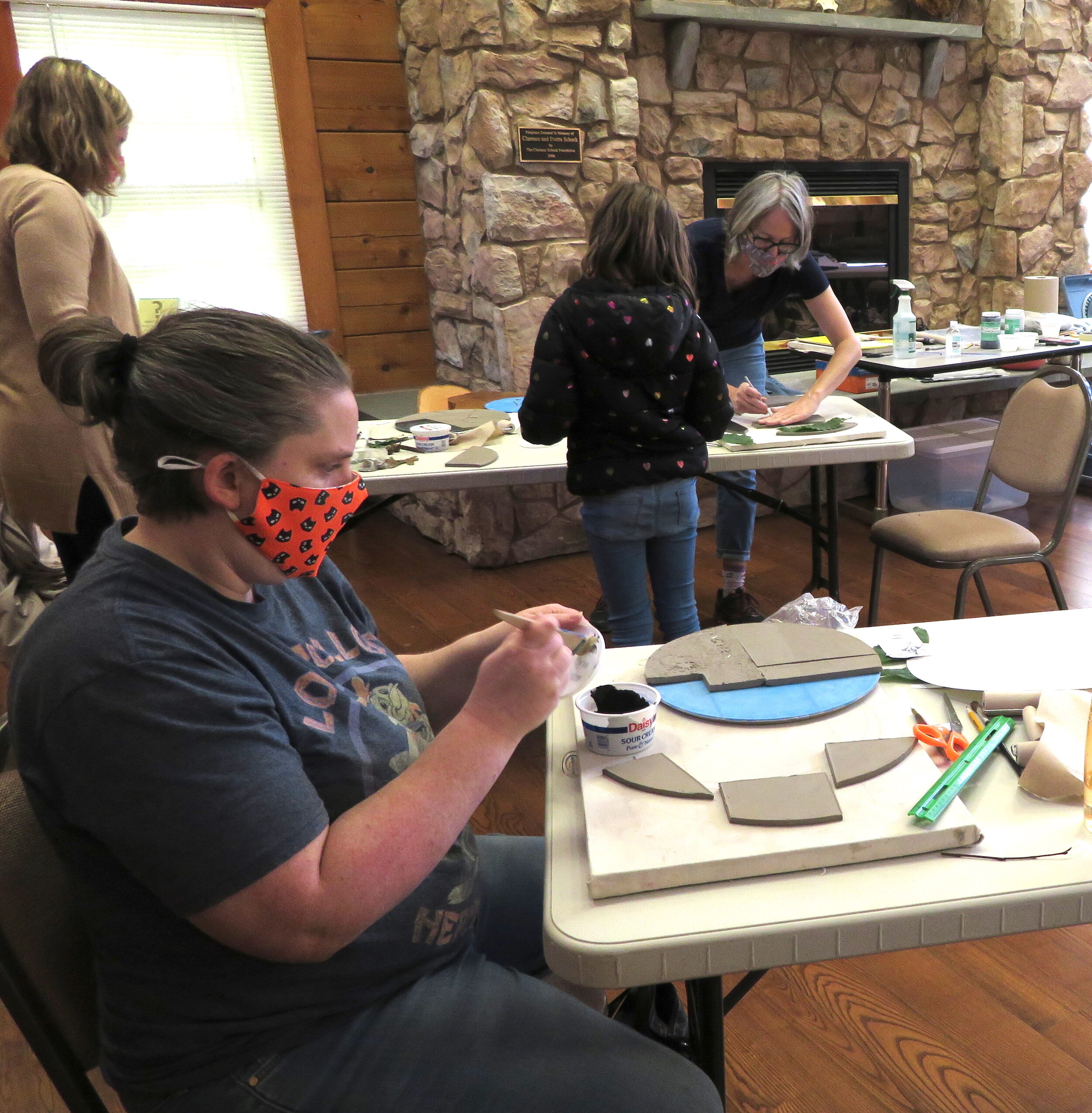















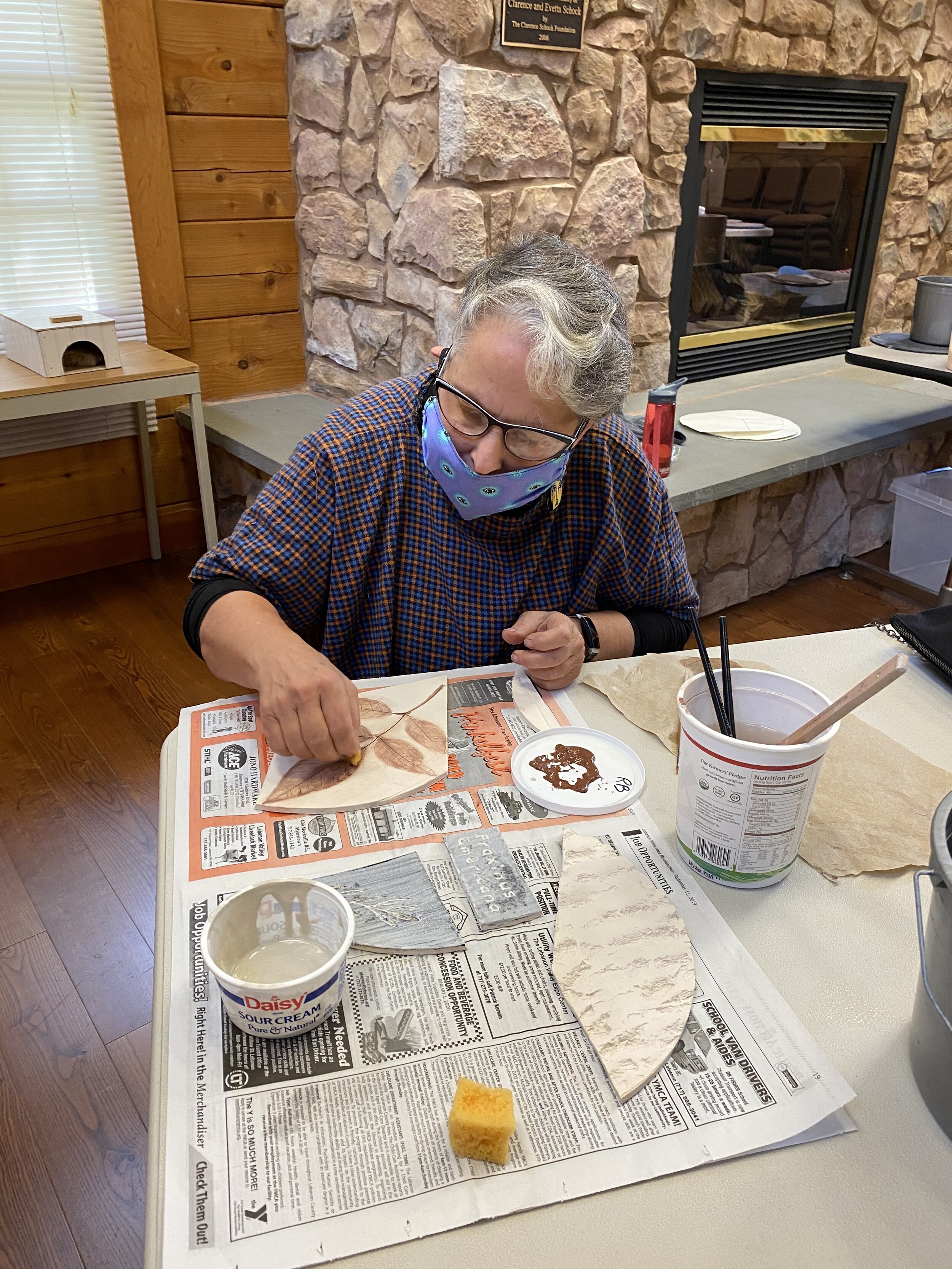






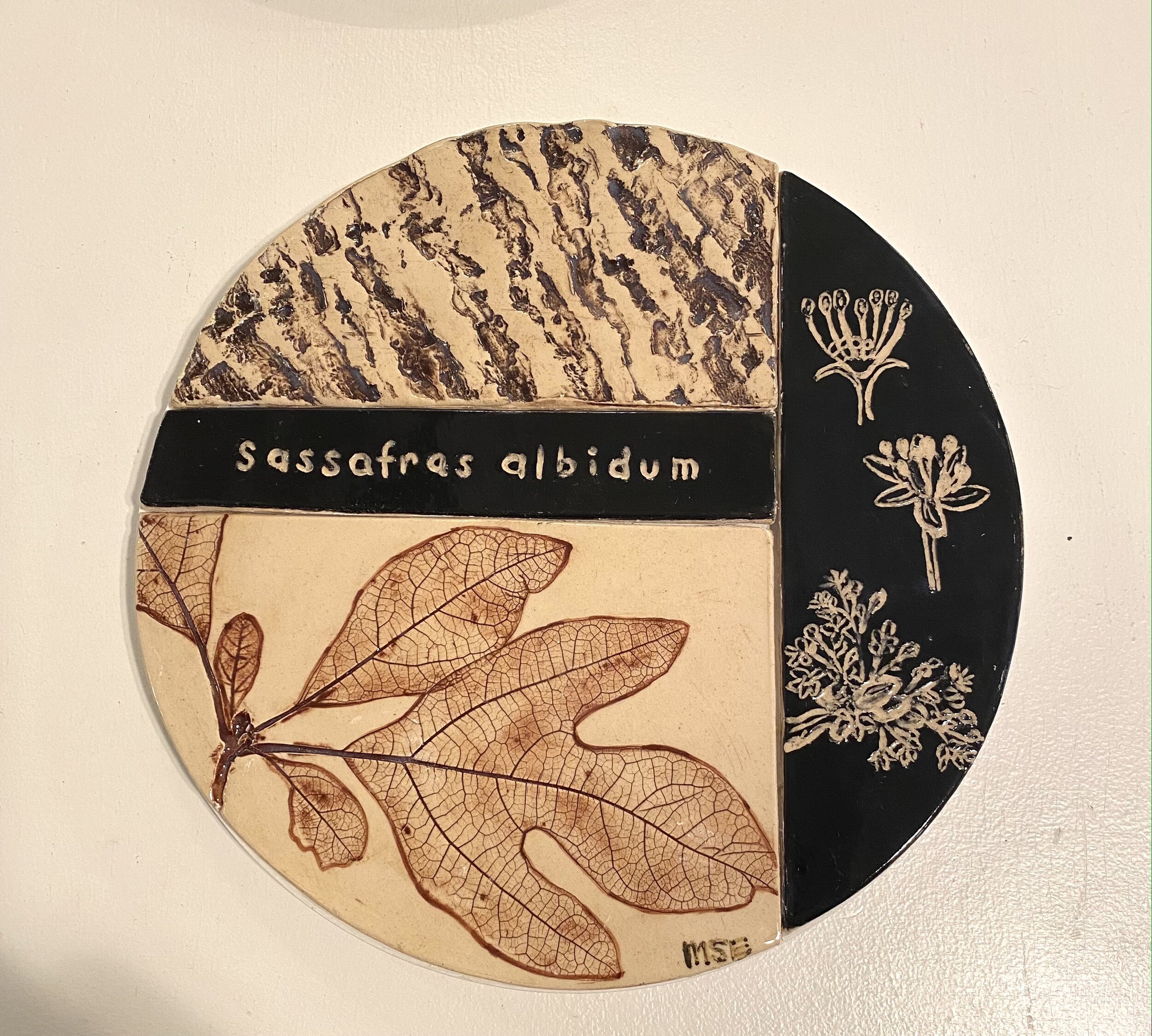
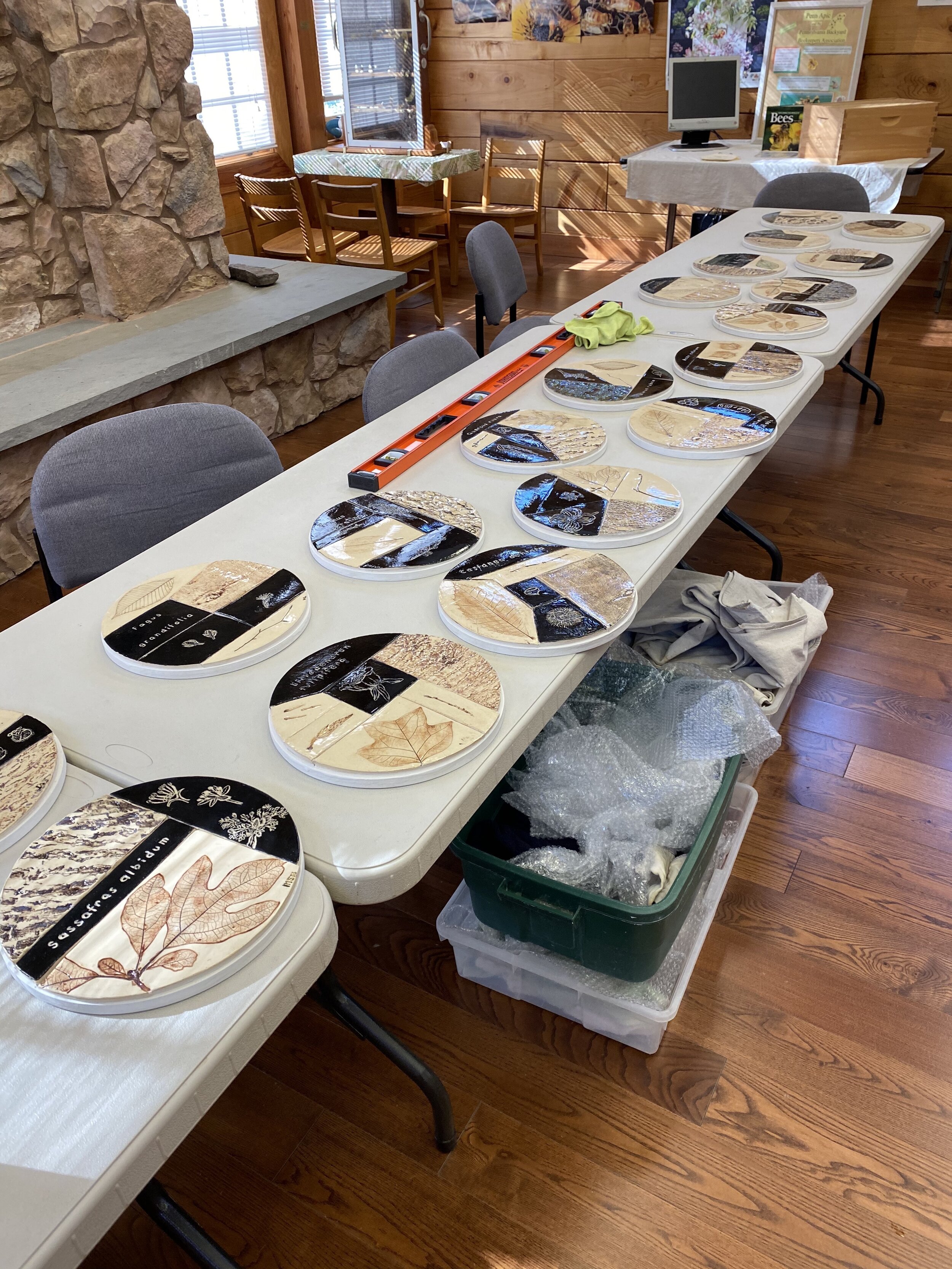
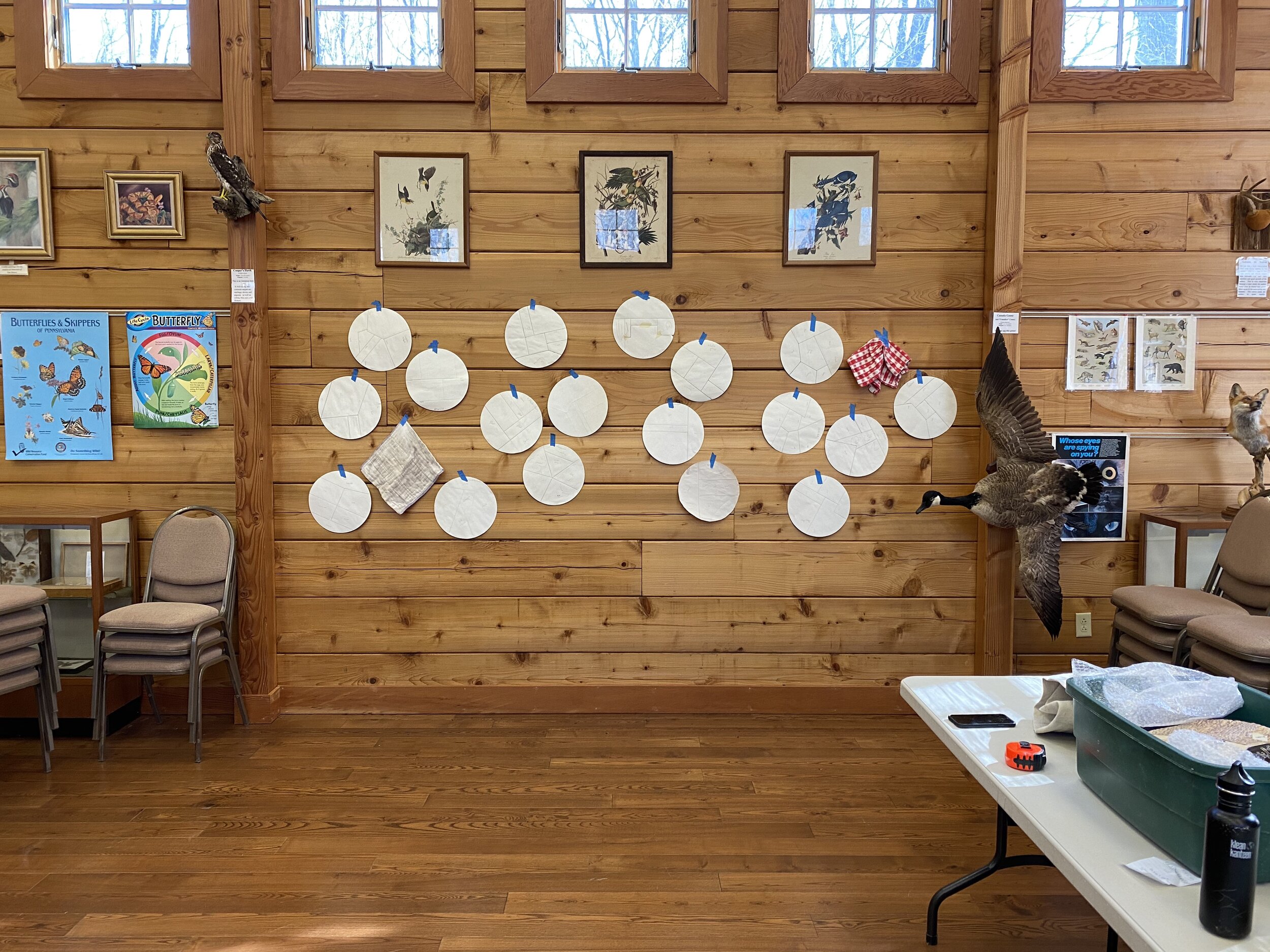
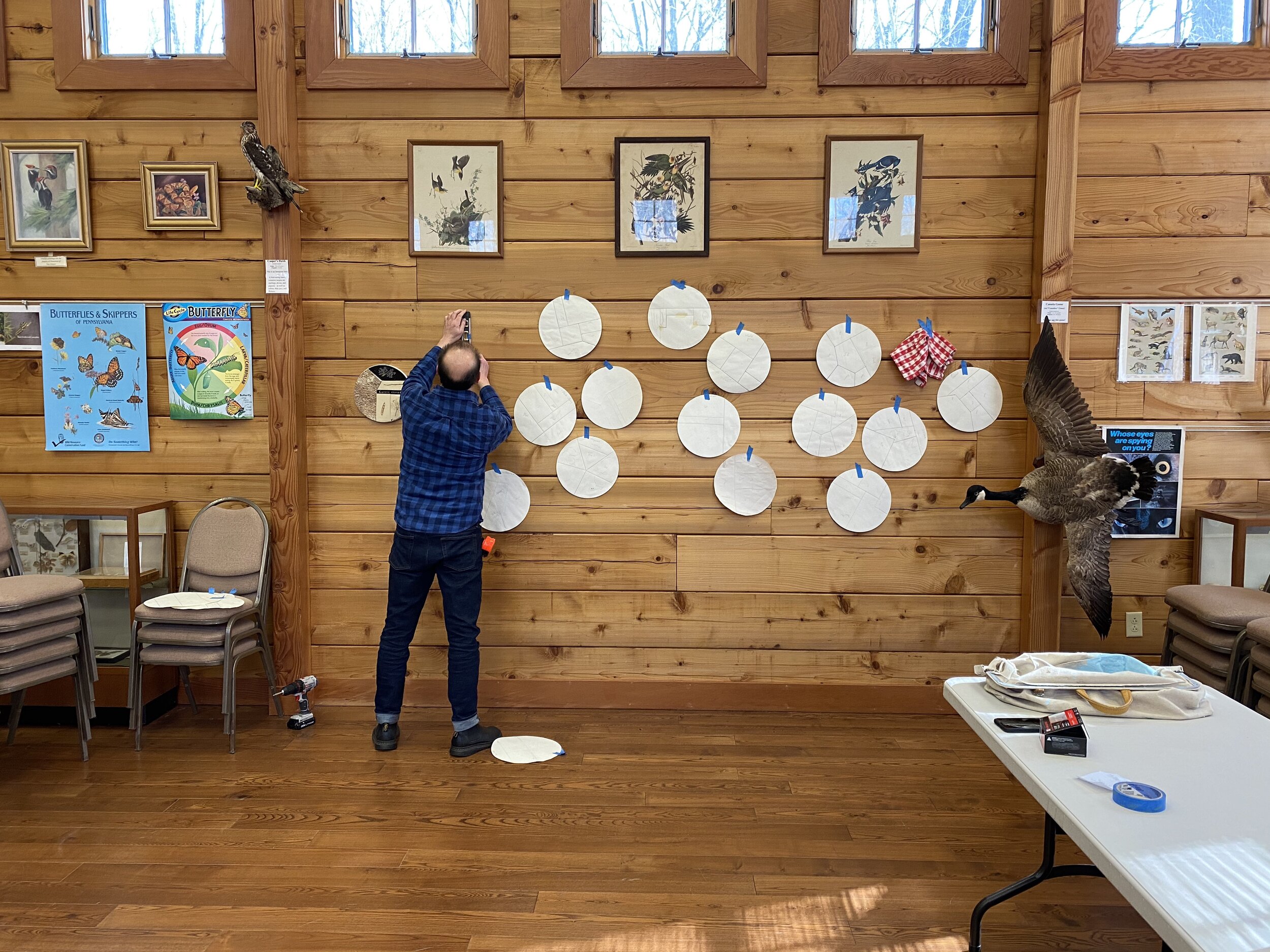
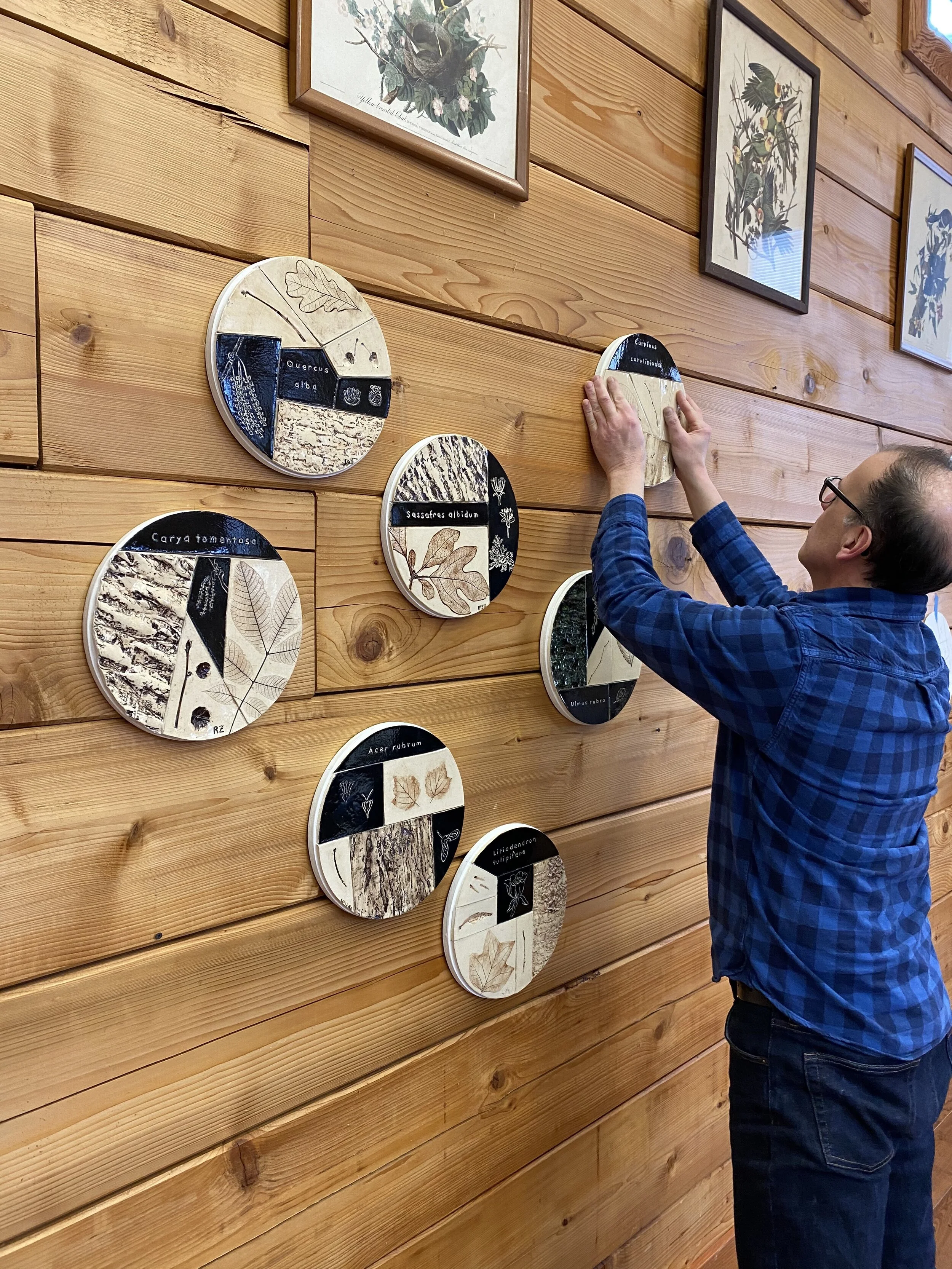
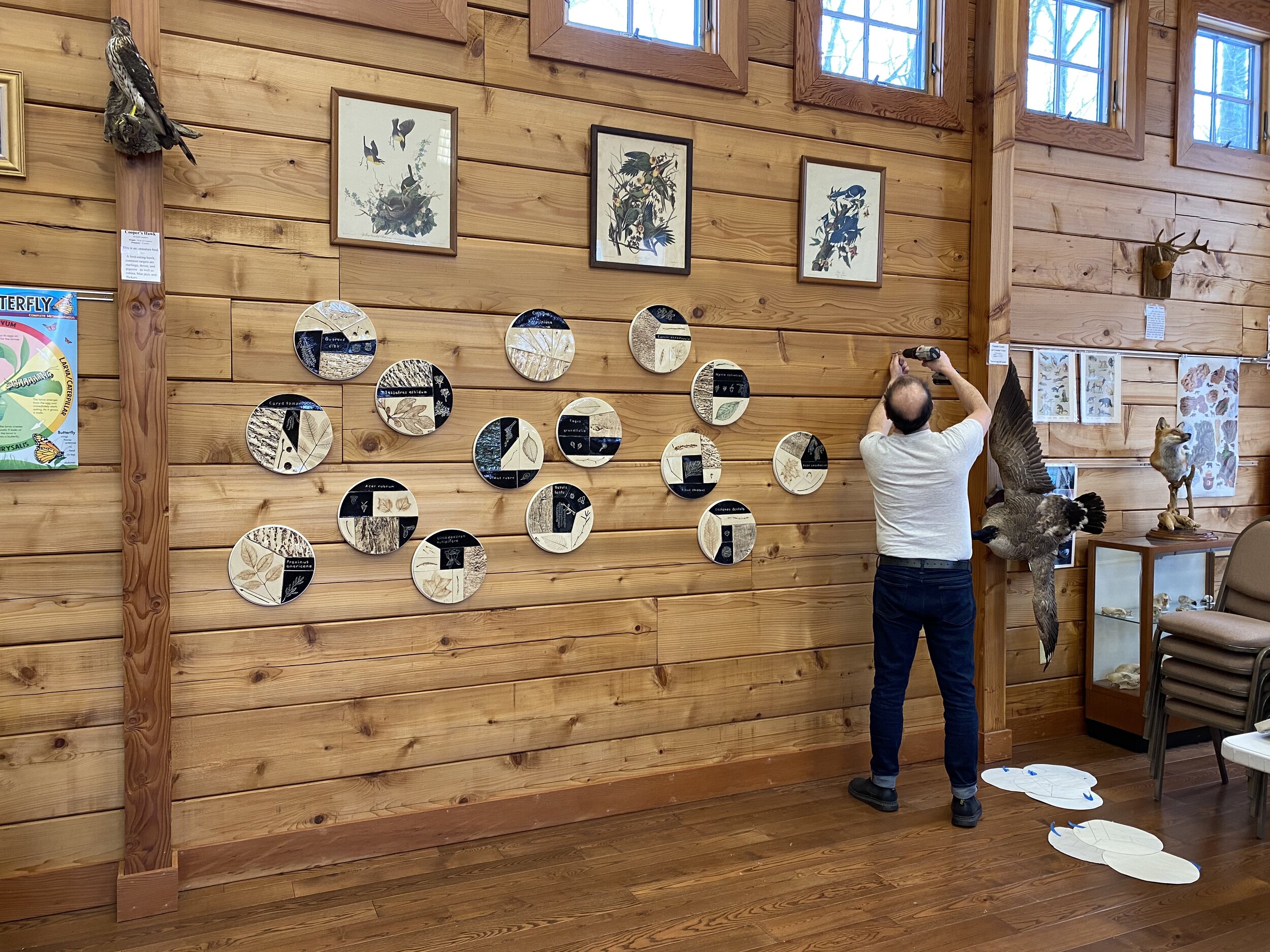

Birds of the Wood Thrush Preserve, 2021
In the early spring of 2020, students in Karen Beall’s in Art for a Changing World: Studies in Environmental Art—a course as the Humanities component of the Connective Experience, “Web of Life”—created a ceramic tile art installation. The students created line drawings (a technique called sgraffito), on clay tiles of individual birds, along with their scientific and common names of birds found in the Wood Thrush Preserve on the Lebanon Valley College campus. The birds are depicted in glossy black silhouette on a matte electric blue background reminiscent of dusk light. The tiles also contain white dots and lines that represent constellations which reflects the migratory nature of birds. The installation was created to bring awareness to the fact that two-thirds of North American bird species are at risk of extinction from climate change. The primary cause of species decline are the loss, fragmentation and degradation of habitat. Understanding the reason for population changes in migratory species requires careful consideration of conditions in all the places where the species spends part of its life. It was installed in the Nursing Education Building on the campus of LVC, Annville, PA in Spring 2024.
Mandala, 2018
Artwork composed of found organic and man-made objects created by my Sculpture class at Lebanon Valley College for Earth Day.
